The Little Prince: Manuscript and Drawings
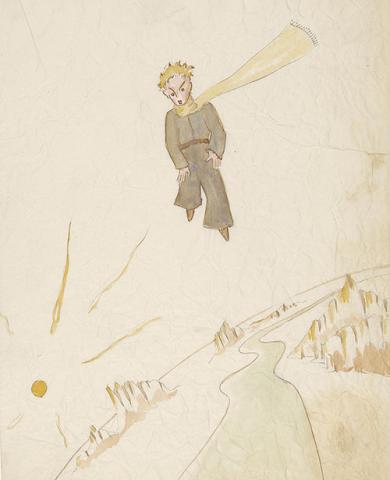
How does a story begin? French author and aviator Antoine de Saint-Exupéry (1900–1944) came to New York in 1940, a few months after Germany invaded France. In 1942, at the height of the Second World War, he crafted a tale about an interstellar traveler in search of friendship and understanding. The bulk of the surviving working manuscript pages and preliminary drawings for The Little Prince are in the Morgan’s collection and presented here. They reveal the stops and starts, decisions and excisions Saint-Exupéry made as he created what has become one of the world’s favorite books.
The manuscript
The Morgan manuscript of The Little Prince is an extraordinary physical record of the author’s creative labor. Saint-Exupéry often wrote late into the night, a cigarette in his mouth and a cup of coffee or tea on hand. He thrived on the responses of those he trusted, thinking nothing of calling a friend at two in the morning to read a few pages aloud. He drafted The Little Prince on a thin paper manufactured in western Massachusetts. The watermark, which is visible when the sheets are held up to the light, reads Fidelity Onion Skin. Made in U.S.A.
Saint-Exupéry generally produced multiple drafts of a single chapter, refining dialogue, wording, and tone. But he also deleted entire passages and episodes, paring the text to its essential elements. After completing an early draft, he would sometimes use a Dictaphone (purchased in New York at the extravagant price of $683) to revise orally before entrusting the work to a typist.
The 140-page preliminary manuscript in the Morgan’s collection does not represent the complete record of Saint-Exupéry’s composition of the text of The Little Prince. He discarded some draft pages as he worked, and a handful of preliminary draft pages have made their way into other collections. He made further revisions, not represented in the Morgan drafts, before submitting the text to his publisher.
The foliation of the Morgan manuscript (marked in the upper right corner of each sheet) begins with f. 2; presumably there was once a cover sheet numbered 1, but it does not survive.
The drawings
Though Saint-Exupéry had made drawings from the time he was a boy and spent a few unproductive months in architecture school when he was twenty, he had no formal training as an artist and had never illustrated a book before embarking on The Little Prince. He was, however, an inveterate doodler. His American publisher had engaged independent artists for Saint-Exupéry’s earlier titles, but the author chose to illustrate The Little Prince himself. He had been sketching versions of the title character in the margins of letters and manuscripts for quite some time.
The Morgan drawings—mostly ink and watercolor with some pencil—differ dramatically from the published illustrations. Some were excluded from the book altogether; most were substantially reworked; a handful were published with minor revision. In addition to the 35 full-page drawings in the Morgan’s collection, eight pages of the manuscript (p. 2, 4, 5, 9, 19, 41, 140, 141) incorporate sketches.
Publication history
This preliminary draft contract for The Little Prince was drawn up in November 1942, just after Saint-Exupéry had finished writing the story, and went through several revisions before it was finalized in January 1943. The publisher, Reynal & Hitchcock (whose offices were located on Park Avenue near Fifty-Fourth Street), granted the author a $3,000 advance for two books, The Little Prince and a second volume (never completed) about France’s place in the modern world.
The Little Prince was first published in New York, in both English and French, in April 1943. Although Reynal & Hitchcock had published Saint-Exupéry’s earlier books in English, this was the first and only time it issued one of his works in the original French. But World War II had upended the European publishing industry.
The first editions of The Little Prince appeared in near-identical volumes, both priced at $2, though the type of the English-language edition is slightly smaller than that of the French. The translation, made by journalist Katherine Woods, comprises some 17,000 words—3,000 more than the French original. Saint-Exupéry took a strong hand in the layout, stipulating the position, size, and captions for the illustrations.
Just as The Little Prince went into production, Saint-Exupéry learned that he would be redeployed with his old air force squadron, the 2/33 Reconnaissance Group, under Allied command. He took leave of friends and sailed for North Africa carrying a single copy of the newly printed French-language edition. On 31 July 1944, he took off from Corsica on a lone reconnaissance mission over southern France. Like the little prince, who disappeared without a trace from the Sahara, Saint-Exupéry never returned. Just weeks later, Allied troops marched into Paris. The liberation of France was at hand.
The French publisher Gallimard, with offices in German-occupied Paris, would not release its own edition of Le petit prince until 1946. Saint-Exupéry did not live to see his work appear in his native country.
Provenance
Saint-Exupéry wrote much of The Little Prince in a house that he and his wife, Consuelo, had rented on the north shore of Long Island during summer 1942. But he also spent many hours writing at the Upper East Side apartment of his friend and lover Silvia Hamilton (later Reinhardt), with her black poodle as a model for the sheep and a mop-top doll standing in for the title character.
As he prepared to leave the city to return to wartime service, Saint-Exupéry appeared at Hamilton’s door wearing an ill-fitting military uniform. She later recalled that he said, “I’d like to give you something splendid but this is all I have.” He tossed a rumpled paper bag on her entryway table; inside were the manuscript and drawings for The Little Prince. Over the years, Silvia (Hamilton) Reinhardt gave a handful of the sheets to friends and family, but she sold the bulk of Saint-Exupéry’s preliminary manuscript and drawings to the Morgan in 1968.
Credits
Introduction by Christine Nelson, former Drue Heinz Curator of Literary and Historical Manuscripts, 2021. The Morgan is grateful to Stacy Schiff for her scholarship and advice, to Dr. Ruth Kraemer for her scholarly work on the manuscript, and to Olivier d’Agay of the Succession Saint-Exupéry-d’Agay for his longtime support. A published facsimile of the manuscript, with a full transcription of the French, edited by Alban Cerisier and Delphine Lacroix, is available from Gallimard.
This digital facsimile is presented with permission of Gallimard and the Succession Saint-Exupéry-d’Agay for study, enjoyment, and personal or teaching use. To secure publication-quality images, please request permission from the Morgan’s department of Imaging and Rights, and contact the Succession Saint-Exupéry-d’Agay to inquire about intellectual property rights.
Antoine de Saint-Exupéry (1900–1944)
Le petit prince
New York and Ashroken: autograph manuscript, ca. July–Oct. 1942
MA 2592 (manuscript) and MA 2592.1-35 (full-page drawings)
Purchased on the Elisabeth Ball Fund, 1968
| Attachment | Size |
|---|---|
| 65.57 MB |
Thumbnails
MA 2592, fol. 2
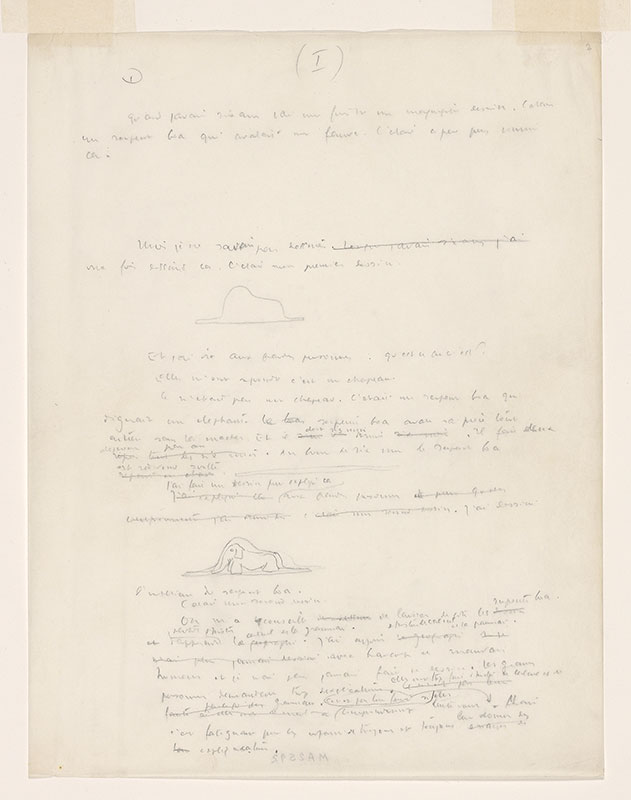
Le petit prince
Purchased on the Elisabeth Ball Fund, 1968
When I was six years old I once saw a magnificent drawing. It was a boa constrictor swallowing a wild beast. It was a bit like this.
I don’tidn’t know how to draw. When I was six years old I once drew this. It was my first drawing.
[drawing]
And I said to the grown-ups, “What is it?”
They answered “It’s a hat.”
It was not a hat. It was a boa constrictor digesting an elephant. Boas The boa constrictor swallows its prey whole without chewing it. And it sleeps for six months goes to sleep for six months. It has two lunches per year meals every six months. After six months the boa constrictor becomes thin again. goes hunting. [drawing] I made a drawing in order to explain this I explained this to the grown-ups and in order to help them understand I [drew?] it was my second drawing. I drew
[drawing]
the inside of the boa constrictor.
This was my second drawing.
They disencouraged me from drawing to abandon drawings boa constrictors and to learn as well as history, math, and grammargeography. I learned history, math, and grammar geography. If I never drew again with a very bad attitude and I gave up drawing. Grown-ups ask for too many explanations. They have done too much history and math and It is not their fault because they grammar if they don’t it is not their fault if they learn slowly. But it is exhausting for children to be forever and ever providing them with trying to explain to them explanations.
Quand j’avais six ans j’ai une fois vu un magnifique dessin. C’était un serpent boa qui avalait un fauve. C’était à peu près comme ça.
Moi je ne saisvais pas dessiner. Lorsque j’avais six ans j’ai une fois dessiné ça. C’était mon premier dessin.
[dessin]
Et j’ai dit aux grandes personnes: qu’est-ce c’est?
Elles m’ont répondu c’est un chapeau.
Ce n’était pas un chapeau. C’était un serpent boa qui digérait un éléphant. Les boas serpent boa avale sa proie tout entière sans la mâcher. Et il s’en va dort six mois dormir six mois. Il fait deux déjeuners repas tous les six mois par an. Au bout de six mois le serpent boa est redevenu svelte repart en chasse.
[dessin]
J’ai fait un dessin pour expliquer ça J’ai expliqué ça aux grandes personnes et pour qu’elles comprennent j’ai dessiné. C’était mon second dessin. J’ai dessiné
[dessin]
l’intérieur du serpent boa. C’était mon second dessin. On m’a déconseillé de dessiner de laisser de côté les dessins serpents boa et d’apprendre plutôt l’histoire, calcul et la grammaire. la géographie. J’ai appris la géographie l’histoire le calcul et la grammaire. Si je n’ai plus jamais dessiné avec beaucoup de mauvaise humeur et je n’ai plus jamais fait de dessin. Les grandes personnes demandent trop d’explications. Elles ont trop fait d’histoire de calcul et de Ce n’est pas leur faute parce qu’elles si elles ont du mal à grammaire. Si elles comprendrenent lentement ce n’est pas leur faute Mais c’est fatigant pour les enfats de toujours et toujours leur donner des essayer de leur expliquercations.
MA 2592, fol. 3
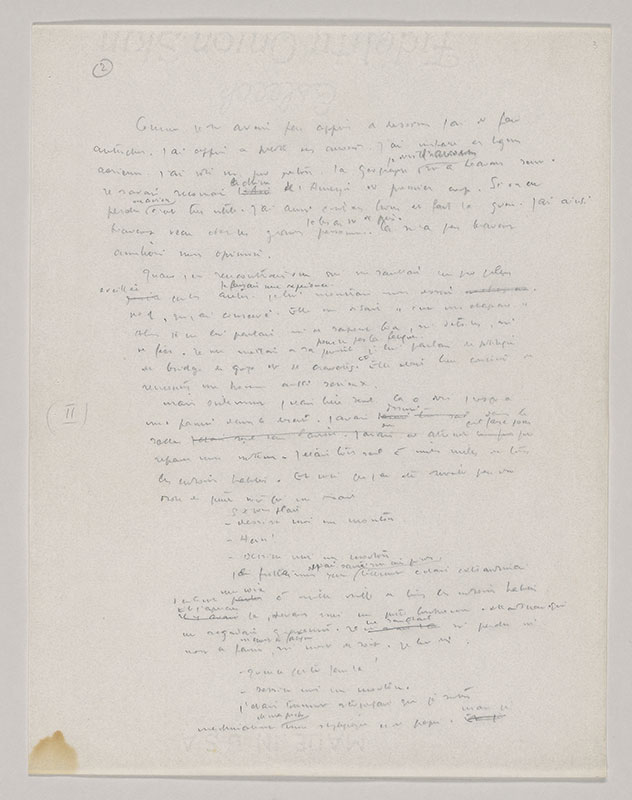
Le petit prince
Purchased on the Elisabeth Ball Fund, 1968
Since I never learned to draw, I had to do something else. I learned to pilot airplanes. I established airline routes. I’ve flown just about everywhere. I must admit that Geography has served me well. I knew how to tell Asia China from America at a glance. If you’re lost in an airplane this is most useful. I’ve also written books and gone to war. So I’ve spent a great deal of time among grown-ups. I have seen them up close. This has not done much to improve my opinion.
Whenever I met one who seemed to me a bit nicer brighter than the others. I would conduct an experiment. I would show him my drawing of a hat no. 1, which I’ve kept. He would say, “It’s a hat.” So I would not speak to him about boa constrictors, or stars, or fairies. I would put myself on his level. so as not to tire him out I would speak to him about politics, bridge, golf, and neckties. And he would be quite pleased to have met such a serious man.
But of course I was very lonely. This lasted up until I crashed in the desert. I had fallen asleep fallen asleep all alone on the sand. I was alone in the plane. I had to had to wait until daybreak until daybreak to fix my engine. I was all alone a thousand miles from any inhabited area. And suddenly I was awakened by a funny little voice that said to me,
“Please Draw me a sheep.”
“Huh?”
“Draw me a sheep.”
I rubbed my eyes and jumped to my feet, so extraordinary it was to hear speak a voice a thousand miles from any inhabited area. There was And I saw there before me an extraordinary little fellow who looked at me very seriously. He looked neither seemed neither lost nor dying of hunger nor dying of exhaustion, nor dying of thirst. I said to him,
“What are you doing here?”
“Draw me a sheep.”
I was so astonished that I automatically took out of my pocket my pen as well as some paper. And I But I
Comme je n’avais pas appris à dessiner j’ai dû faire autre chose. J’ai appris à piloter des avions. J’ai instauré des lignes aériennes. J’ai volé un peu partout. La géographie je dois l’avouer m’a beaucoup servi. Je savais reconnaître l’Asie la Chine de l’Amérique du premier coup. Si on est perdu en avion c’est très utile. J’ai aussi écrit des livres et fait la guerre. J’ai ainsi beaucoup vécu chez les grandes personnes. Je les ai vu[es] de près. Ça n’a pas beaucoup amélioré mon opinion.
Quand j’en rencontrais une qui me semblait un peu plus gentille éveillée que les autres. je faisais une expérience. Je lui montrais mon dessin du chapeau no. 1, que j’ai conservé. Elle me disait: “c’est un chapeau.” Alors je ne lui parlais ni de serpents boa, ni d’étoiles, ni de fées. Je me mettais à sa portée pour ne pas la fatiguer Je lui parlais de politique, de bridge, de golf et de cravates. Et elle était bien contente de rencontrer un homme aussi sérieux.
Mais évidemment j’étais bien seul. Ça a duré jusqu’à une panne dans le désert. J’avais dormi dormi tout seul dans le sable. J’étais seul dans l’avion. J’avais dû attendre qu’il fasse jour le jour pour réparer mon moteur. J’étais tout seul à mille milles de tous les endroits habités. Et voici que j’ai été réveillé par une drôle de petite voix qui me disait
–S’il vous plaît Dessine-moi un mouton.
–Hein!
–Dessine-moi un mouton.
J’ai frottais mes yeux et j’ai sauté sur mes pieds tellement c’était extraordinaire d’entendre parler une voix à mille milles de tous les endroits habités. Il y avait Et j’aperçus là, devant moi, un petit bonhomme extraordinaire qui me regardait gravement. Il n’avait l’air ne semblait ni perdu ni mort de faim, ni mort de fatigue ni mort de soif. Je lui dis:
–Qu’est-ce que tu fais là?
–Dessine-moi un mouton.
J’étais tellement stupéfait que je sortis machinalement de ma poche mon stylographe et du papier. Et je Mais je
MA 2592, fol. 4
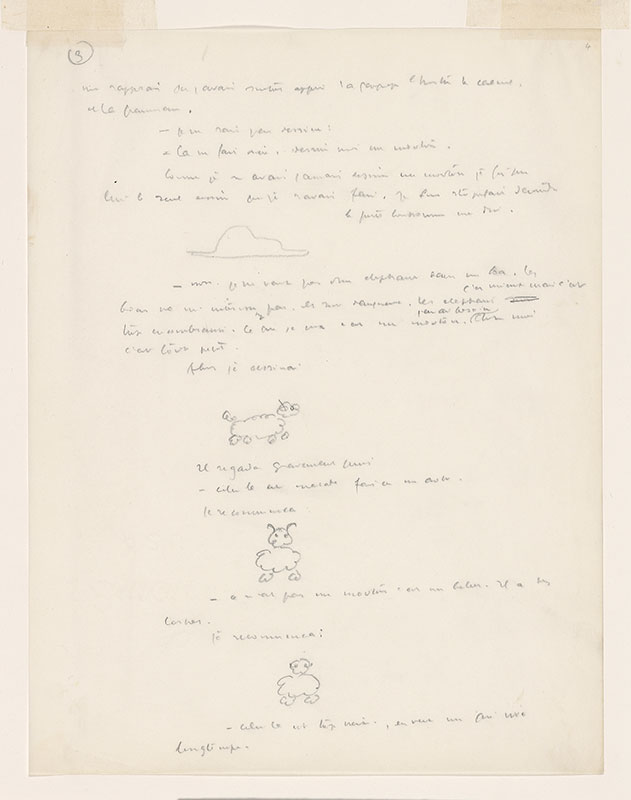
Le petit prince
Purchased on the Elisabeth Ball Fund, 1968
remembered that I had mostly learned geography, history, math and grammar.
“I don’t know how to draw.”
“It doesn’t matter. Draw me a sheep.”
Since I had never drawn a sheep before I made him the only drawing I knew how to make. I was astonished to hear the little fellow say to me
[drawing]
“No. I don’t want an elephant inside a boa. Boas don’t interest me. They’re dangerous. Elephants are are better but they’re too bulky. What I want is a sheep. I need one. Where I’m from is quite small.”
So I drew
[drawing]
He looked at it carefully, then
“That one is sick, make another one.”
I started over:
[drawing]
“That’s not a sheep, it’s a ram. It has horns.”
I started over:
[drawing]
“That one is too old, I want one that will live for a long time.”
me rappelai que j’avais surtout appris la géographie, l’histoire, le calcul, et la grammaire.
–Je ne sais pas dessiner.
–Ça ne fait rien. Dessine-moi un mouton.
Comme je n’avais jamais dessiné un mouton je fis pour lui le seul dessin que je savais faire. Je fus stupéfait d’entendre le petit bonhomme me dire
[dessin]
–Non. Je ne veux pas d’un éléphant dans un boa. Les boas ne m’intéressent pas. Ils sont dangereux. Les éléphants sont c’est mieux mais c’est trop encombrants. Ce que je veux c’est un mouton. J’en ai besoin. Chez moi c’est tout petit.
Alors je dessinai
[dessin]
Il regarda gravement puis
–Celui-là est malade fais en un autre.
Je recommençai:
[dessin]
–Ce n’est pas un mouton, c’est un bélier. Il a des cornes.
Je recommençai:
[dessin]
–Celui-là est trop vieux, j’en veux un qui vive longtemps.
MA 2592, fol. 5
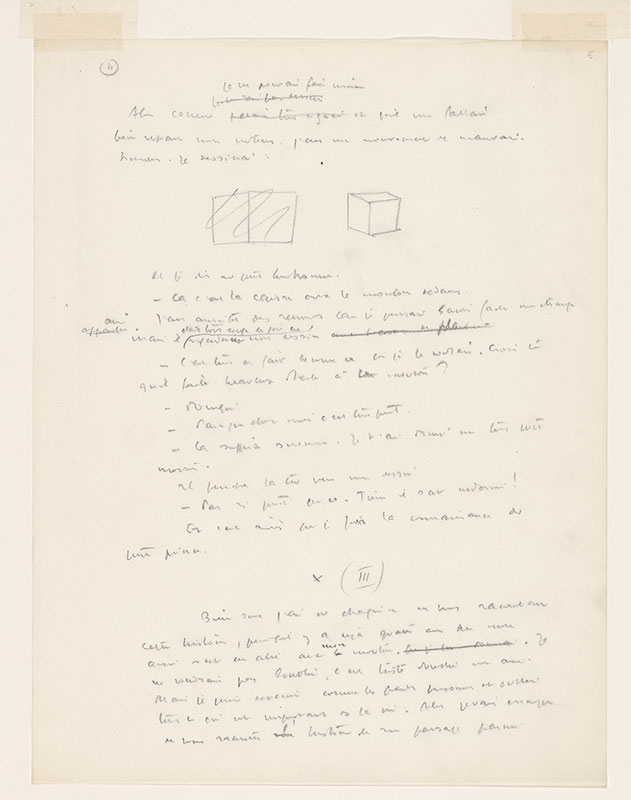
Le petit prince
Purchased on the Elisabeth Ball Fund, 1968
Then, since I was extremely annoyed I don’t know how to draw I couldn’t do any better and I really needed to fix my engine I dashed this off ill-temperedly. I drew:
[drawing]
and I said to the little fellow, “There you go, that’s the crate with the sheep inside.” I immediately felt guilty, thinking I had upset my strange apparition friend but he was blushing with delight while he was looking at my drawing with great pleasure. “That’s just what I wanted. Do you think this sheep needs a lot of grass?”
“Why?”
“Because where I come from is quite small.”
“I’m sure there will be enough. I’ve given you a very small sheep.”
He bent his head over my drawing.
“Not all that small. Look, he’s sleeping!”
And that is how I made the acquaintance of the little prince.
Of course it’s hard for me to tell you this story, because four years have already gone by since my friend left with his my sheep. that I draw for him. I wouldn’t want to forget him. It’s sad to forget a friend. But I could end up like the grown-ups and forget everything that’s important in life. Now I’m going to try to tell you his the story of his time among
Alors comme j’étais très agacé je ne sais pas dessiner je ne pouvais faire mieux et qu’il me fallait bien réparer mon moteur j’eus un mouvement de mauvaise humeur. Je dessinai:
[dessin]
et je dis au petit bonhomme: –Ça, c’est la caisse avec le mouton dedans J’eus aussitôt des remords car je pensais d’avoir fâché mon étrange apparition ami mais il regardant mon dessin avec beaucoup de plaisir était tout rouge de joie en –C’est tout à fait comme ça que je le voulais. Crois-tu qu’il faille beaucoup d’herbe à ce mouton?
–Pourquoi?
–Parce que chez moi c’est tout petit.
–Ça suffira sûrement. Je t’ai donné un tout petit mouton.
Il pencha la tête vers mon dessin.
–Pas si petit que ça. Tiens il s’est endormi!
Et c’est ainsi que je fis la connaissance du petit prince.
Bien sûr j’ai du chagrin en vous racontant cette histoire, parce qu’il y a déjà quatre ans que mon ami s’est en allé avec le mon mouton. que je lui dessinai. Je ne voudrais pas l’oublier. C’est triste d’oublier un ami. Mais je puis deviner comme les grandes personnes et oublier tout ce qui est important dans la vie. Alors je vais essayer de vous raconter son l’histoire de son passage parmi
MA 2592, fol. 6
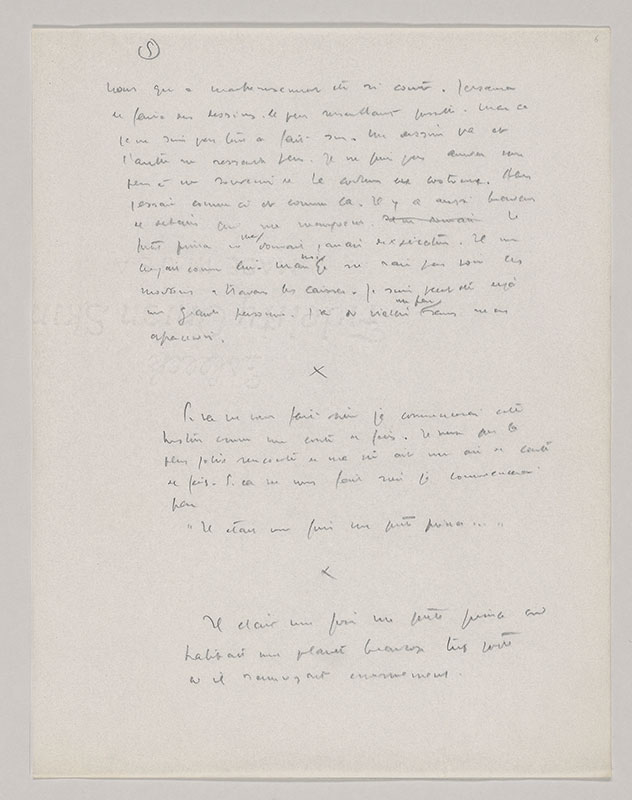
Le petit prince
Purchased on the Elisabeth Ball Fund, 1968
MA 2592, fol. 7
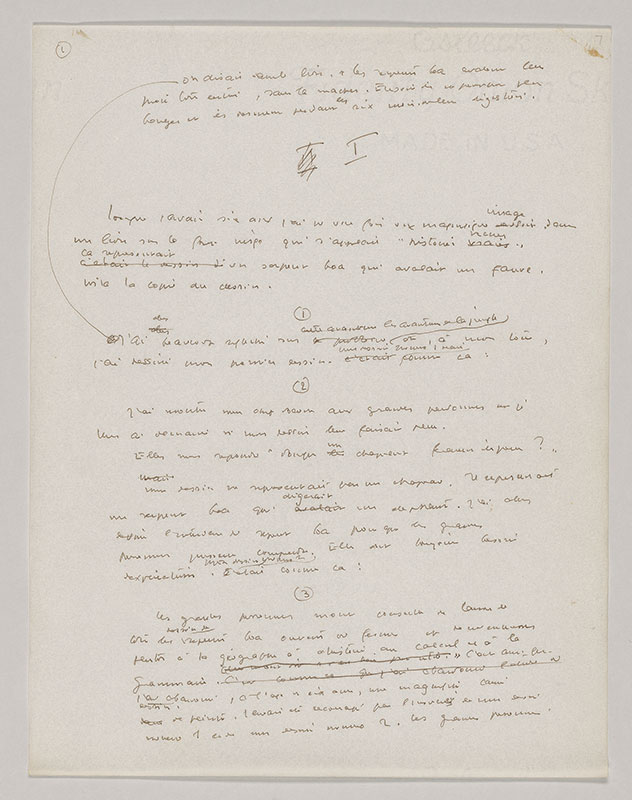
Le petit prince
Purchased on the Elisabeth Ball Fund, 1968
MA 2592.18
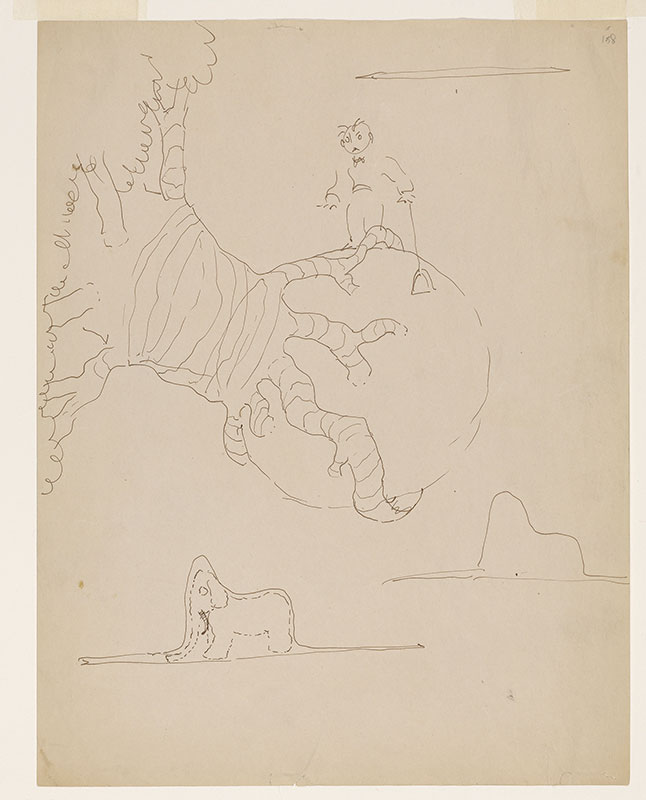
Le petit prince sur la planète envahie par un baobab. Boas fermé et ouvert
Purchased on the Elisabeth Ball Fund, 1968
MA 2592, fol. 8
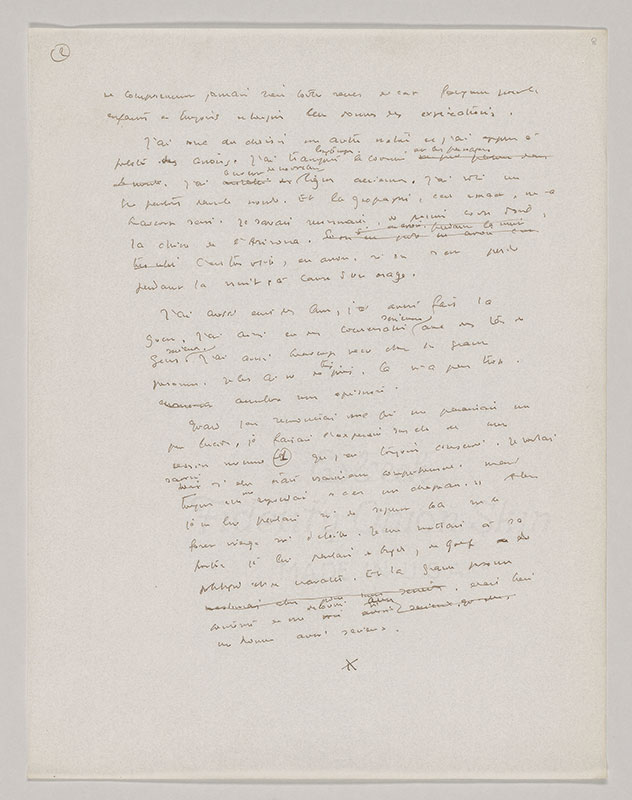
Le petit prince
Purchased on the Elisabeth Ball Fund, 1968
MA 2592, fol. 9
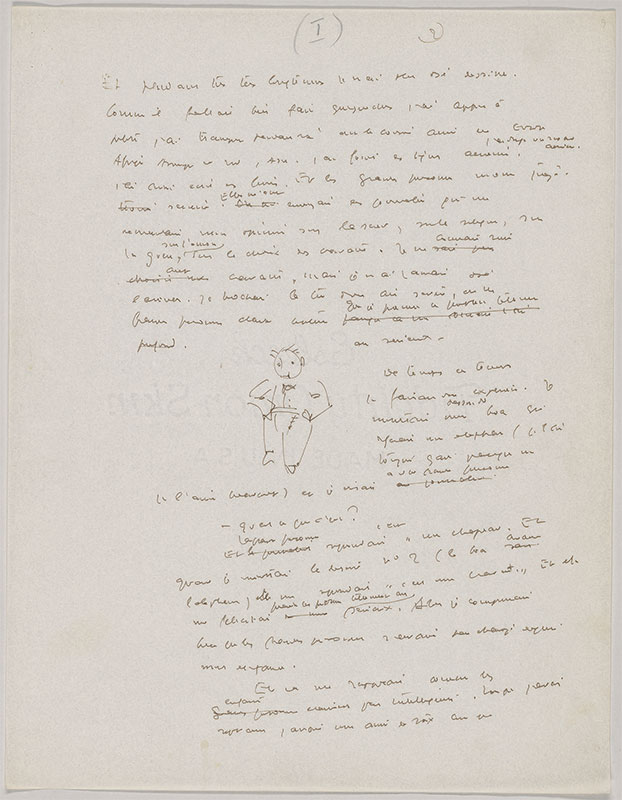
Le petit prince
Purchased on the Elisabeth Ball Fund, 1968
MA 2592, fol. 10
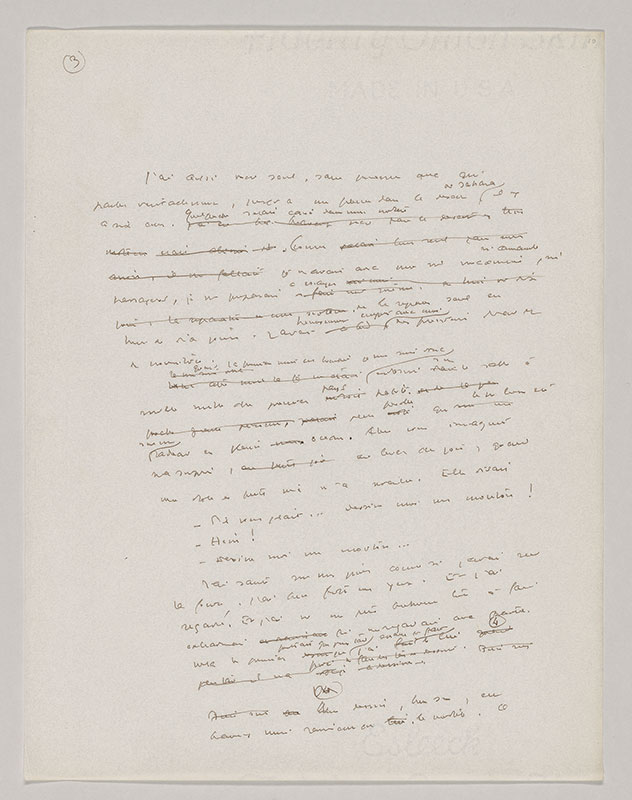
Le petit prince
Purchased on the Elisabeth Ball Fund, 1968
MA 2592.2
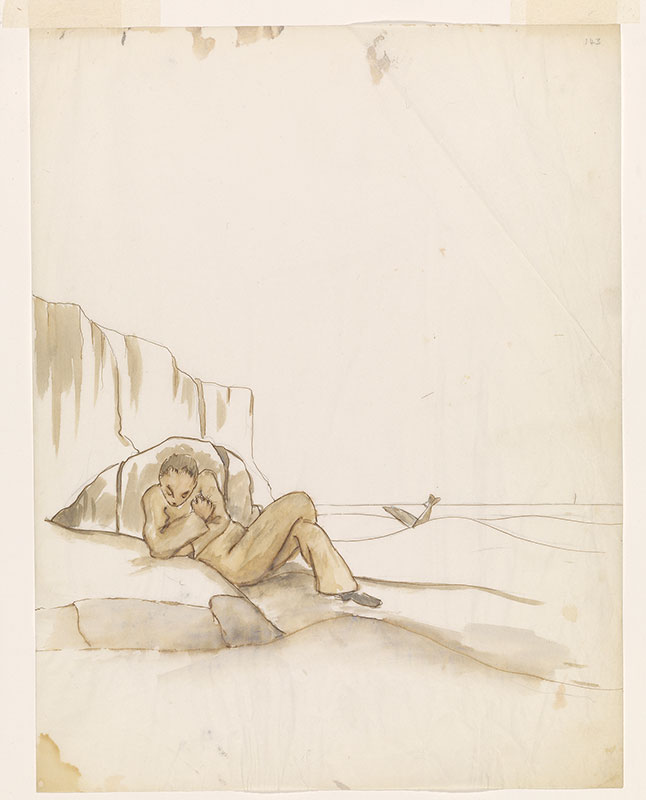
Le pilote (?) allongé, au pied d’une falaise, avec son avion au loin
Purchased on the Elisabeth Ball Fund, 1968
MA 2592, fol. 11
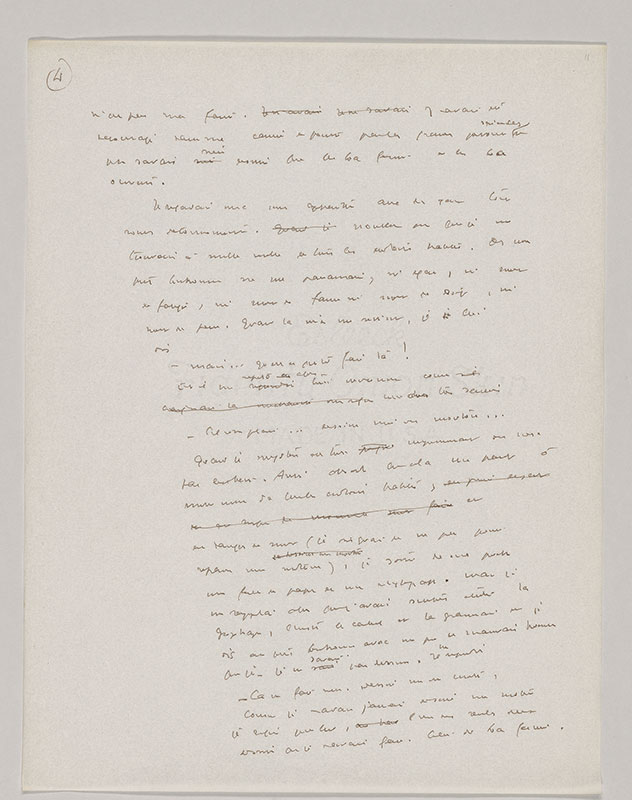
Le petit prince
Purchased on the Elisabeth Ball Fund, 1968
MA 2592, fol. 12
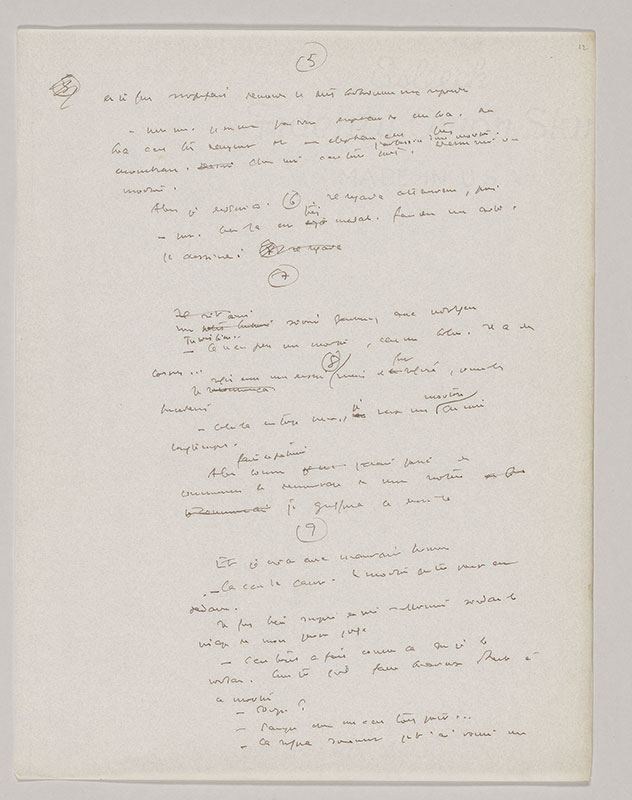
Le petit prince
Purchased on the Elisabeth Ball Fund, 1968
MA 2592, fol. 13
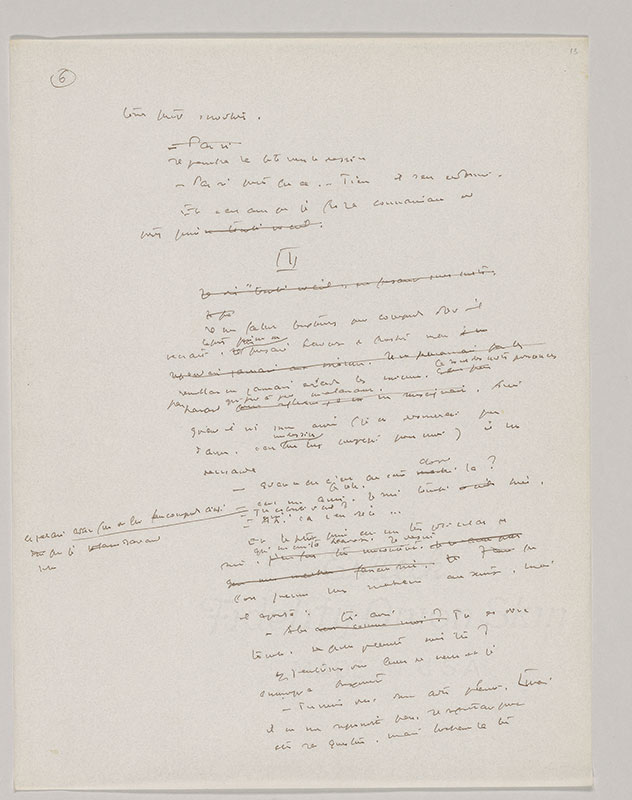
Le petit prince
Purchased on the Elisabeth Ball Fund, 1968
MA 2592, fol. 14
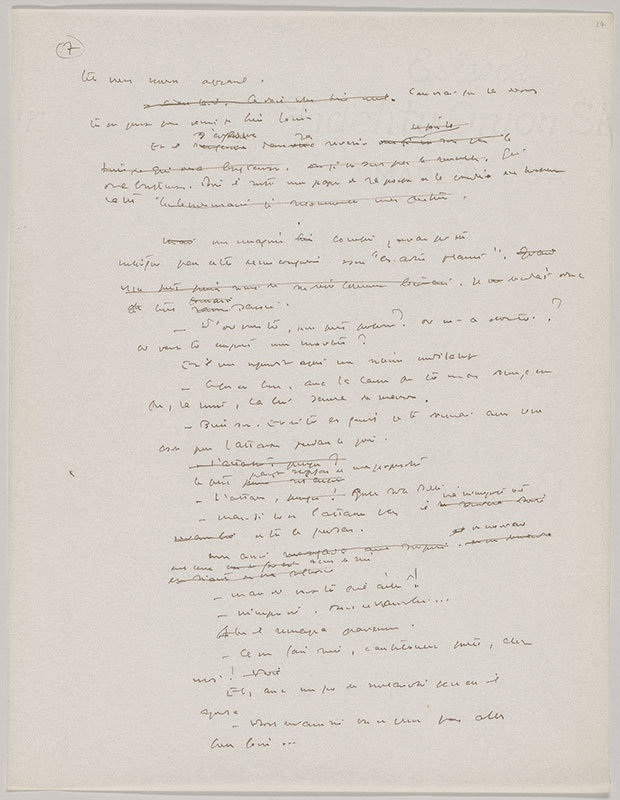
Le petit prince
Purchased on the Elisabeth Ball Fund, 1968
MA 2592, fol. 15
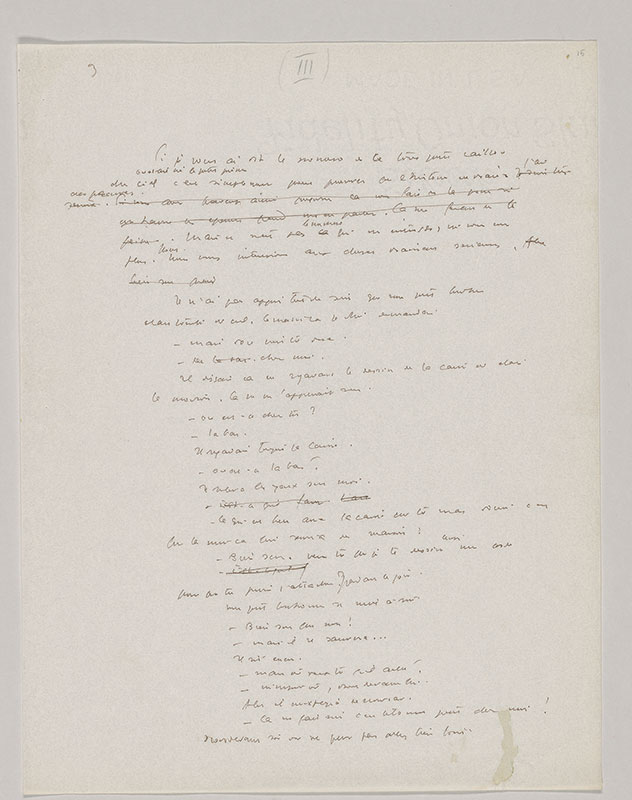
Le petit prince
Purchased on the Elisabeth Ball Fund, 1968
MA 2592.26
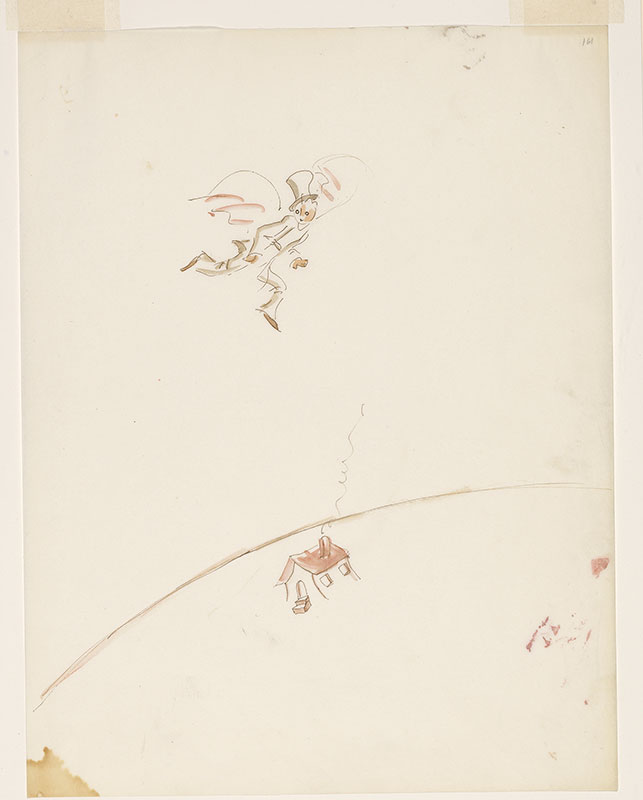
Personnage ailé portant un chapeau haut-de-forme survolant une planète
Purchased on the Elisabeth Ball Fund, 1968
MA 2592, fol. 16
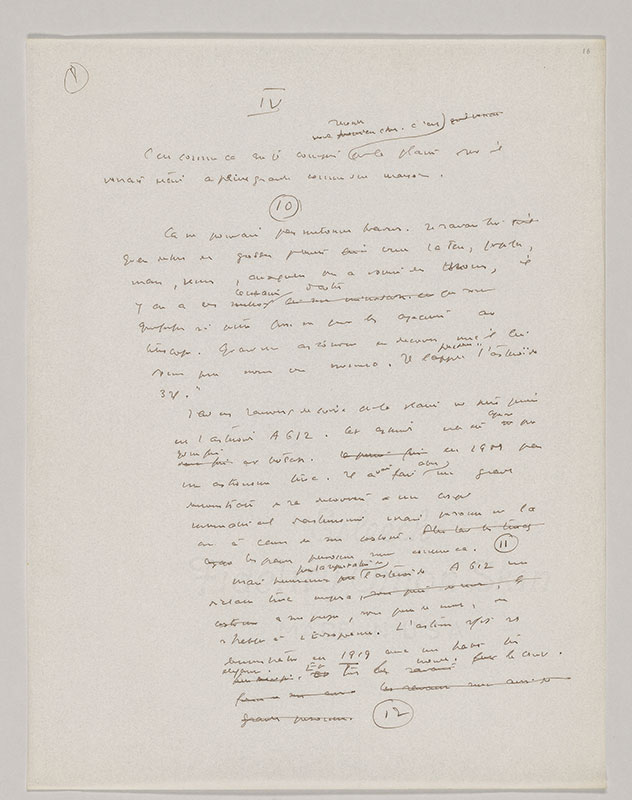
Le petit prince
Purchased on the Elisabeth Ball Fund, 1968
MA 2592, fol. 17
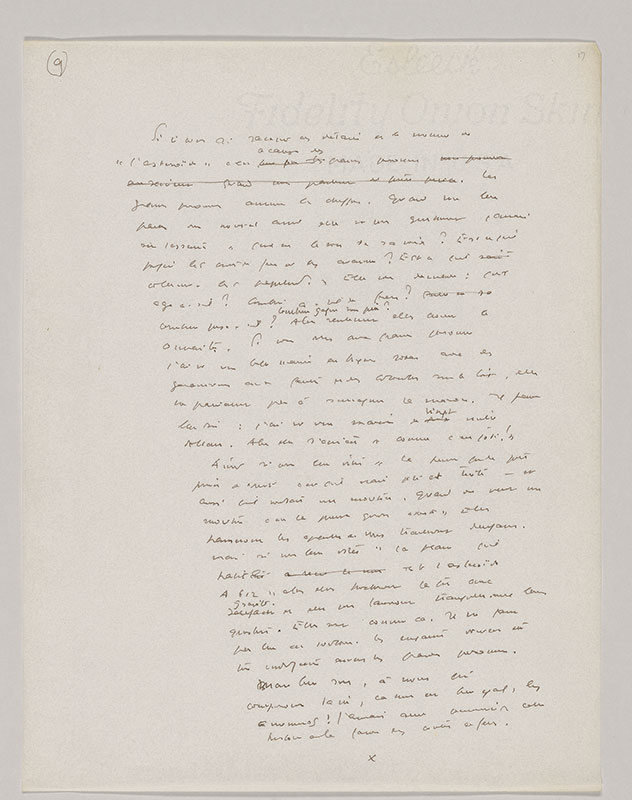
Le petit prince
Purchased on the Elisabeth Ball Fund, 1968
MA 2592, fol. 18
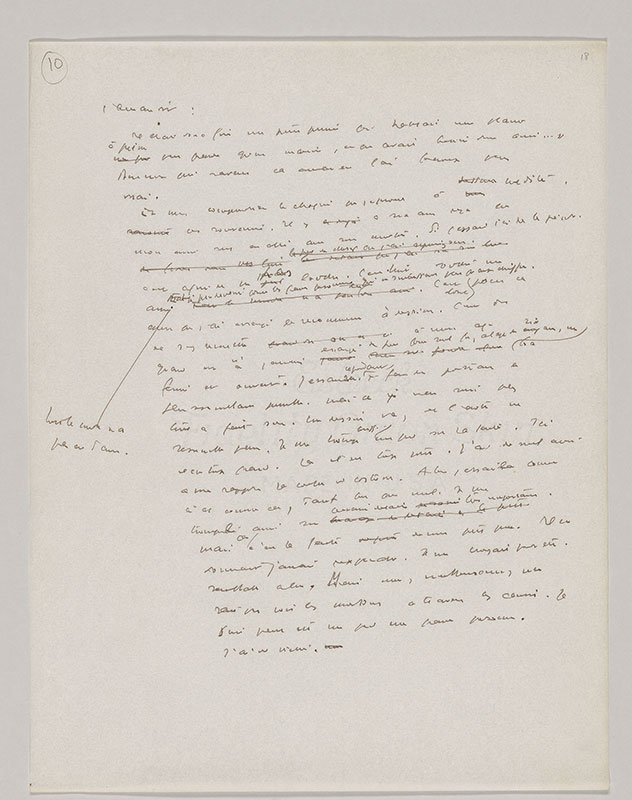
Le petit prince
Purchased on the Elisabeth Ball Fund, 1968
MA 2592, fol. 19
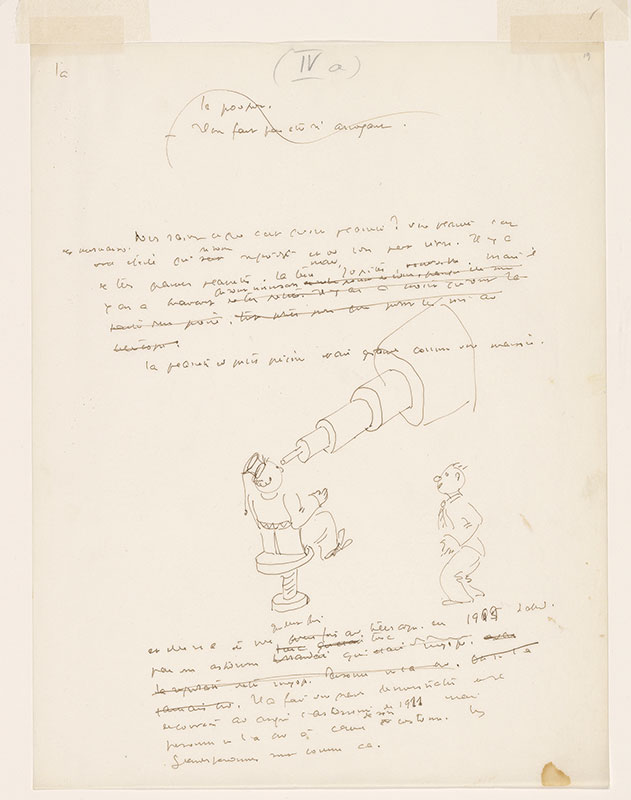
Le petit prince
Purchased on the Elisabeth Ball Fund, 1968
the baby. “There’s no need to be so arrogant.”
Do you know what a planet is? A planet consists of a fragments of a star that have have cooled off and on which you can live. There are some very large planets. Earth, Mars, Jupiter, Venus and. But there are many very small ones tiny ones that don’t even have names because they are. There are even some the size of a dot, too small to be seen through a telescope.
The little prince’s planet was the size of a house.
[drawing]
and it has only been seen once twice by telescope, first in 1915 1909 by a Dutch Turkish who was Turkish astronomer who was nearsighted. had a reputation for nearsightedness. No one believed him. No one ever believed him. He made a great presentation of his discovery at the 1911 astronomy conference but no one believed him because of the of his outfit. Grown-ups are like that.
le poupon. –Il ne faut pas être si arrogant.
Vous savez ce que c’est qu’une planète? Une planète c’est une des morceaux d’ étoile qui sont se sont refroidis et où l’on peut vivre. Il y a de très grandes planètes. La Terre Mars, Jupiter, Venus et. Mais il y en a beaucoup qui sont minuscules et n’ont point de nom, parce qu’elles sont de très petites. Il y en a même qui ont la taille d’un point, trop petites pour qu’on puisse les voir au télescope.
La planète du petit prince était grande comme une maison.
[dessin]
et elle n’a été vue qu’une fois que deux fois au telescope, en 1915 1909 d’abord par un astronome hollandaise turc qui était qui était myope turc. avait la reputation d’être myope. Personne ne l’a cru. On ne l’a jamais cru. Il a fait une grande demonstration de sa découverte au congrès d’astronomie de 1911 mais personne ne l’a cru à cause du de son costume. Les grandes personnes sont comme ça.
MA 2592, fol. 20
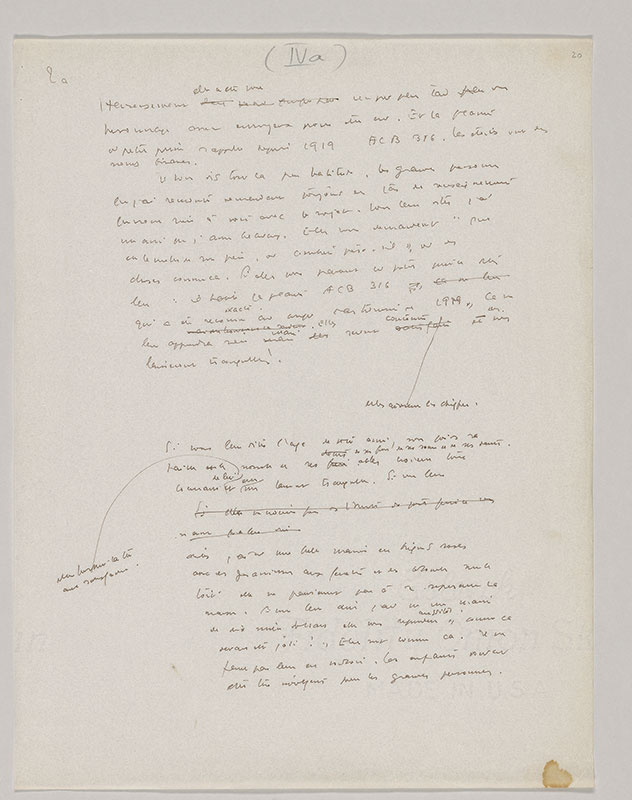
Le petit prince
Purchased on the Elisabeth Ball Fund, 1968
MA 2592, fol. 21
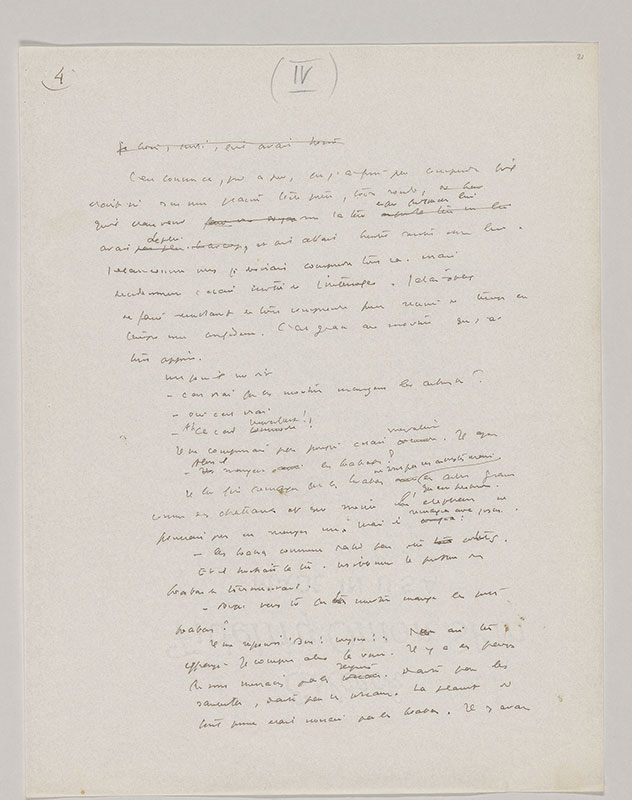
Le petit prince
Purchased on the Elisabeth Ball Fund, 1968
MA 2592.20
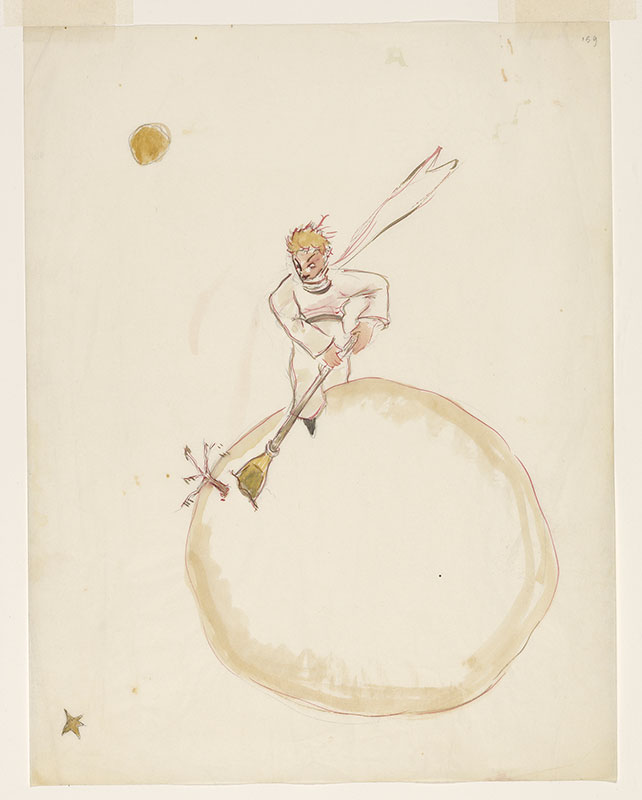
Le petit prince déterrant des pousses de baobab
Purchased on the Elisabeth Ball Fund, 1968
MA 2592, fol. 22
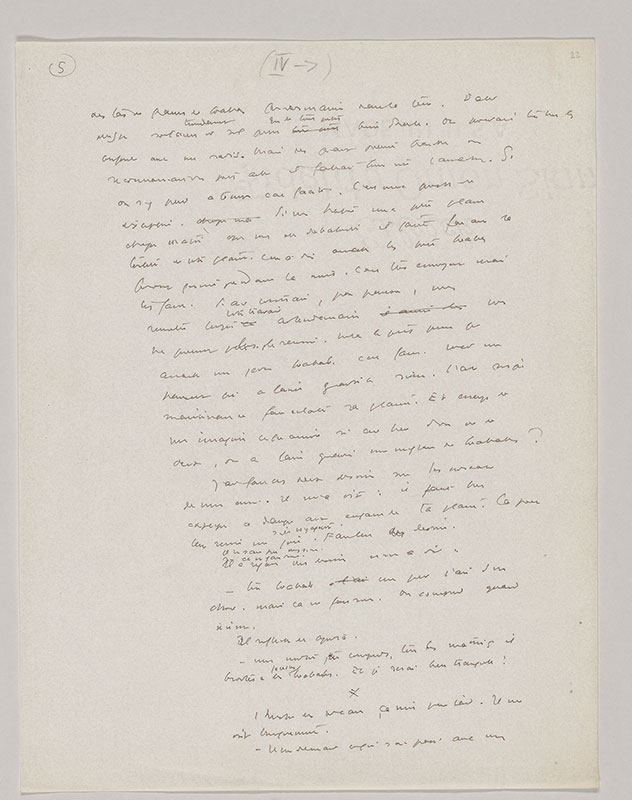
Le petit prince
Purchased on the Elisabeth Ball Fund, 1968
MA 2592, fol. 23
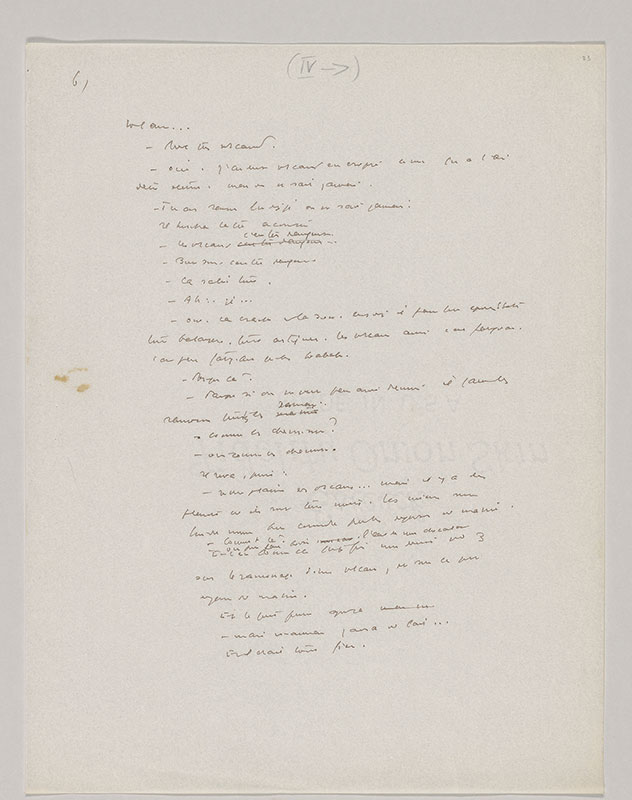
Le petit prince
Purchased on the Elisabeth Ball Fund, 1968
MA 2592, fol. 24
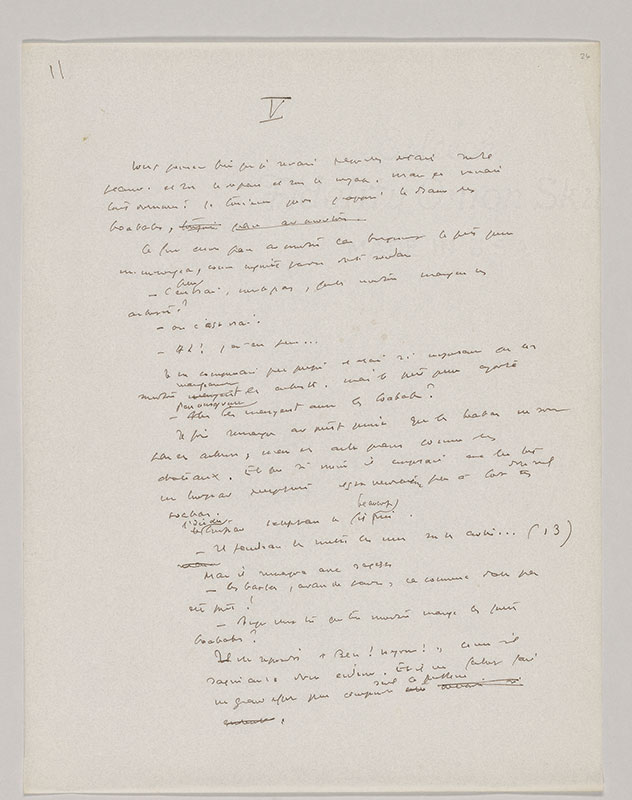
Le petit prince
Purchased on the Elisabeth Ball Fund, 1968
MA 2592.19
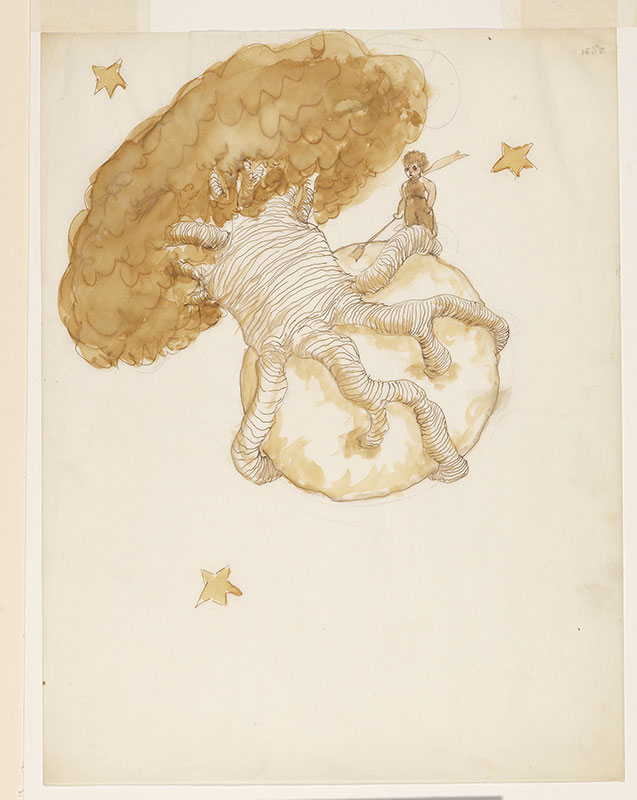
Le petit prince sur la planète envahie par un baobab
Purchased on the Elisabeth Ball Fund, 1968
MA 2592, fol. 25
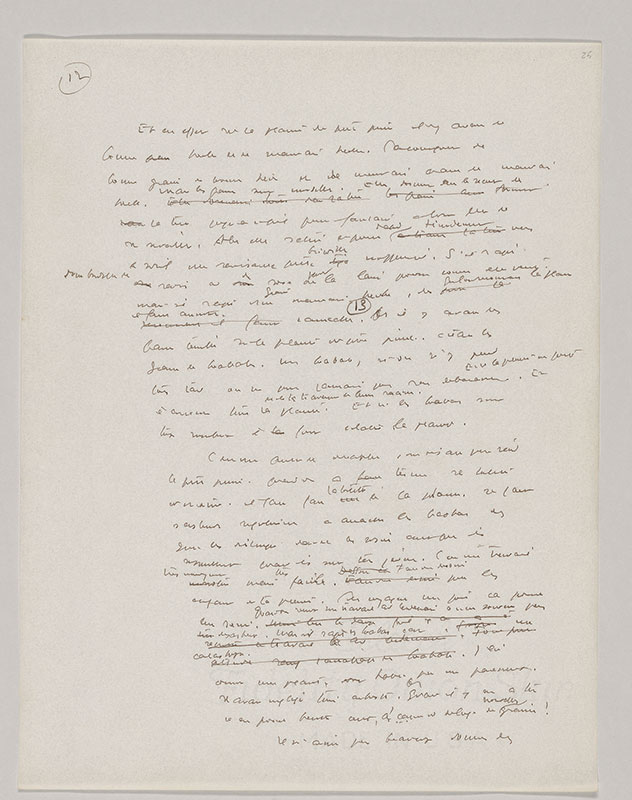
Le petit prince
Purchased on the Elisabeth Ball Fund, 1968
MA 2592.6
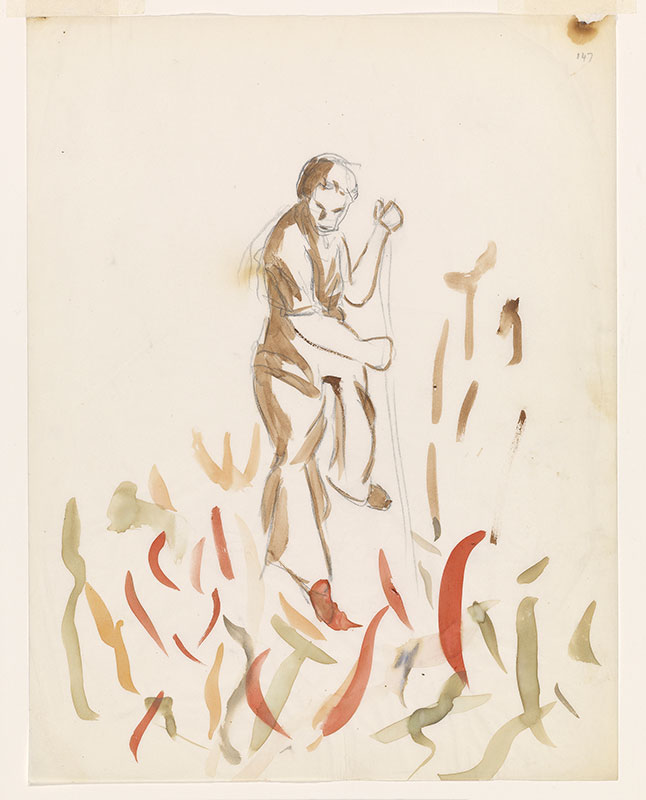
Le petit prince déterrant des pousses de baobab
Purchased on the Elisabeth Ball Fund, 1968
MA 2592, fol. 26
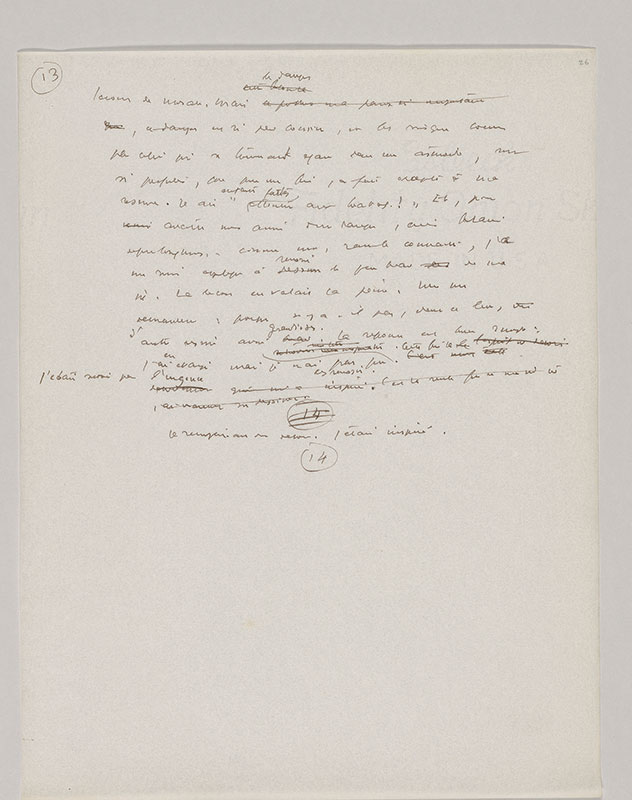
Le petit prince
Purchased on the Elisabeth Ball Fund, 1968
MA 2592.17
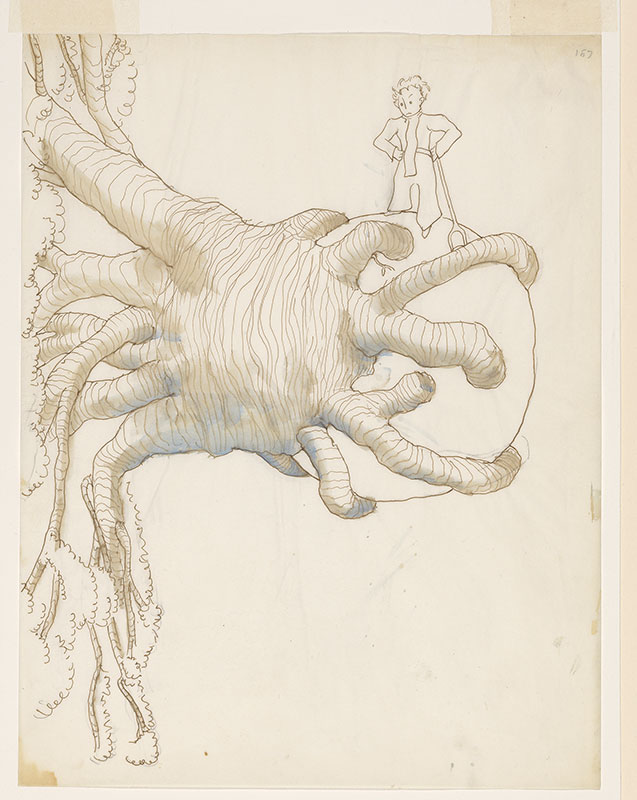
Le petit prince sur la planète envahie par un baobab
Purchased on the Elisabeth Ball Fund, 1968
MA 2592, fol. 27
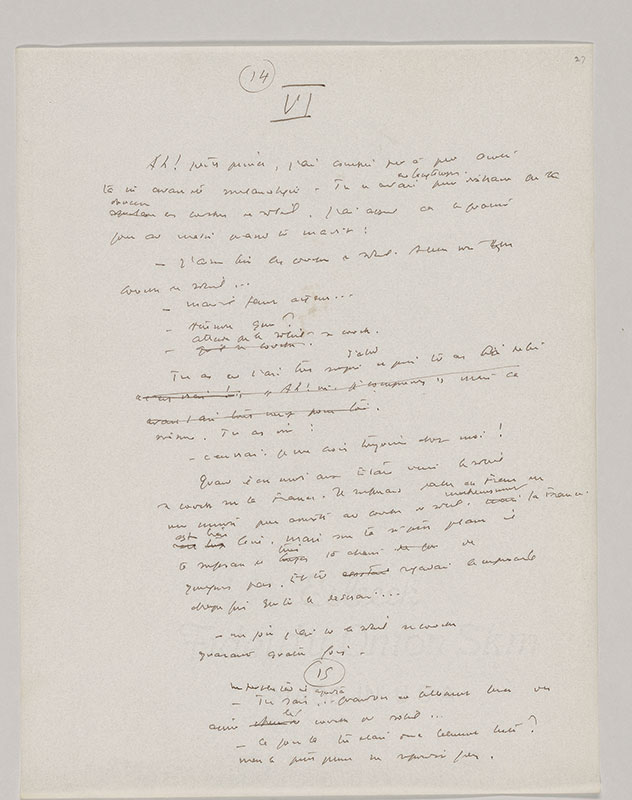
Le petit prince
Purchased on the Elisabeth Ball Fund, 1968
MA 2592.30
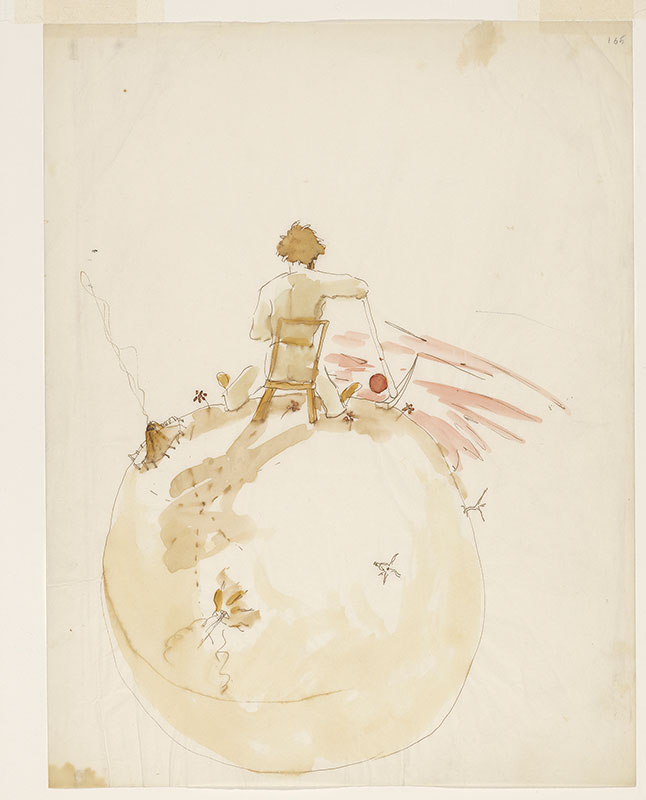
Le petit prince de dos sur sa planète, assis sur sa chaise et assistant aux couchers du soleil
Purchased on the Elisabeth Ball Fund, 1968
MA 2592, fol. 28
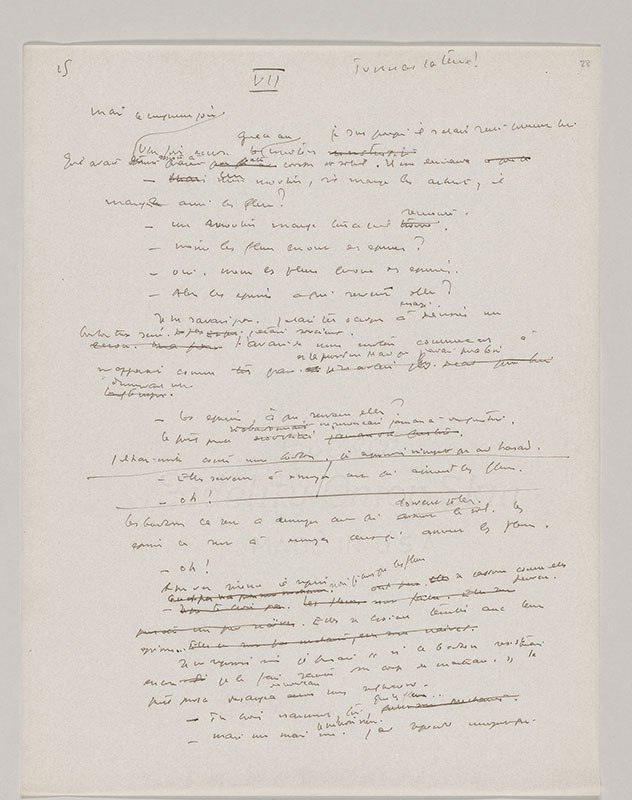
Le petit prince
Purchased on the Elisabeth Ball Fund, 1968
MA 2592, fol. 29
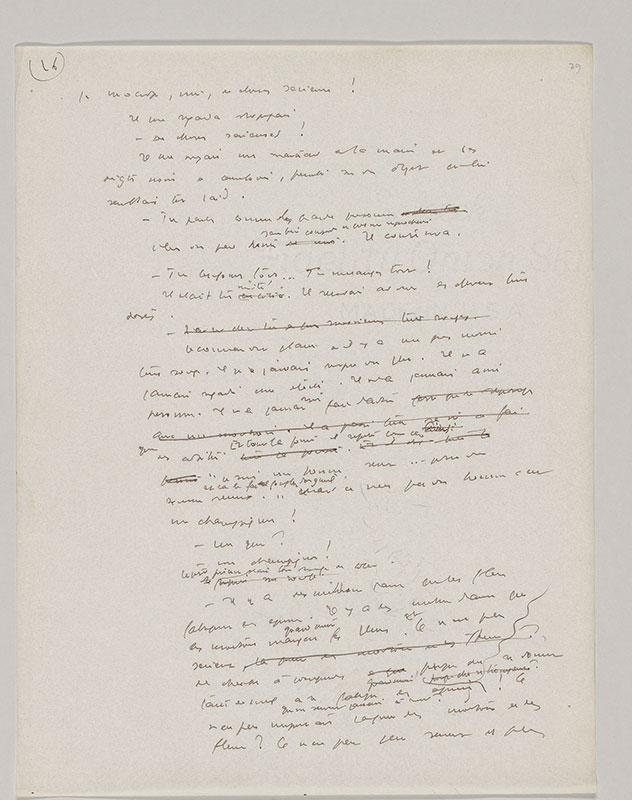
Le petit prince
Purchased on the Elisabeth Ball Fund, 1968
MA 2592, fol. 30
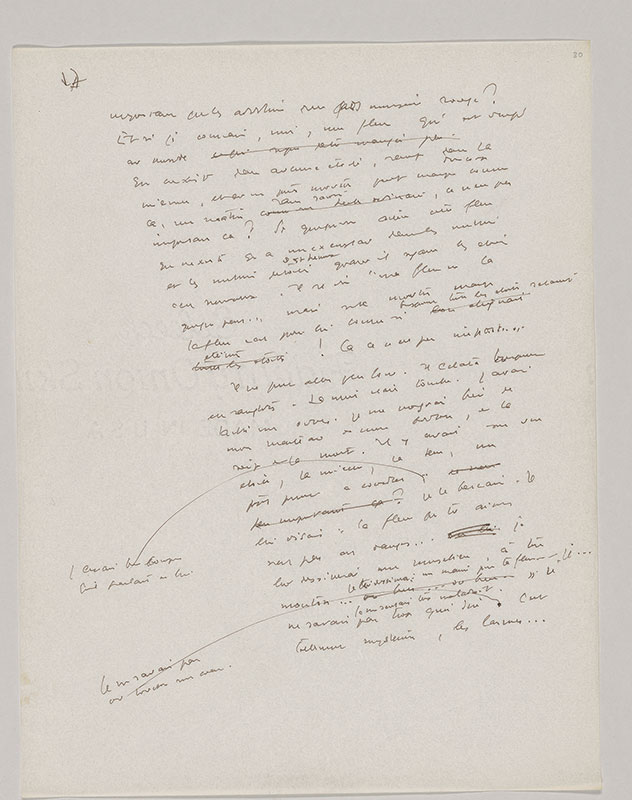
Le petit prince
Purchased on the Elisabeth Ball Fund, 1968
MA 2592, fol. 31
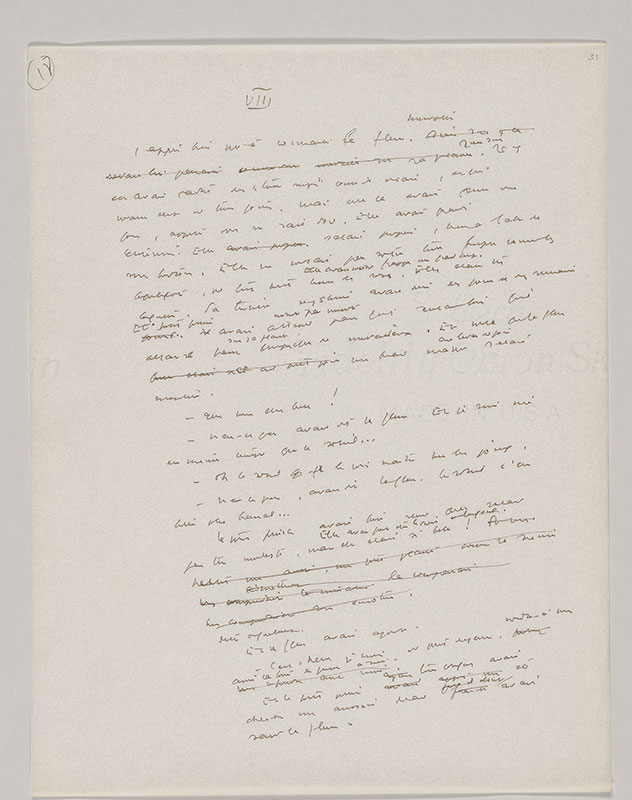
Le petit prince
Purchased on the Elisabeth Ball Fund, 1968
MA 2592.16
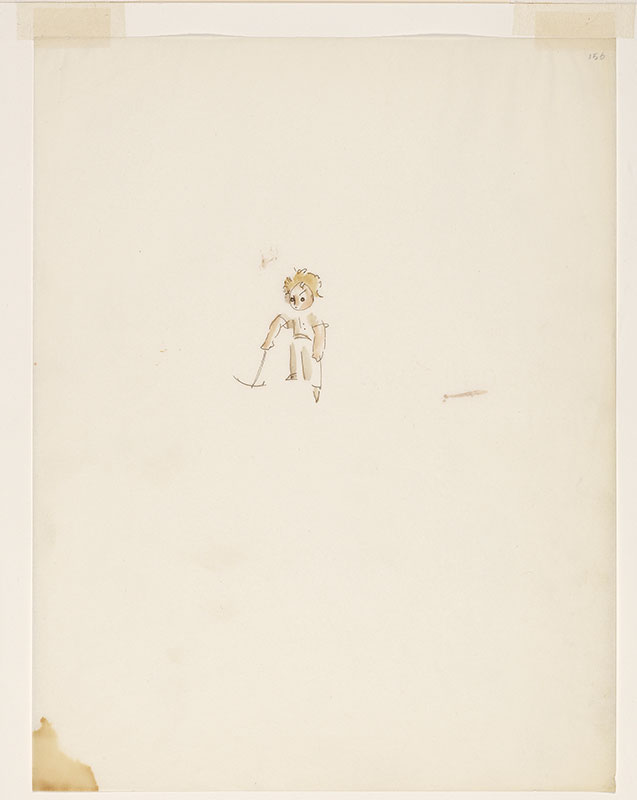
Le petit prince et sa pioche
Purchased on the Elisabeth Ball Fund, 1968
MA 2592, fol. 32
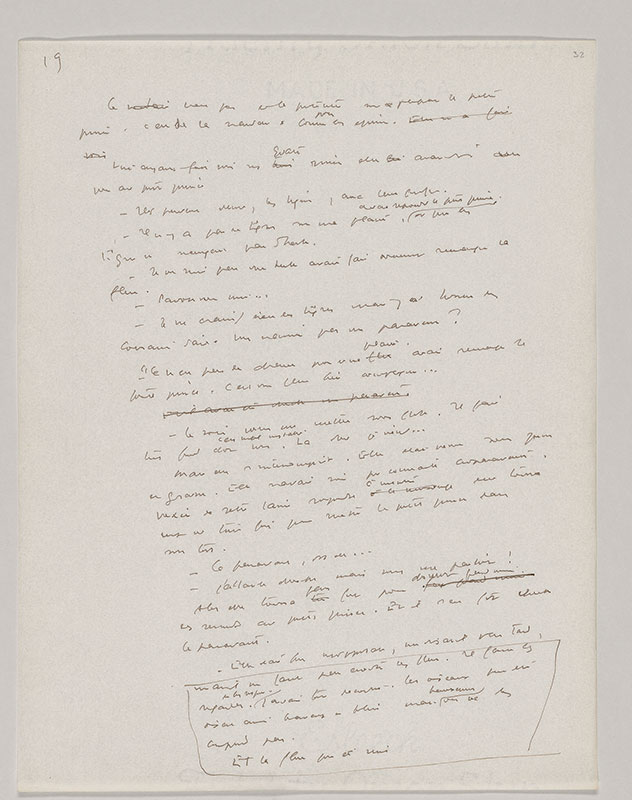
Le petit prince
Purchased on the Elisabeth Ball Fund, 1968
MA 2592, fol. 33
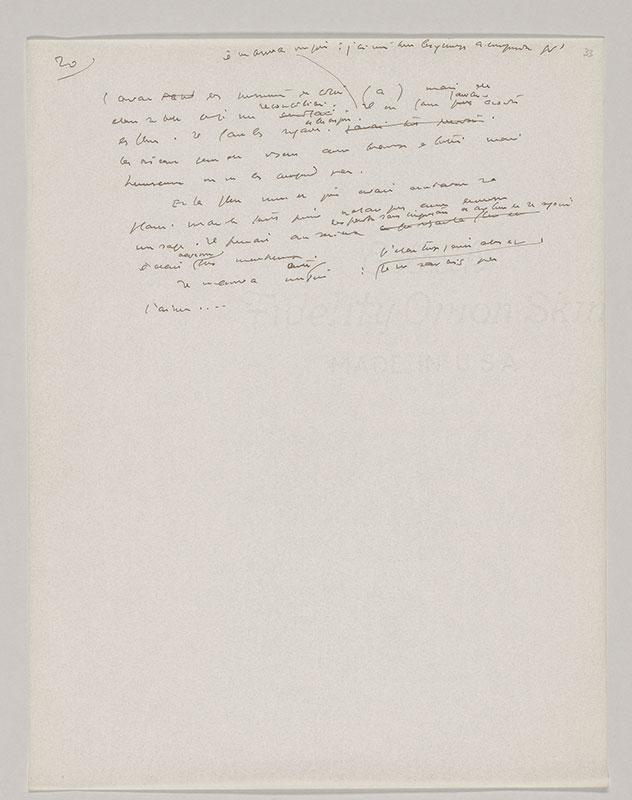
Le petit prince
Purchased on the Elisabeth Ball Fund, 1968
MA 2592, fol. 34
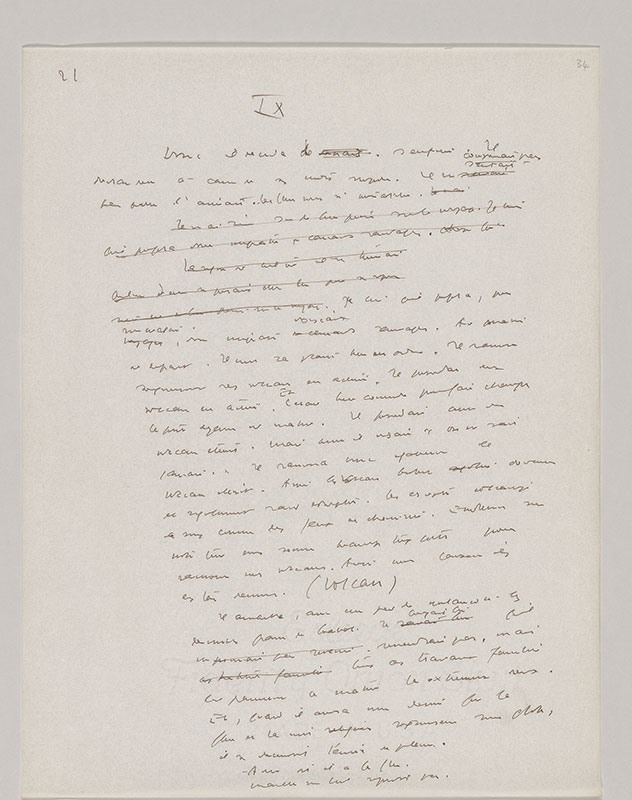
Le petit prince
Purchased on the Elisabeth Ball Fund, 1968
MA 2592, fol. 35
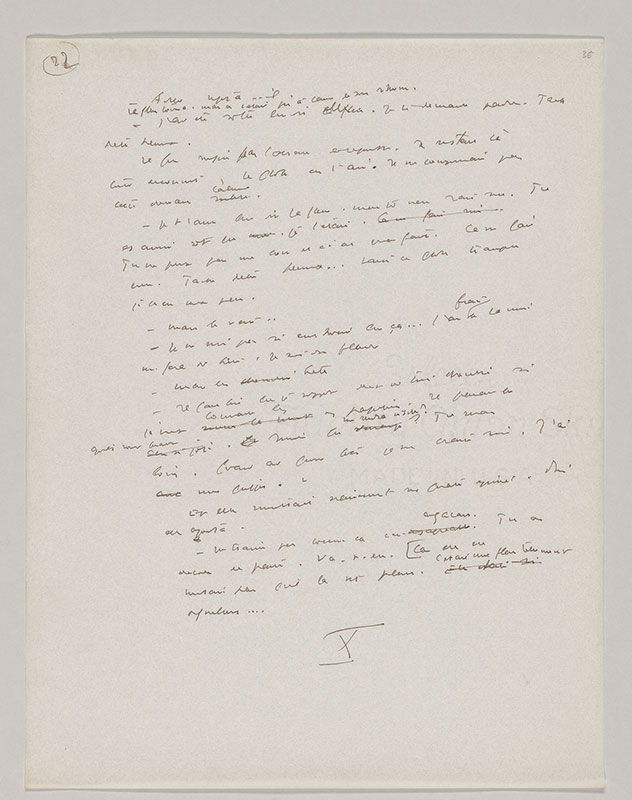
Le petit prince
Purchased on the Elisabeth Ball Fund, 1968
MA 2592.9
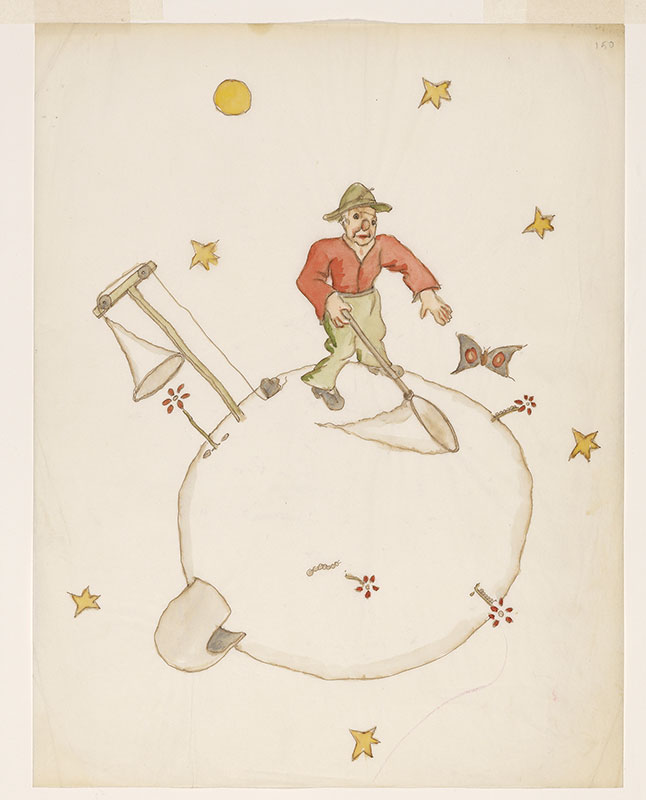
Le chasseur de papillons, personnage non retenu dans le conte
Purchased on the Elisabeth Ball Fund, 1968
MA 2592, fol. 36
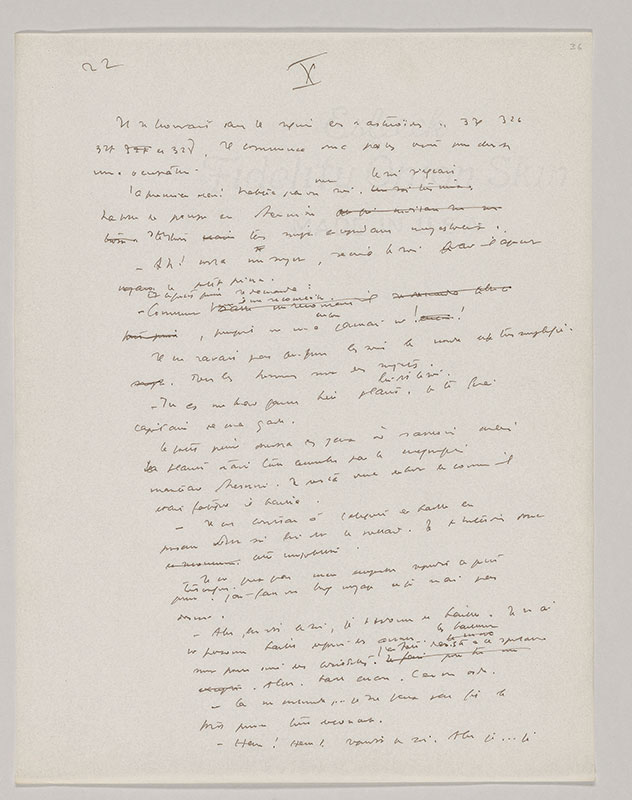
Le petit prince
Purchased on the Elisabeth Ball Fund, 1968
MA 2592, fol. 37
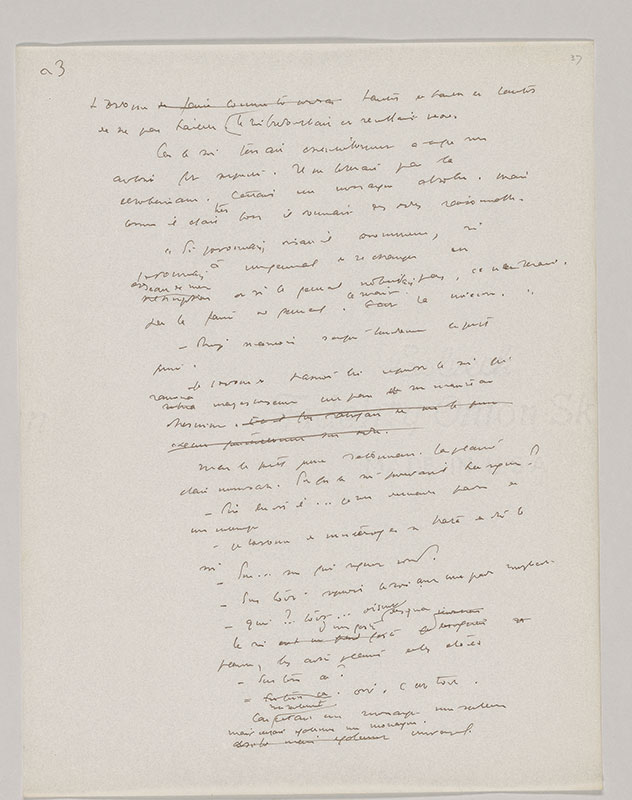
Le petit prince
Purchased on the Elisabeth Ball Fund, 1968
MA 2592.29
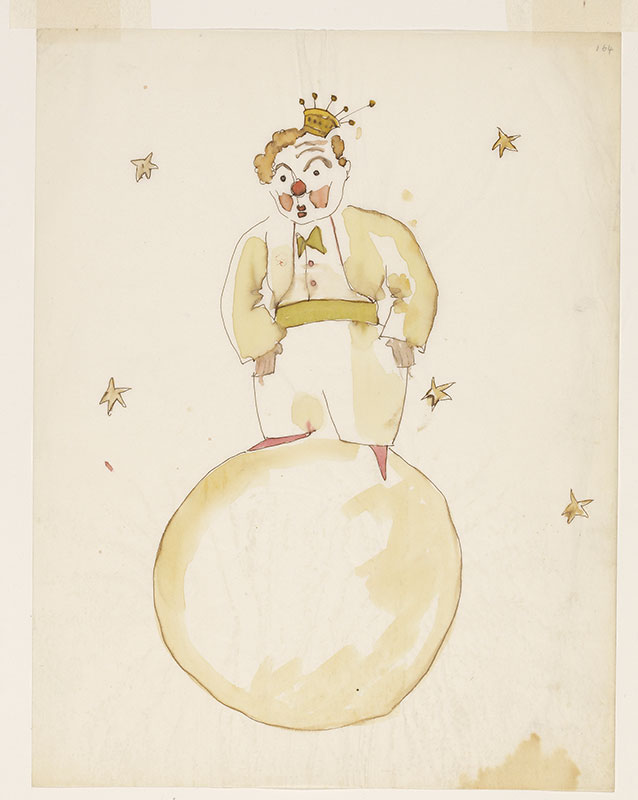
Le roi sur sa planète
Purchased on the Elisabeth Ball Fund, 1968
MA 2592, fol. 38
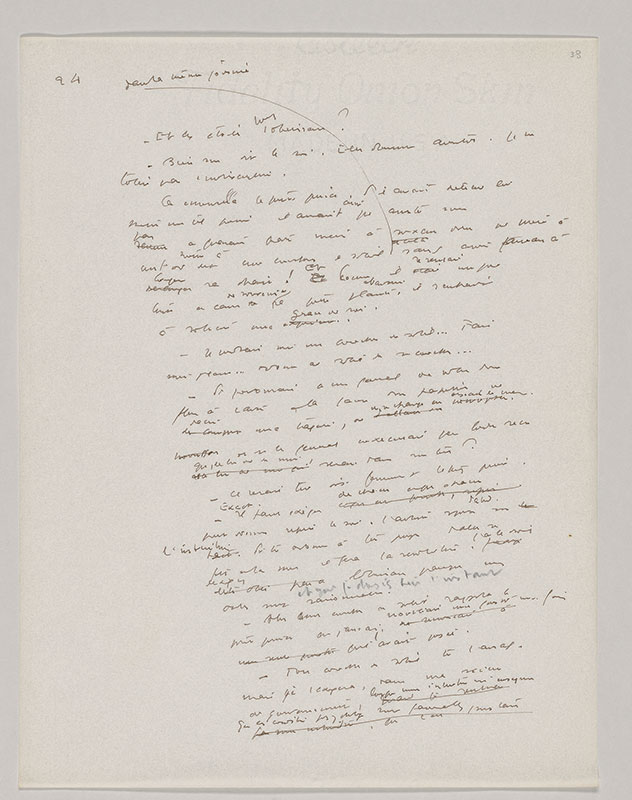
Le petit prince
Purchased on the Elisabeth Ball Fund, 1968
MA 2592, fol. 39
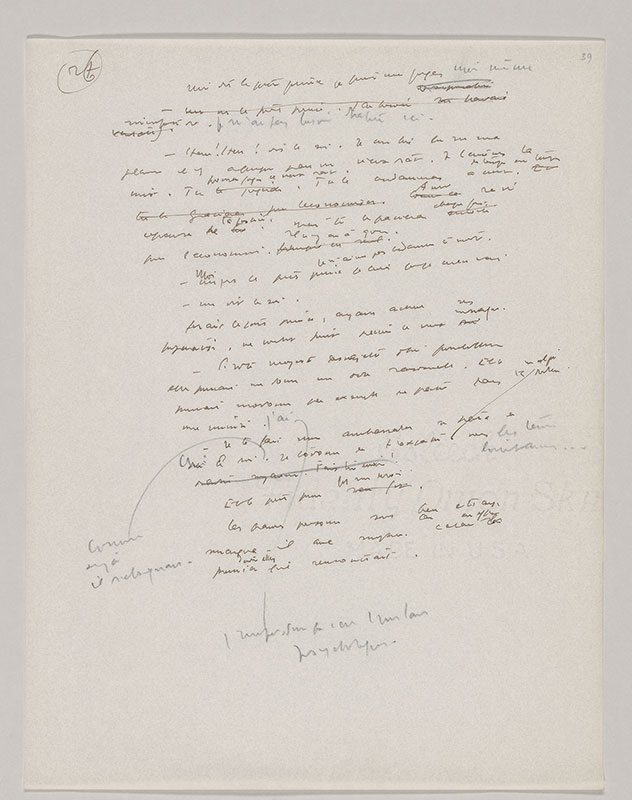
Le petit prince
Purchased on the Elisabeth Ball Fund, 1968
MA 2592, fol. 40
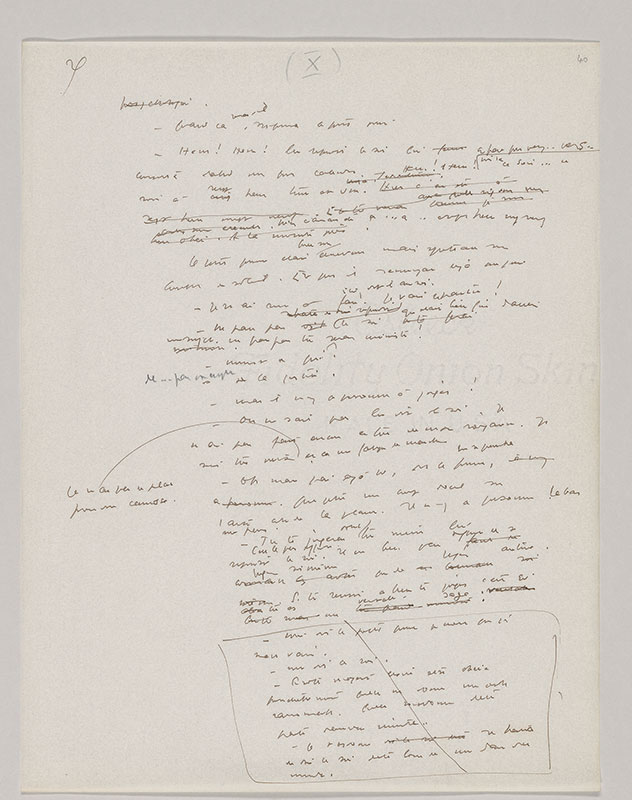
Le petit prince
Purchased on the Elisabeth Ball Fund, 1968
MA 2592, fol. 41
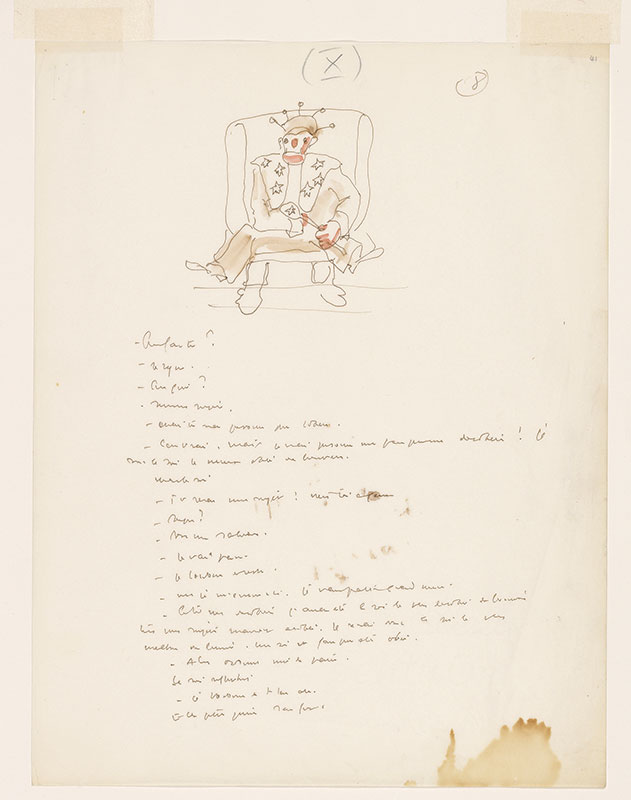
Le petit prince
Purchased on the Elisabeth Ball Fund, 1968
[drawing]
“What are you doing?”
“I’m reigning.”
“Over whom?”
“Over my subjects.”
“But you have no one to obey you.”
“That’s true. But I also have no one to disobey me! I am the most obeyed king in the universe.”
But the king
“You will be my subject! Come here [?]”
“Why?”
“To pay me homage.”
“I’m leaving.”
“I order you to stay.”
“I’m bored here. I’m leaving anyway.”
“If you disobey me I’ll be the most disobeyed king in the universe. All my subjects will have disobeyed me. I will therefore be the unhappiest king in the universe. A king is meant to be obeyed.”
“Then order me to leave.”
The king thought for a moment.
“I order you to go.”
And the little prince went away.
[dessin]
–Que fais-tu?
–Je règne.
–Sur qui?
–Sur mes sujets.
–Mais tu n’as personne pour t’obéir.
–C’est vrai. Mais je n’ai personne non plus pour me désobéir! Je suis le roi le mieux obéi de l’univers.
Mais le roi
–Tu seras mon sujet! Viens ici [?].
–Pourquoi?
–Pour me saluer.
–Je vais partir.
–Je t’ordonne de rester.
–Moi je m’ennuie ici. Je vais partir quand même.
–Si tu me désobéis j’aurais été le roi le plus désobéi de l’univers. Tous mes sujets m’auraient désobéi. Je serai donc le roi le plus malheureux de l’univers. Un roi est fait pour être obéi.
–Alors ordonne-moi de partir. Le roi réfléchit.
–Je t’ordonne de t’en aller. Et le petit prince s’en fut.
MA 2592, fol. 42
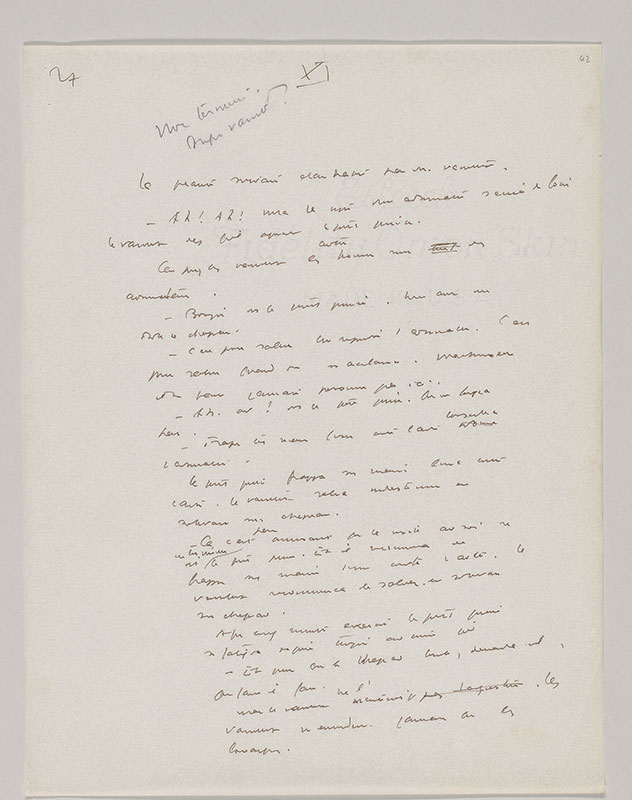
Le petit prince
Purchased on the Elisabeth Ball Fund, 1968
MA 2592.25
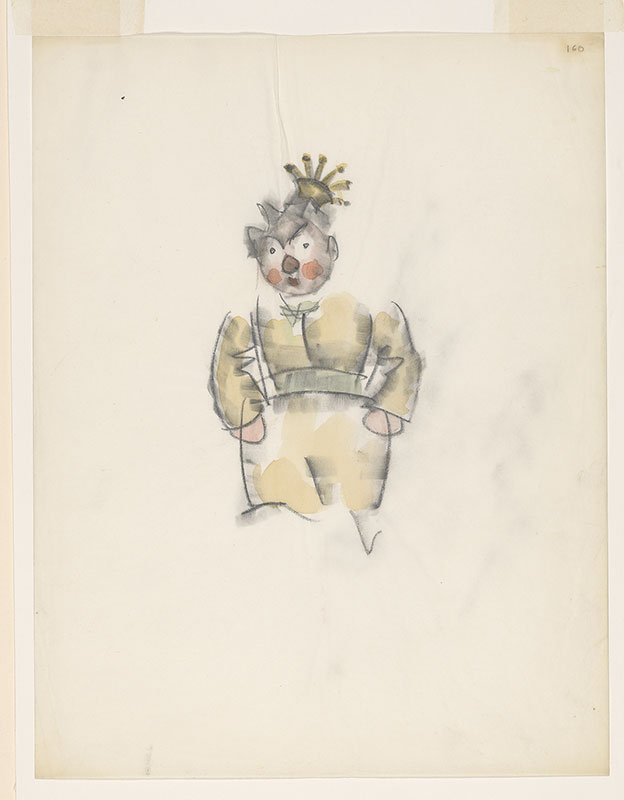
Le roi
Purchased on the Elisabeth Ball Fund, 1968
MA 2592, fol. 43
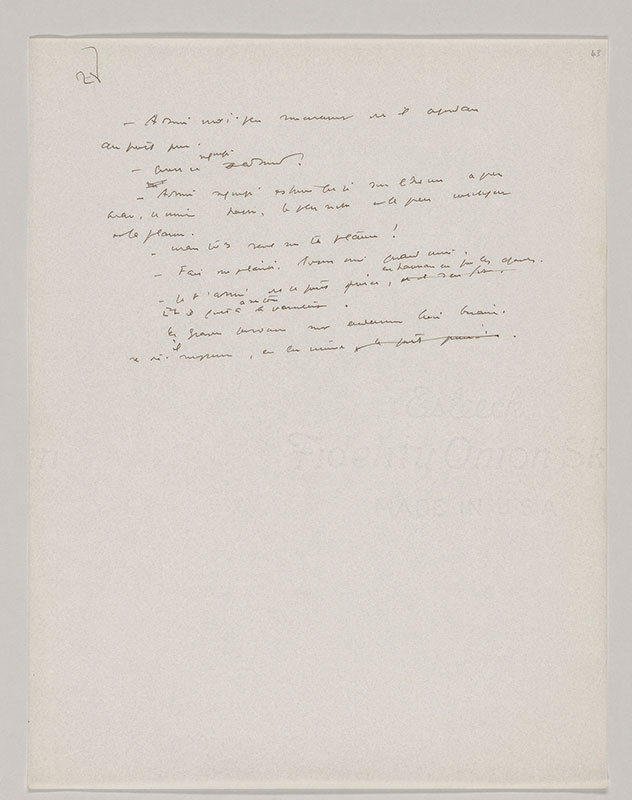
Le petit prince
Purchased on the Elisabeth Ball Fund, 1968
MA 2592, fol. 44
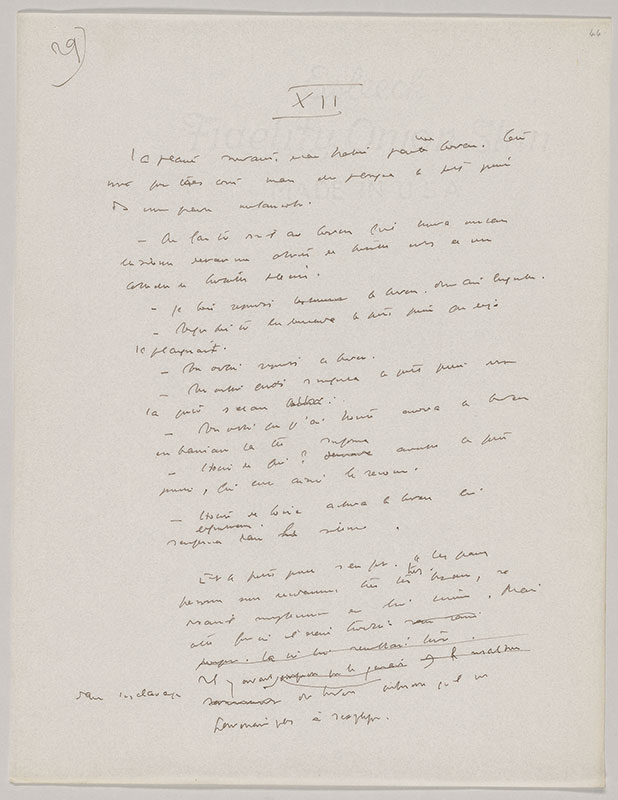
Le petit prince
Purchased on the Elisabeth Ball Fund, 1968
MA 2592.4
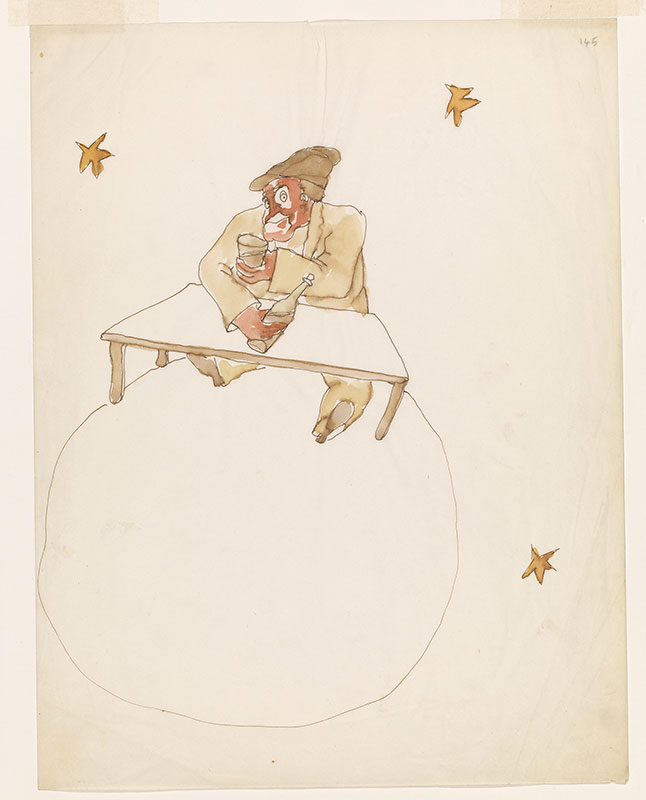
Le buveur sur sa planète
Purchased on the Elisabeth Ball Fund, 1968
MA 2592, fol. 45
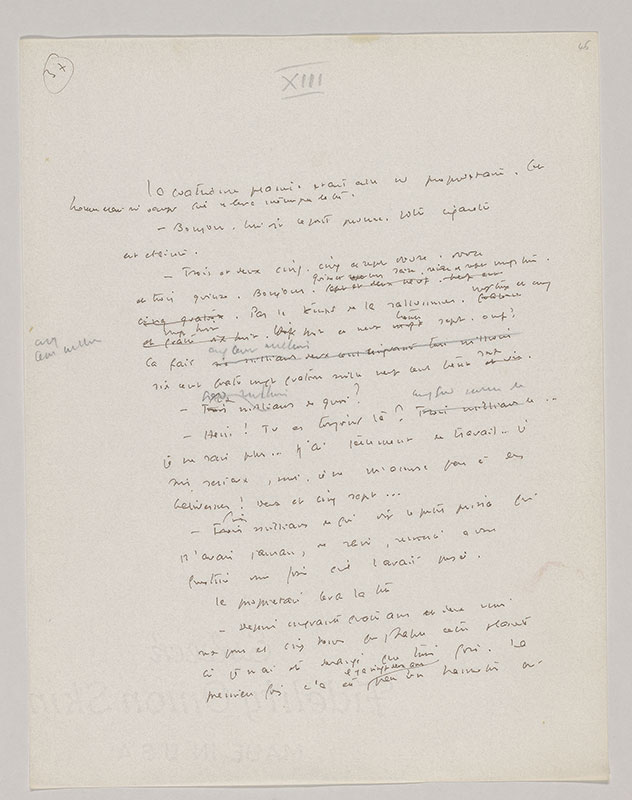
Le petit prince
Purchased on the Elisabeth Ball Fund, 1968
MA 2592, fol. 46
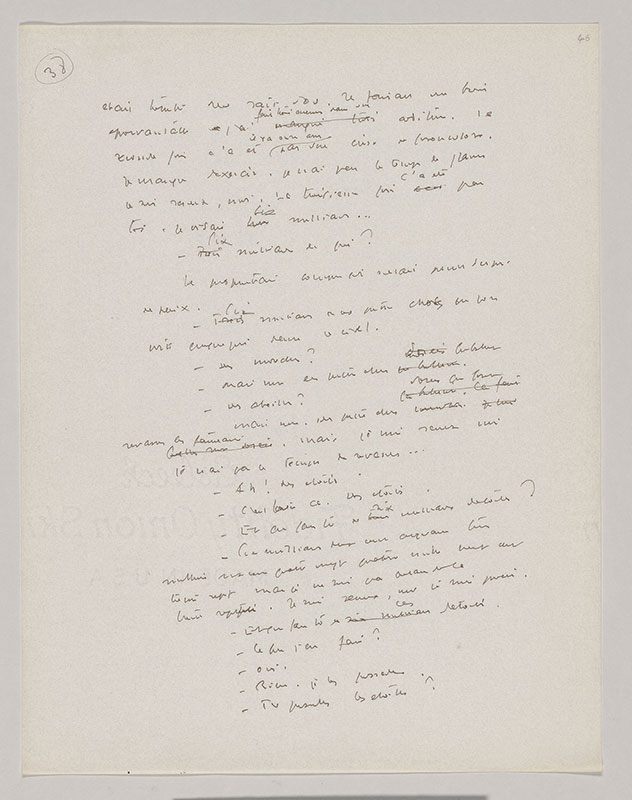
Le petit prince
Purchased on the Elisabeth Ball Fund, 1968
MA 2592.28
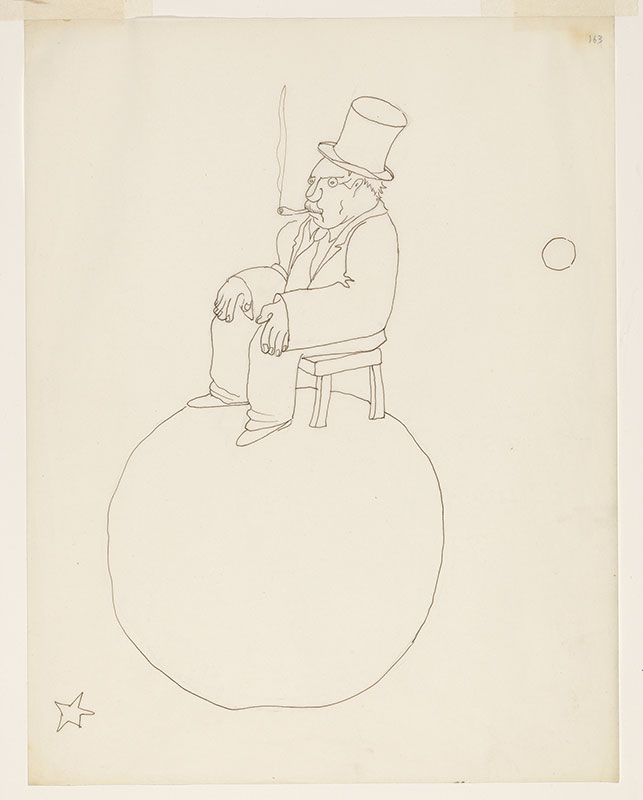
Le businessman
Purchased on the Elisabeth Ball Fund, 1968
MA 2592, fol. 47
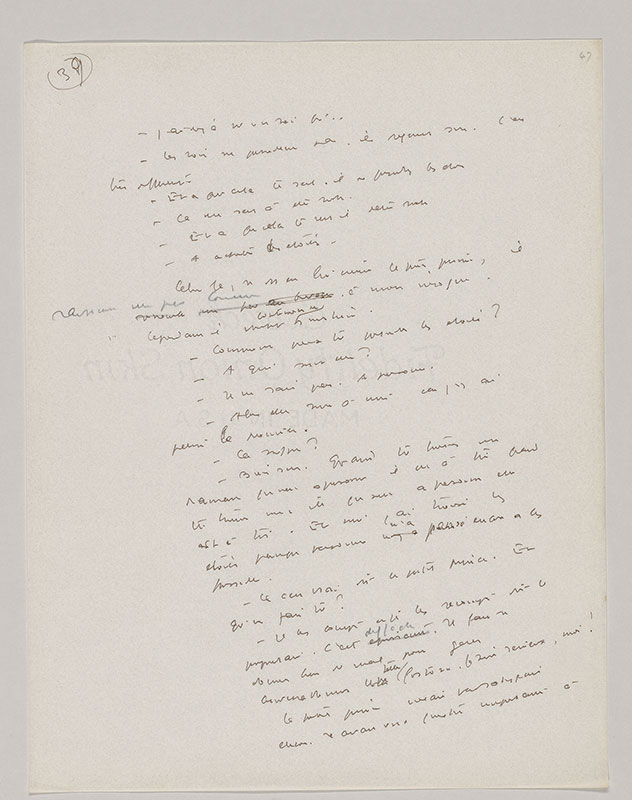
Le petit prince
Purchased on the Elisabeth Ball Fund, 1968
MA 2592, fol. 48
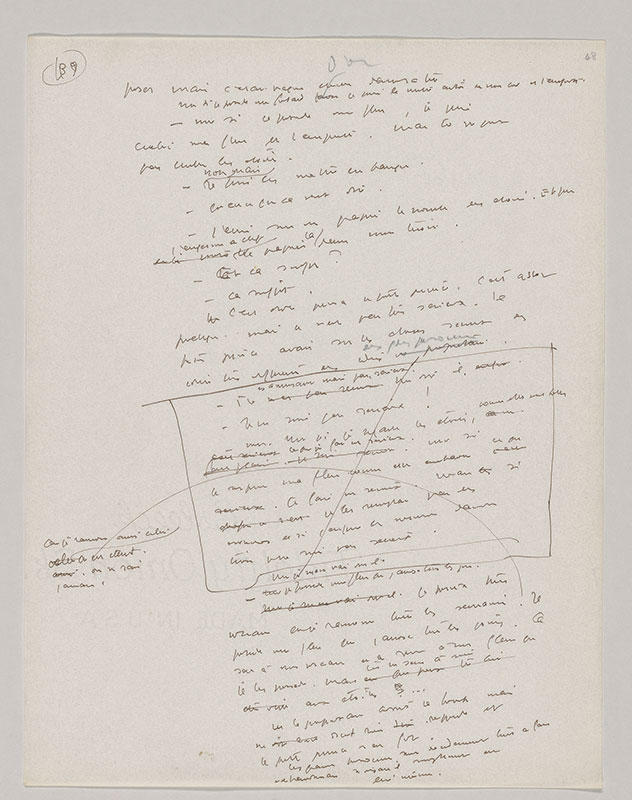
Le petit prince
Purchased on the Elisabeth Ball Fund, 1968
MA 2592, fol. 49
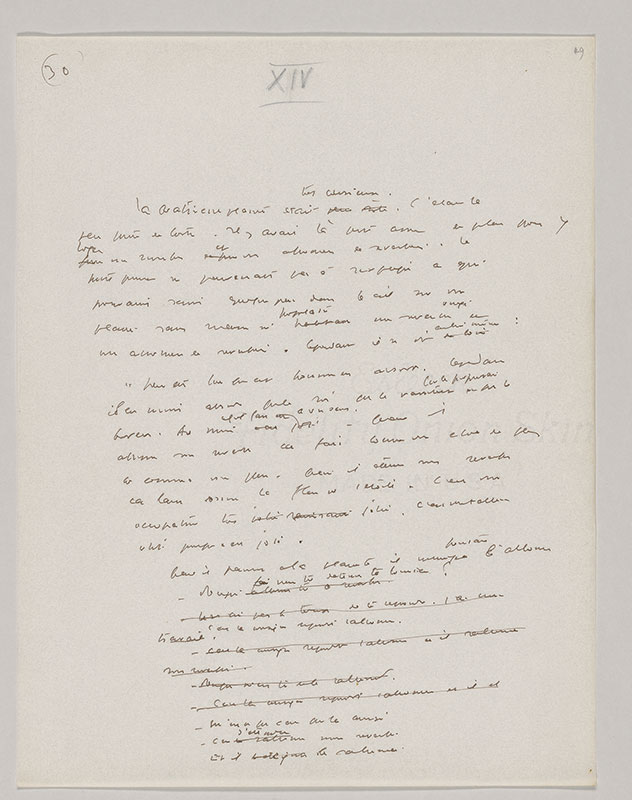
Le petit prince
Purchased on the Elisabeth Ball Fund, 1968
MA 2592, fol. 50
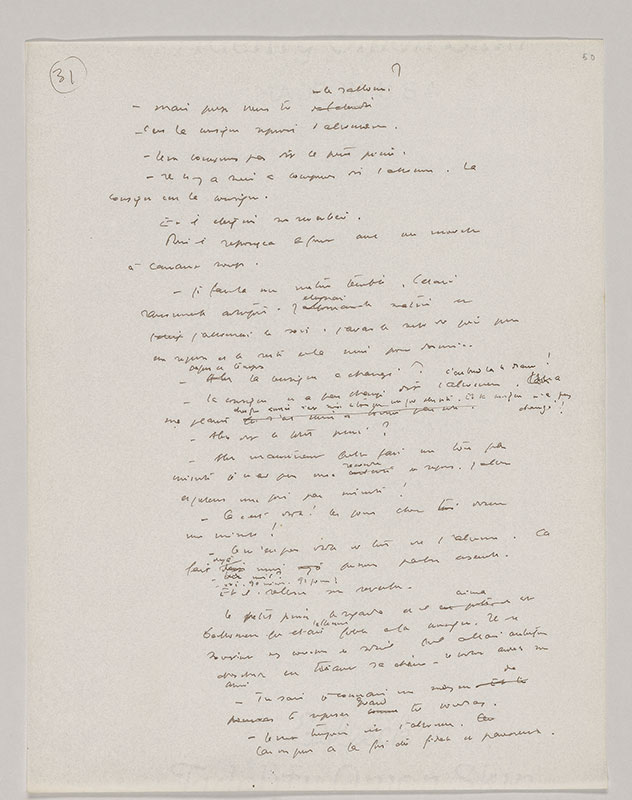
Le petit prince
Purchased on the Elisabeth Ball Fund, 1968
MA 2592, fol. 51

Le petit prince
Purchased on the Elisabeth Ball Fund, 1968
MA 2592, fol. 52
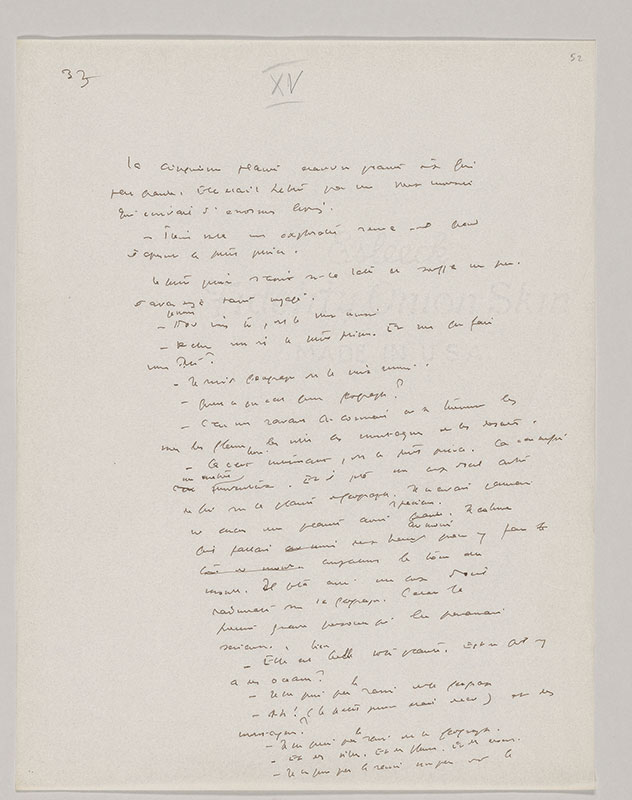
Le petit prince
Purchased on the Elisabeth Ball Fund, 1968
MA 2592.22
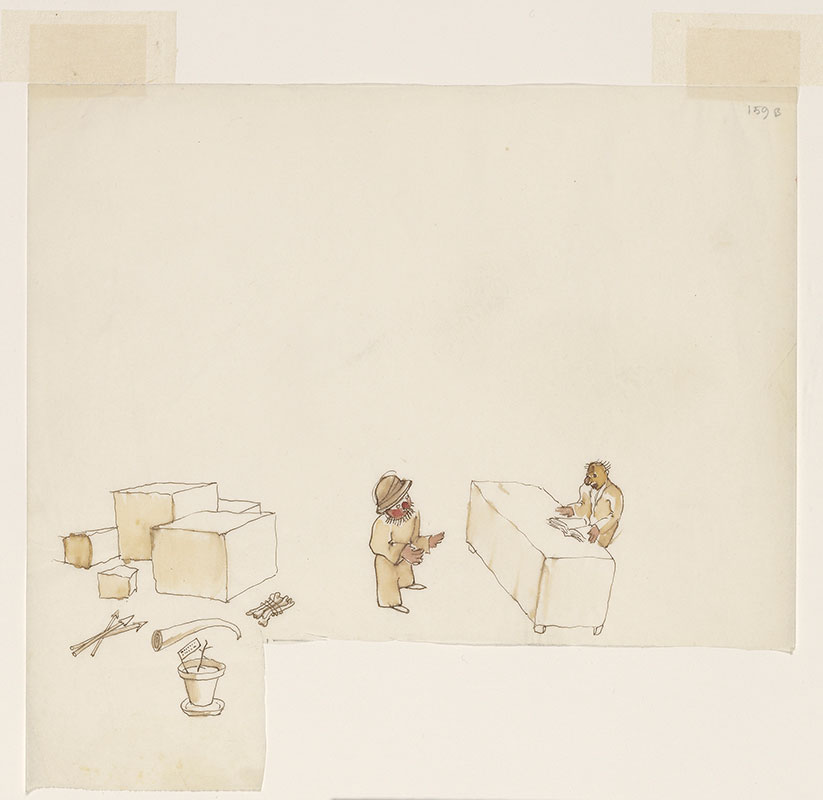
La rencontre du géographe et de l’explorateur
Purchased on the Elisabeth Ball Fund, 1968
MA 2592, fol. 53
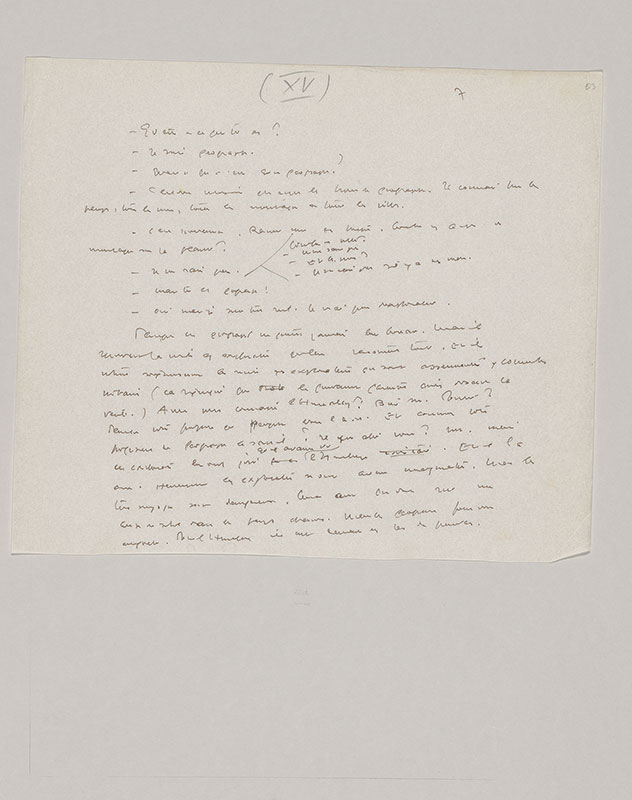
Le petit prince
Purchased on the Elisabeth Ball Fund, 1968
MA 2592, fol. 54
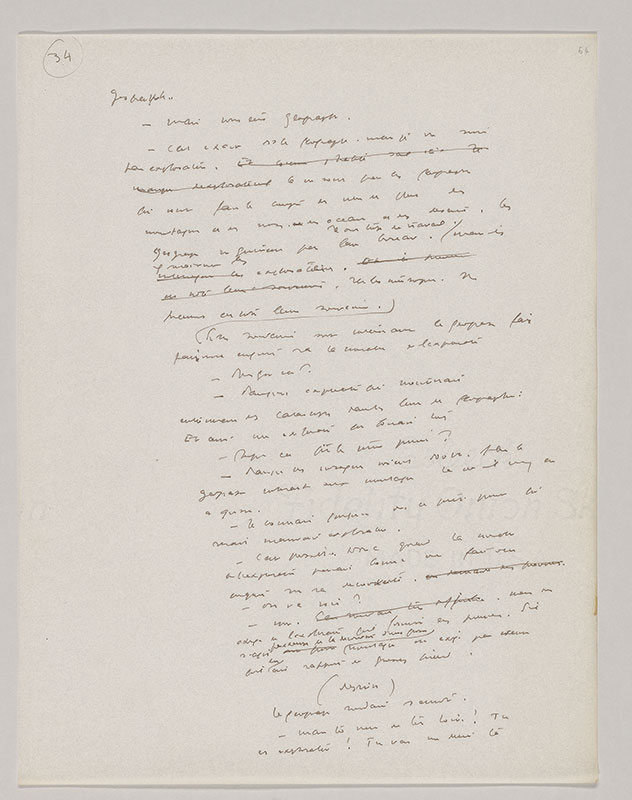
Le petit prince
Purchased on the Elisabeth Ball Fund, 1968
MA 2592, fol. 55
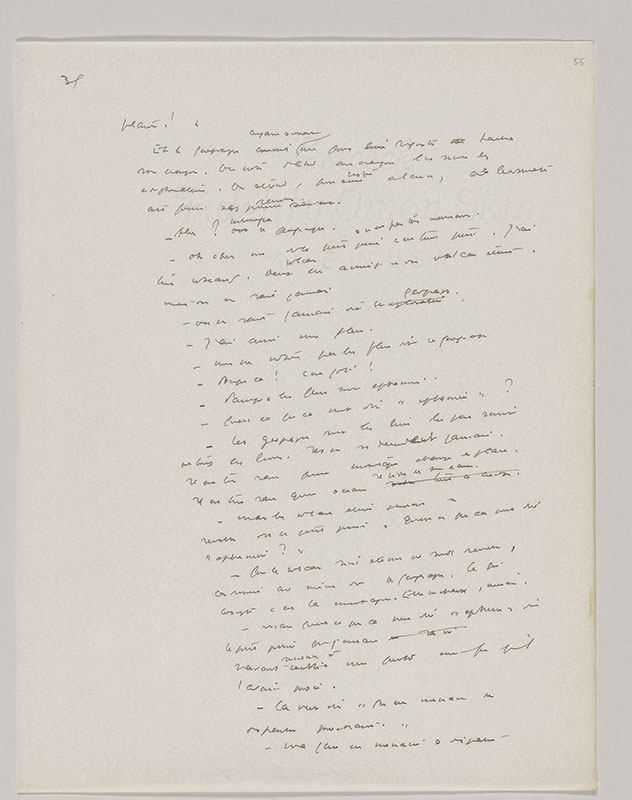
Le petit prince
Purchased on the Elisabeth Ball Fund, 1968
MA 2592.10
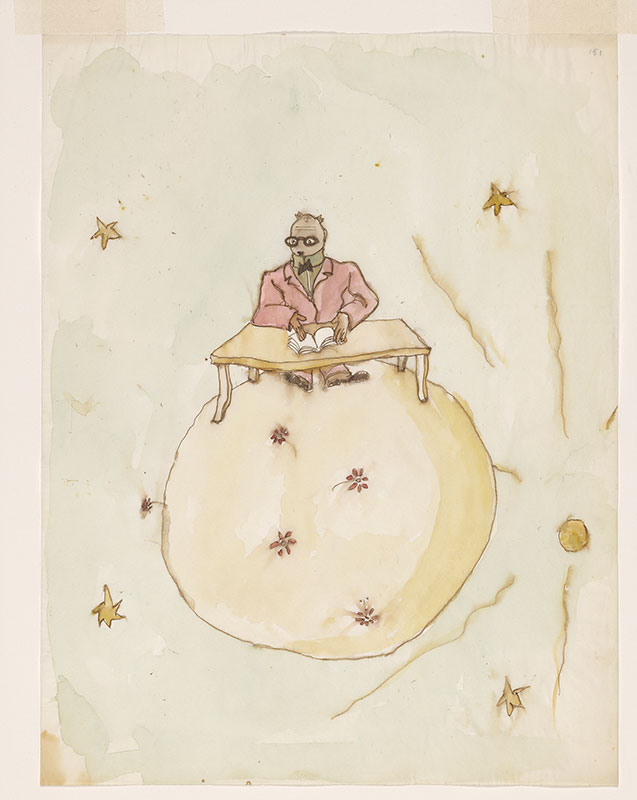
Le businessman sur sa planète
Purchased on the Elisabeth Ball Fund, 1968
MA 2592, fol. 56
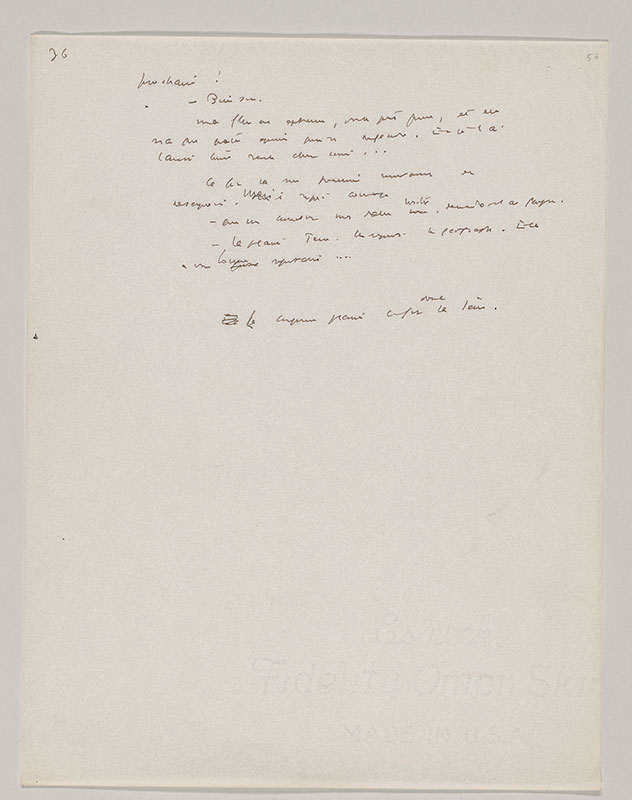
Le petit prince
Purchased on the Elisabeth Ball Fund, 1968
MA 2592, fol. 57
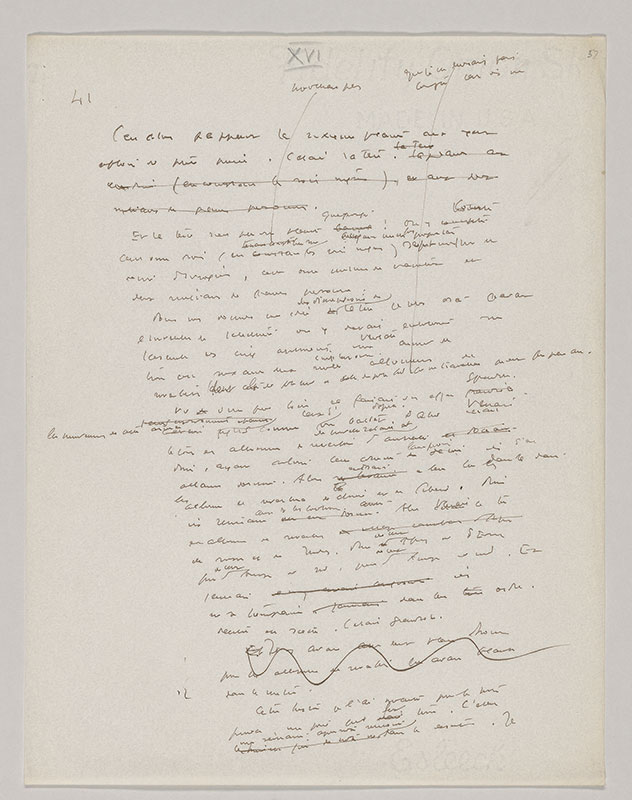
Le petit prince
Purchased on the Elisabeth Ball Fund, 1968
MA 2592, fol. 58
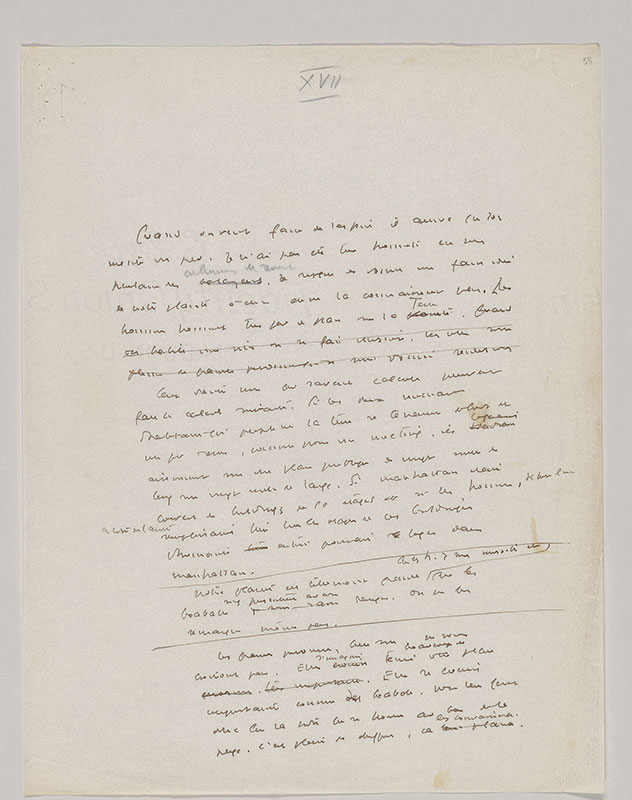
Le petit prince
Purchased on the Elisabeth Ball Fund, 1968
MA 2592, fol. 59
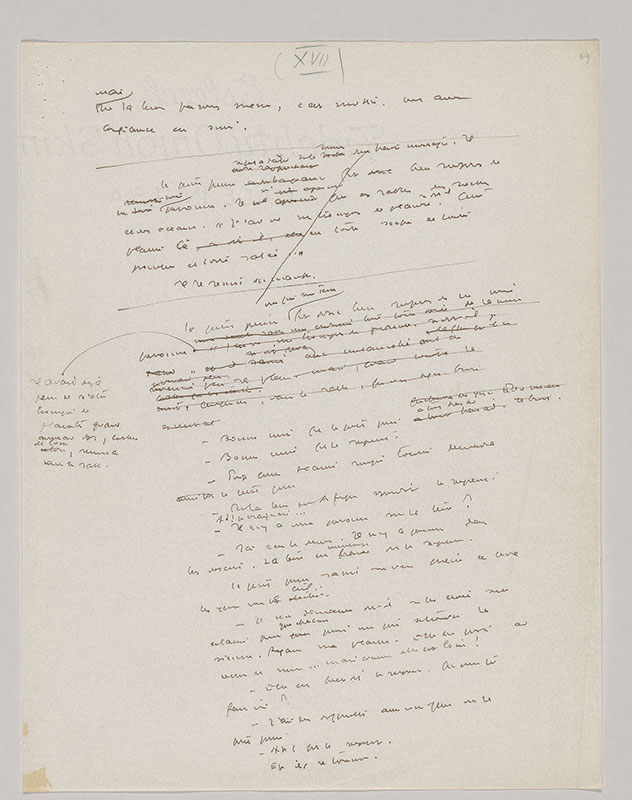
Le petit prince
Purchased on the Elisabeth Ball Fund, 1968
MA 2592.5
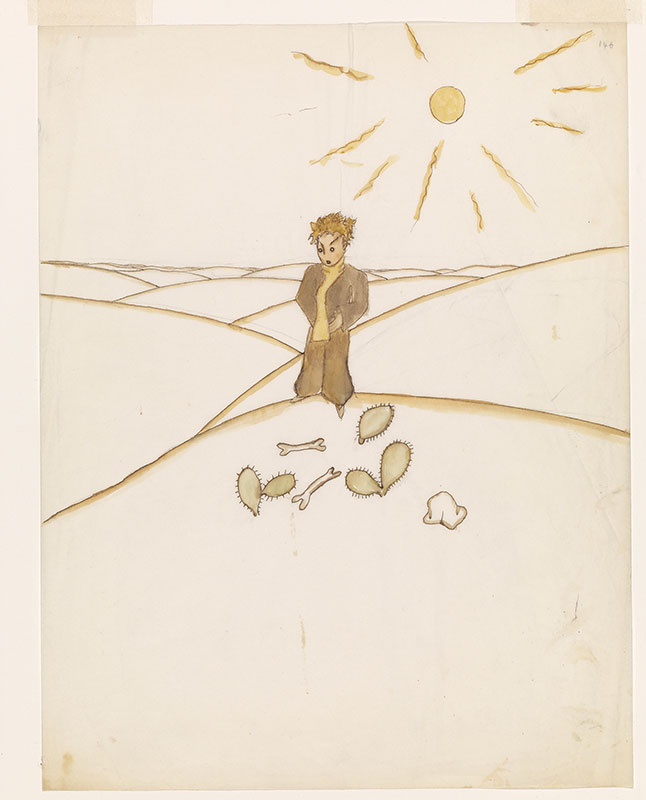
Le petit prince dans le désert, devant des os et des cactus
Purchased on the Elisabeth Ball Fund, 1968
MA 2592, fol. 60
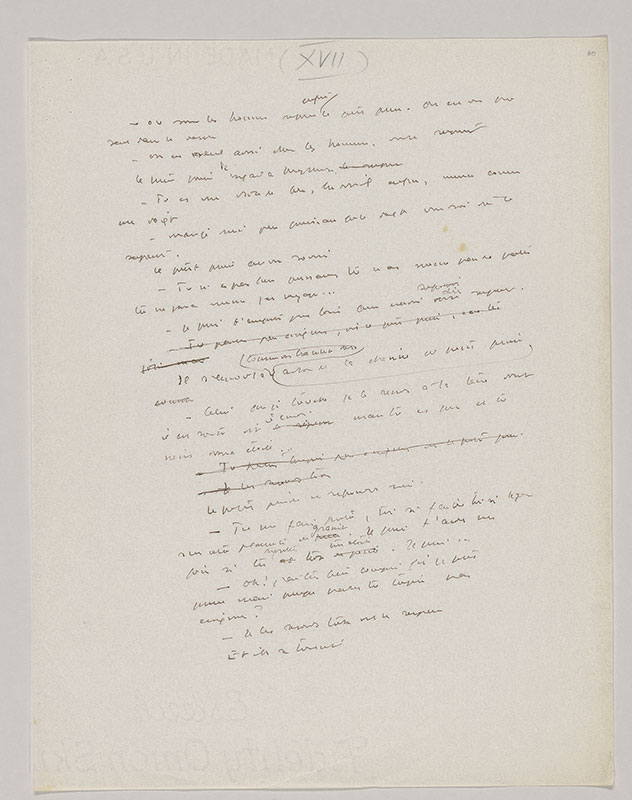
Le petit prince
Purchased on the Elisabeth Ball Fund, 1968
MA 2592, fol. 61
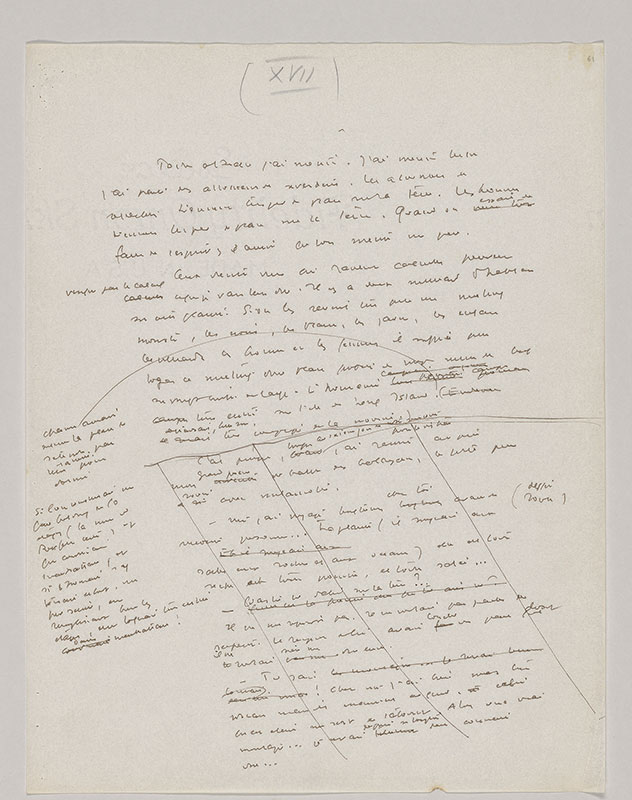
Le petit prince
Purchased on the Elisabeth Ball Fund, 1968
MA 2592.31
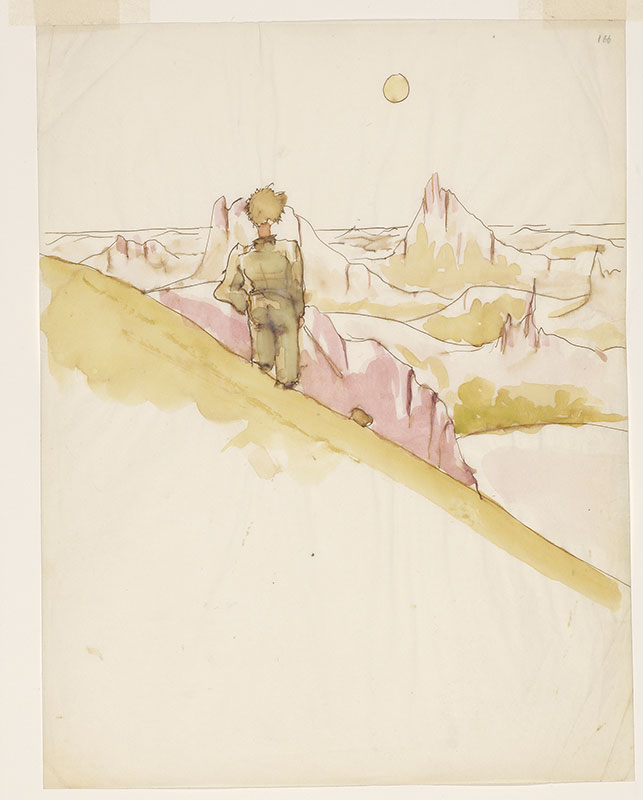
Le petit prince regardant un massif montagneux
Purchased on the Elisabeth Ball Fund, 1968
MA 2592, fol. 62
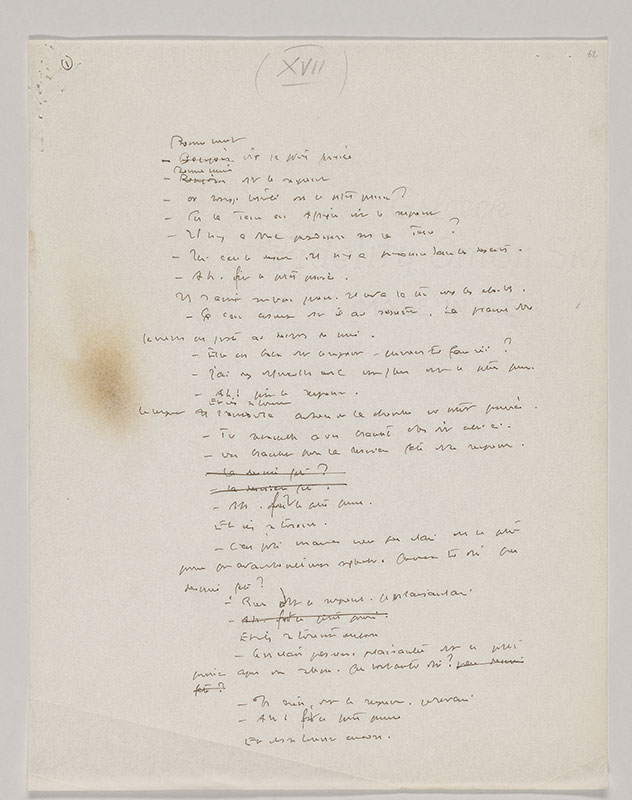
Le petit prince
Purchased on the Elisabeth Ball Fund, 1968
MA 2592, fol. 63
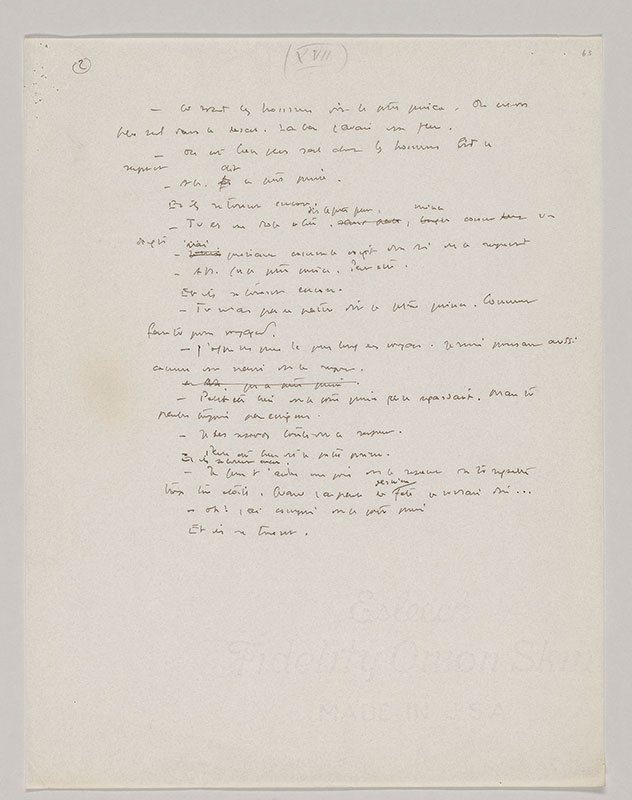
Le petit prince
Purchased on the Elisabeth Ball Fund, 1968
MA 2592, fol. 64
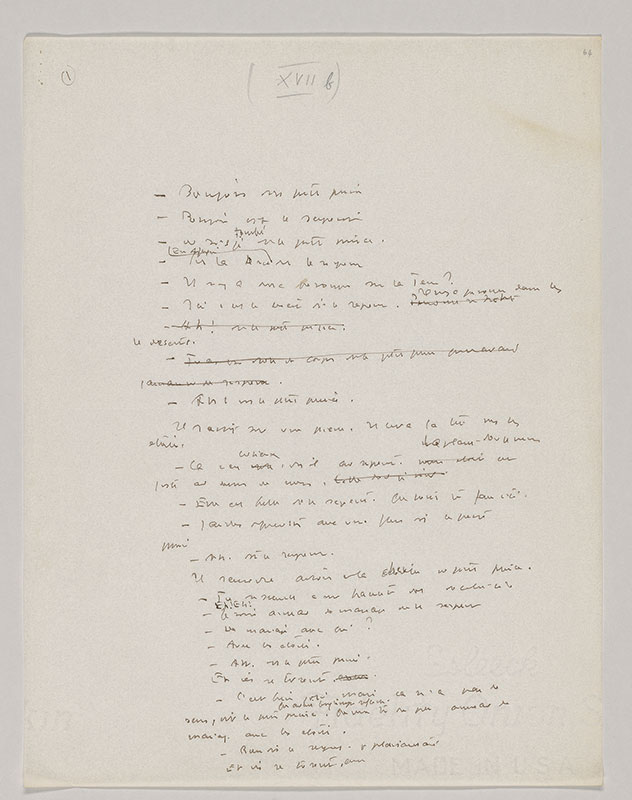
Le petit prince
Purchased on the Elisabeth Ball Fund, 1968
MA 2592, fol. 65
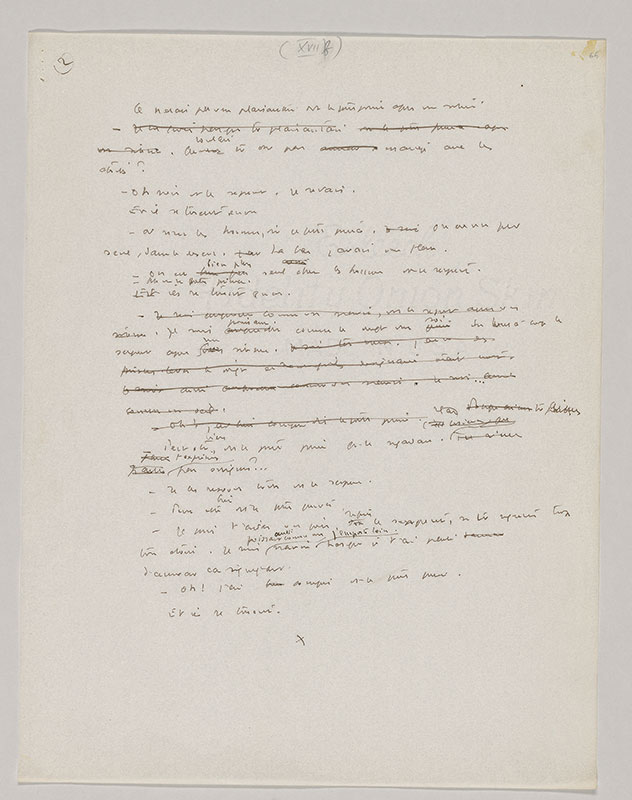
Le petit prince
Purchased on the Elisabeth Ball Fund, 1968
MA 2592, fol. 66
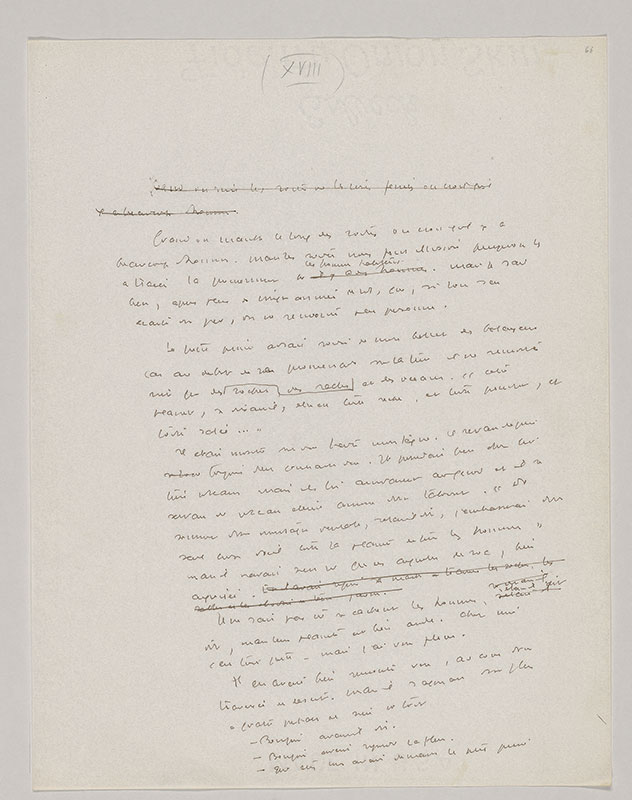
Le petit prince
Purchased on the Elisabeth Ball Fund, 1968
MA 2592, fol. 67
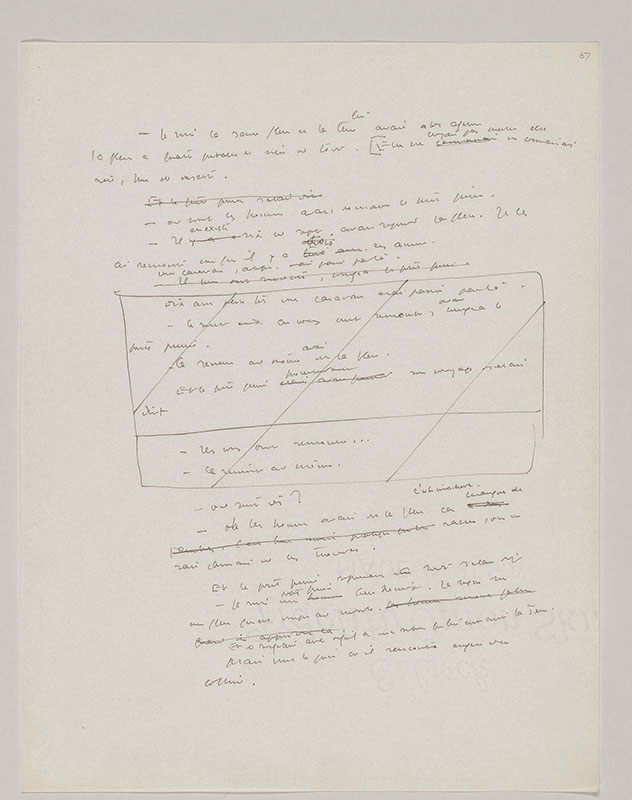
Le petit prince
Purchased on the Elisabeth Ball Fund, 1968
MA 2592, fol. 68
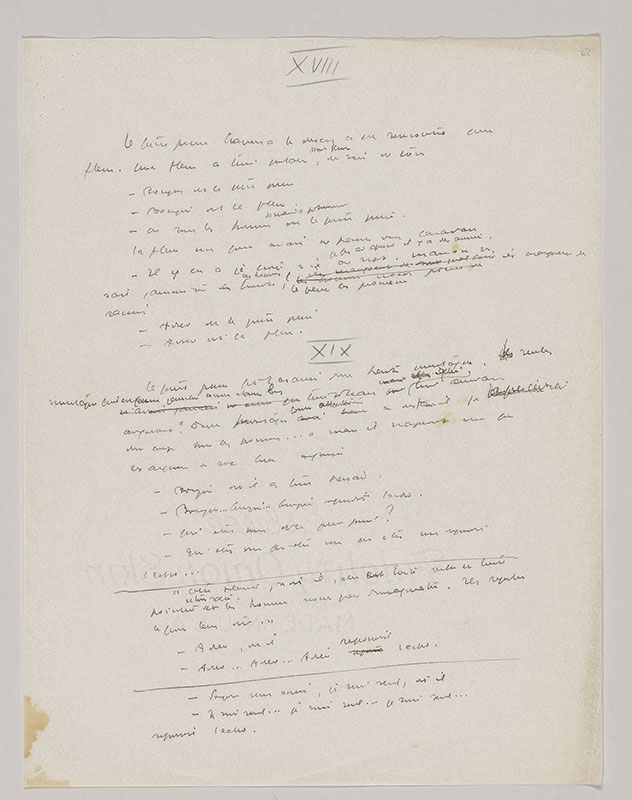
Le petit prince
Purchased on the Elisabeth Ball Fund, 1968
MA 2592.11
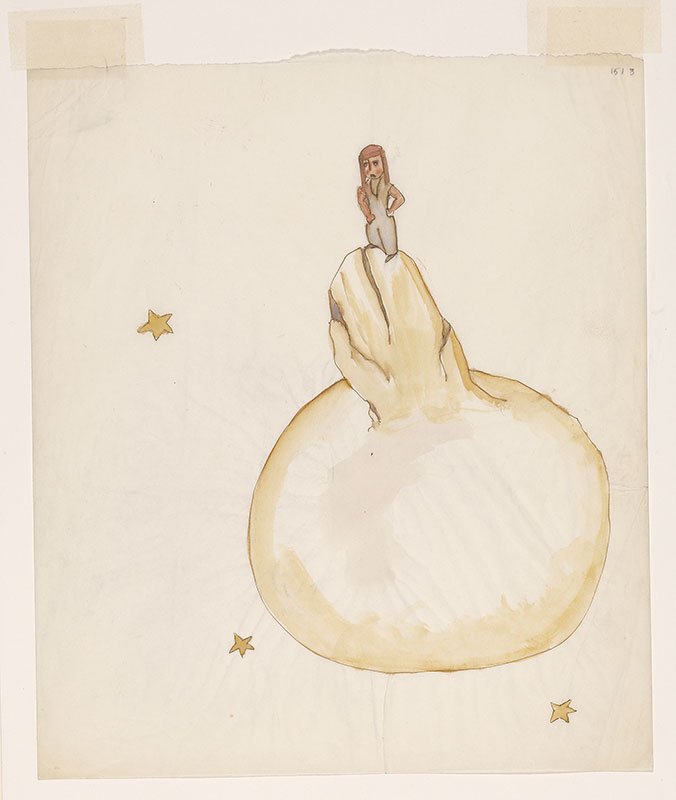
Le petit prince casqué, sur un monticule
Purchased on the Elisabeth Ball Fund, 1968
MA 2592, fol. 69
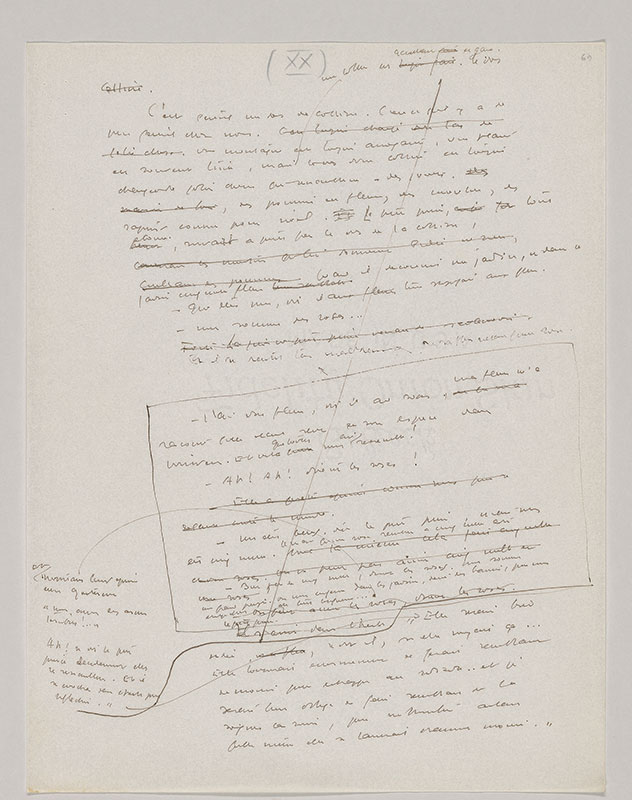
Le petit prince
Purchased on the Elisabeth Ball Fund, 1968
MA 2592, fol. 70
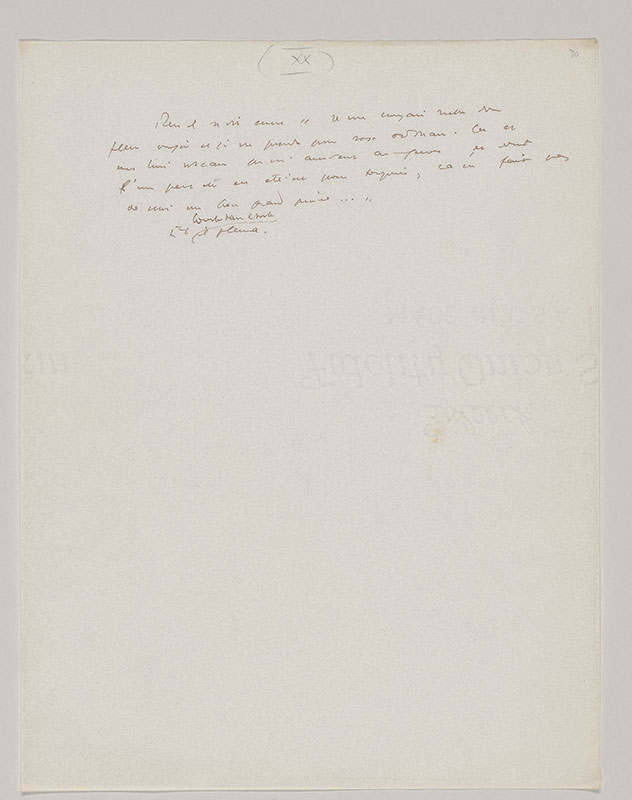
Le petit prince
Purchased on the Elisabeth Ball Fund, 1968
MA 2592.1
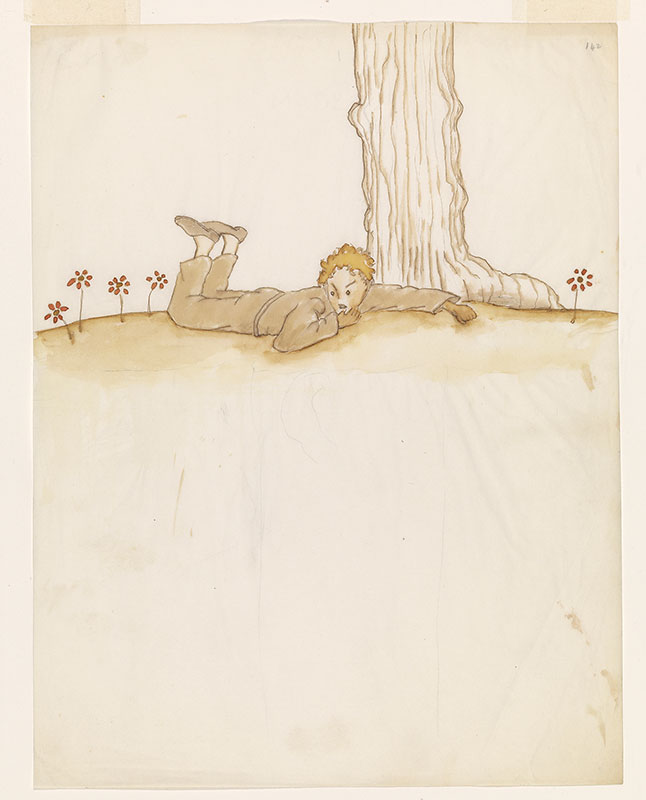
Le petit prince allongé sur le ventre
Purchased on the Elisabeth Ball Fund, 1968
MA 2592, fol. 71
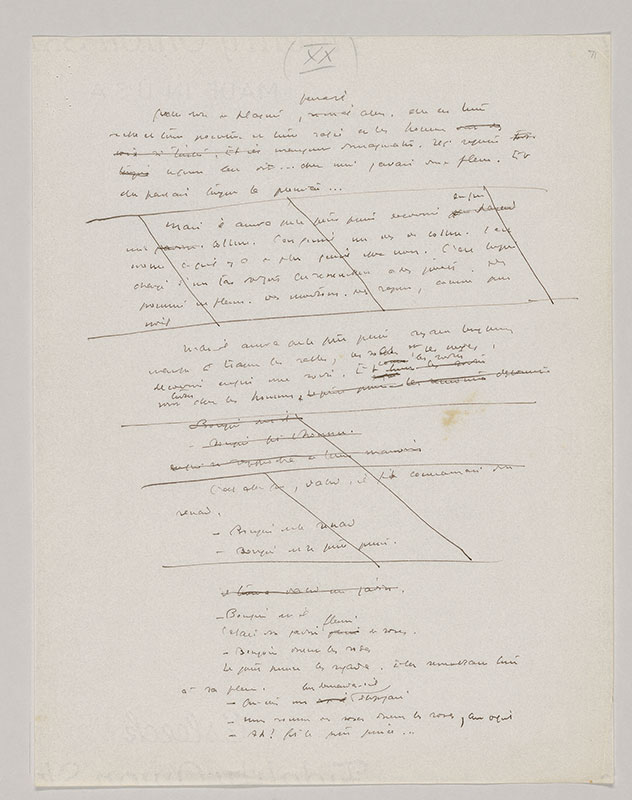
Le petit prince
Purchased on the Elisabeth Ball Fund, 1968
MA 2592, fol. 72
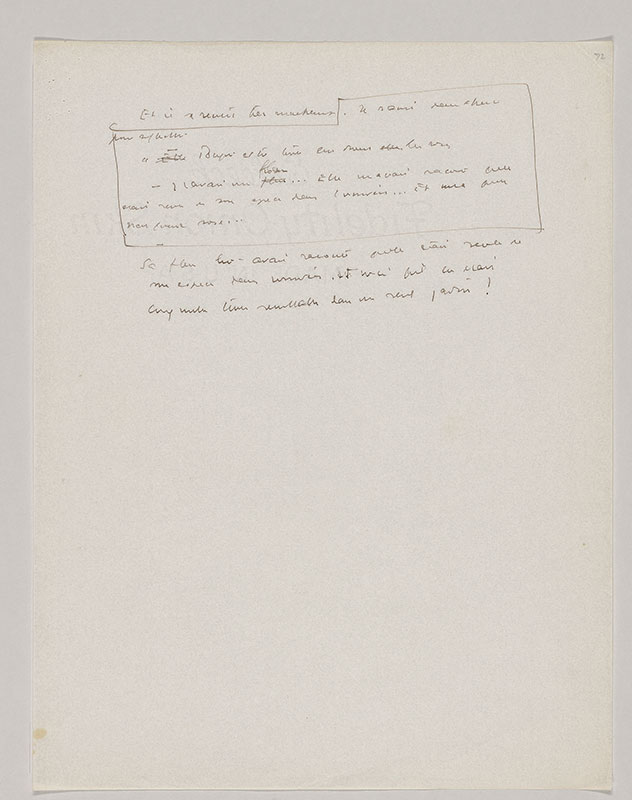
Le petit prince
Purchased on the Elisabeth Ball Fund, 1968
MA 2592.27
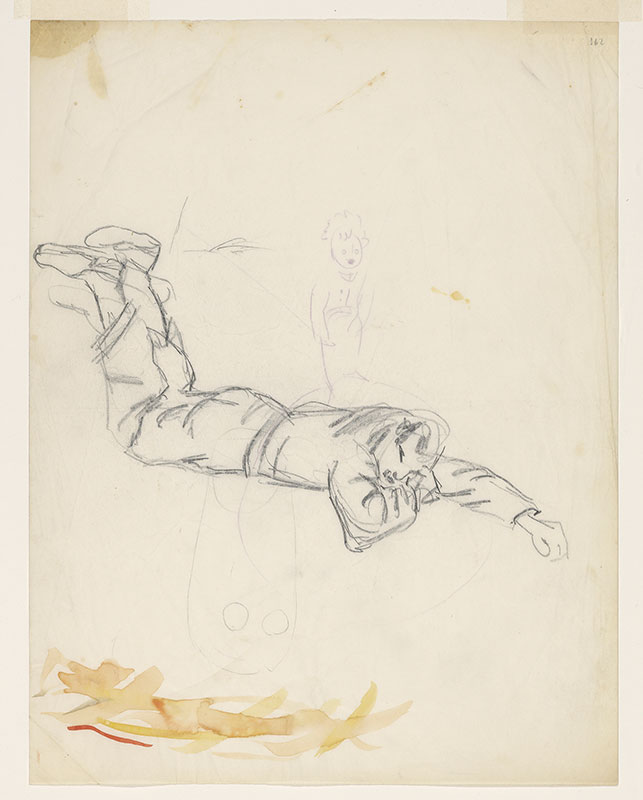
Esquisse du petit prince, allongé sur le ventre
Purchased on the Elisabeth Ball Fund, 1968
MA 2592, fol. 73
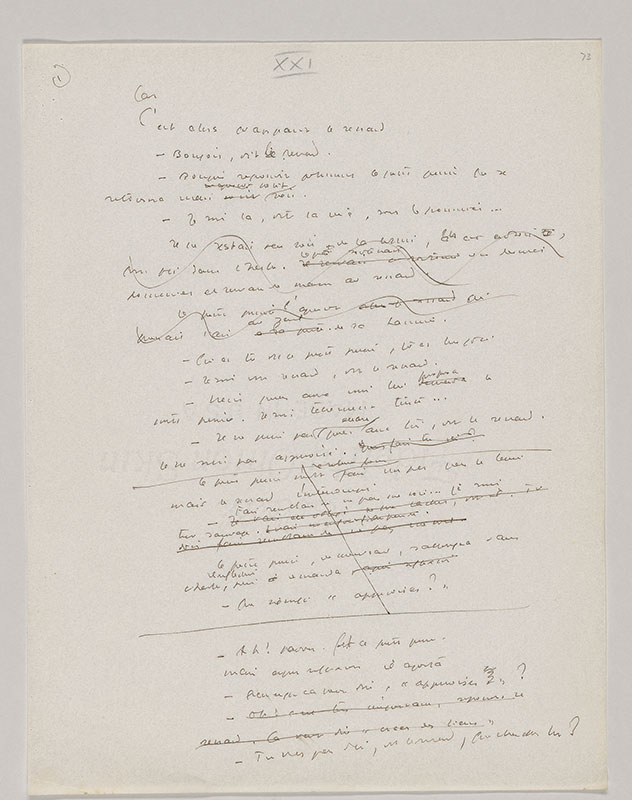
Le petit prince
Purchased on the Elisabeth Ball Fund, 1968
MA 2592, fol. 74

Le petit prince
Purchased on the Elisabeth Ball Fund, 1968
MA 2592.13
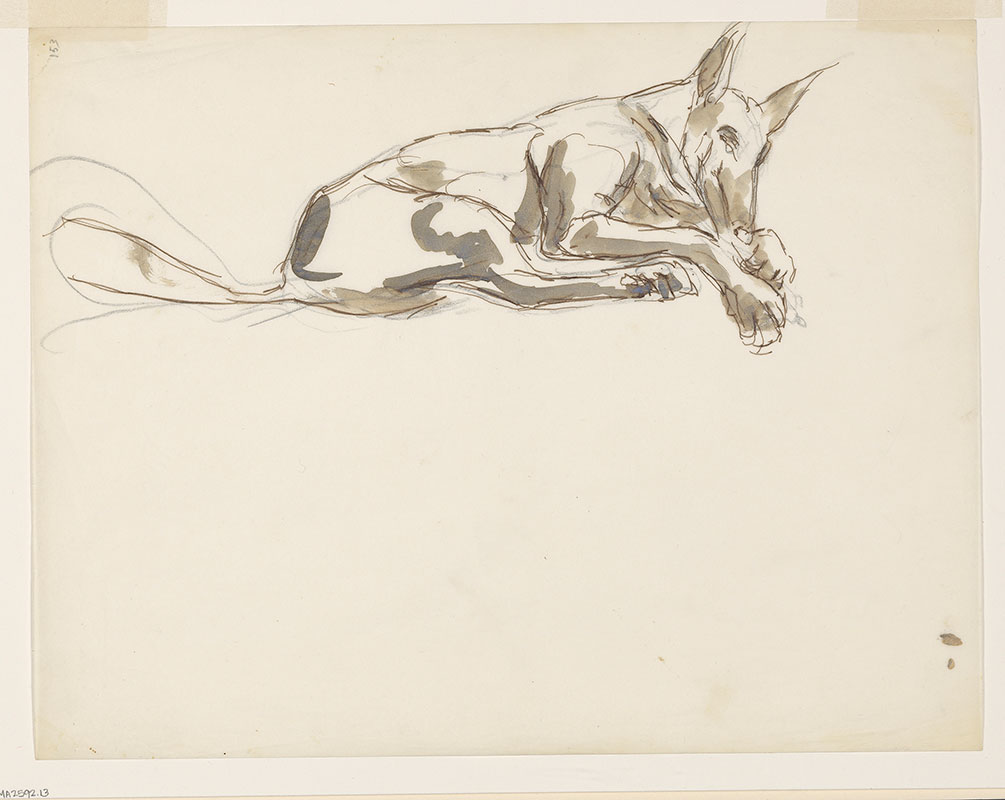
Un chien ou renard couché devant une esquisse de terrier
Purchased on the Elisabeth Ball Fund, 1968
MA 2592, fol. 75
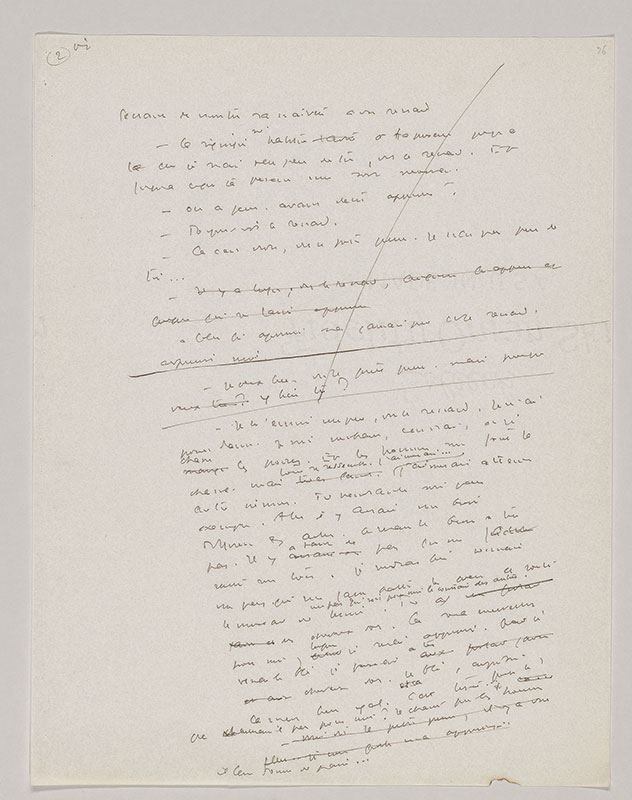
Le petit prince
Purchased on the Elisabeth Ball Fund, 1968
MA 2592, fol. 76
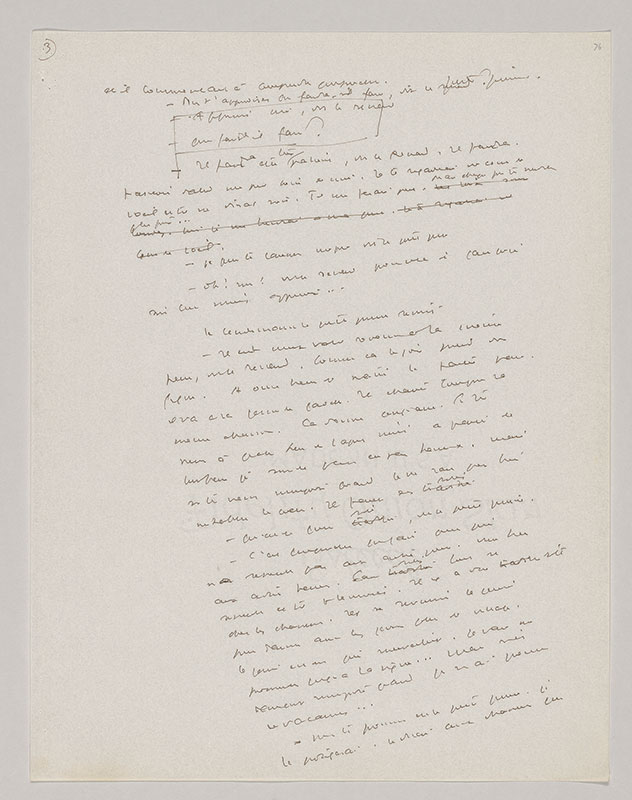
Le petit prince
Purchased on the Elisabeth Ball Fund, 1968
MA 2592, fol. 77
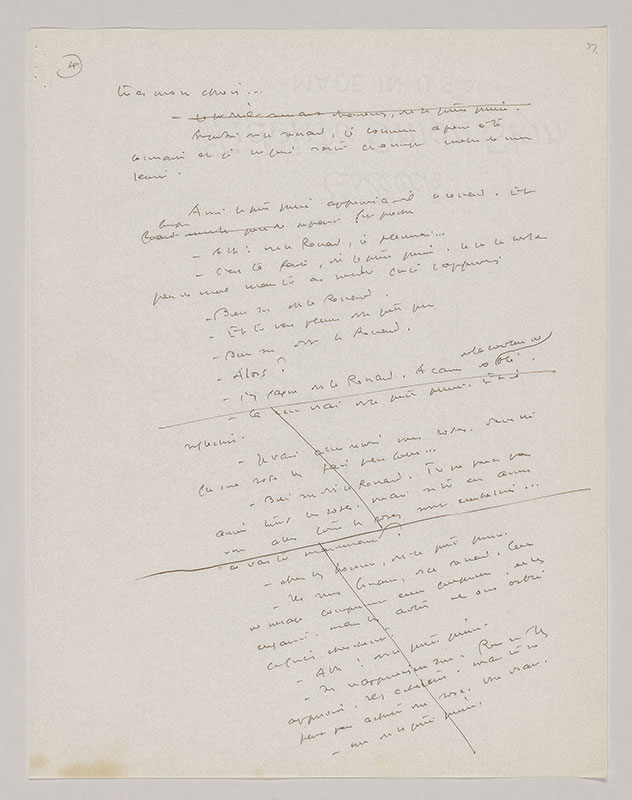
Le petit prince
Purchased on the Elisabeth Ball Fund, 1968
MA 2592, fol. 78
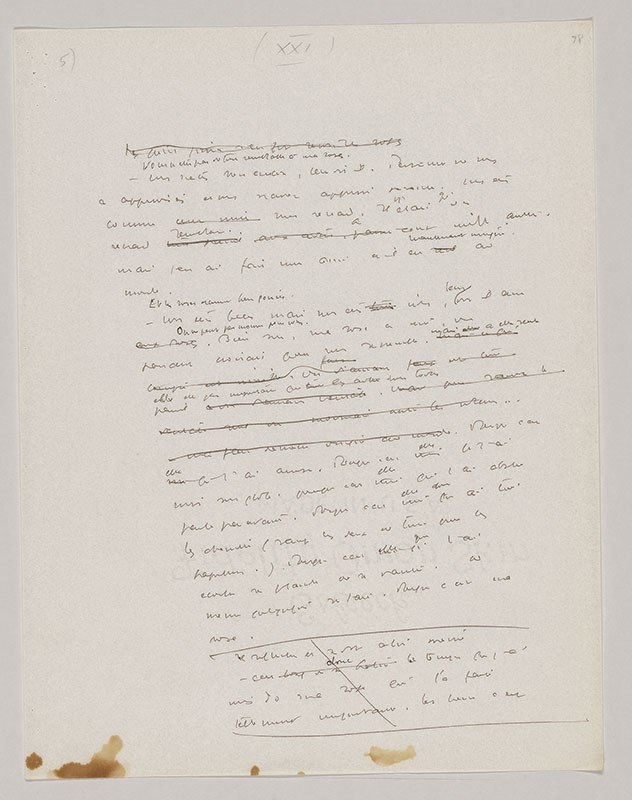
Le petit prince
Purchased on the Elisabeth Ball Fund, 1968
MA 2592, fol. 79
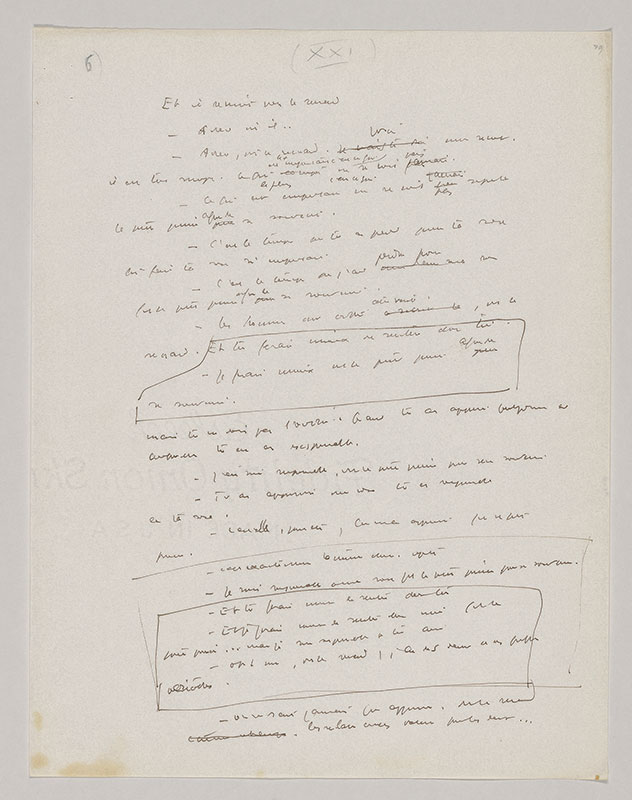
Le petit prince
Purchased on the Elisabeth Ball Fund, 1968
MA 2592, fol. 80
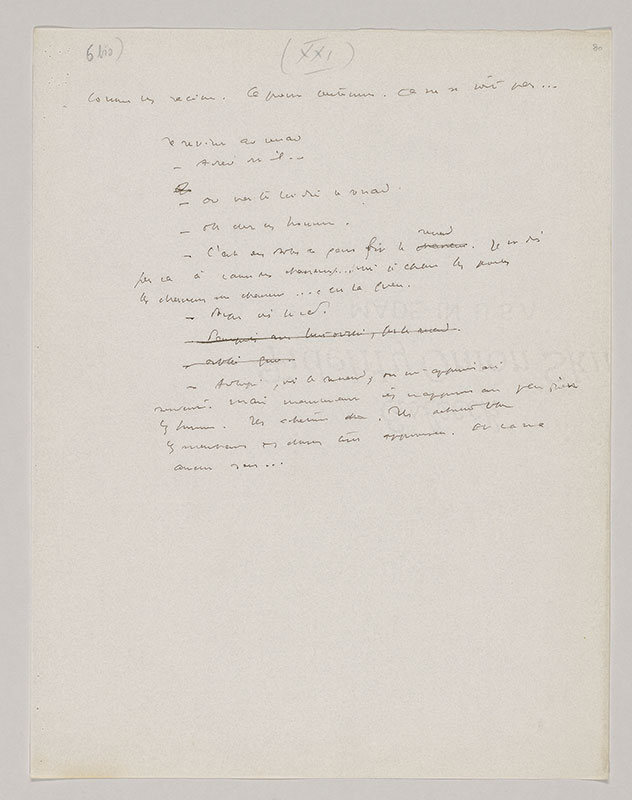
Le petit prince
Purchased on the Elisabeth Ball Fund, 1968
MA 2592, fol. 81
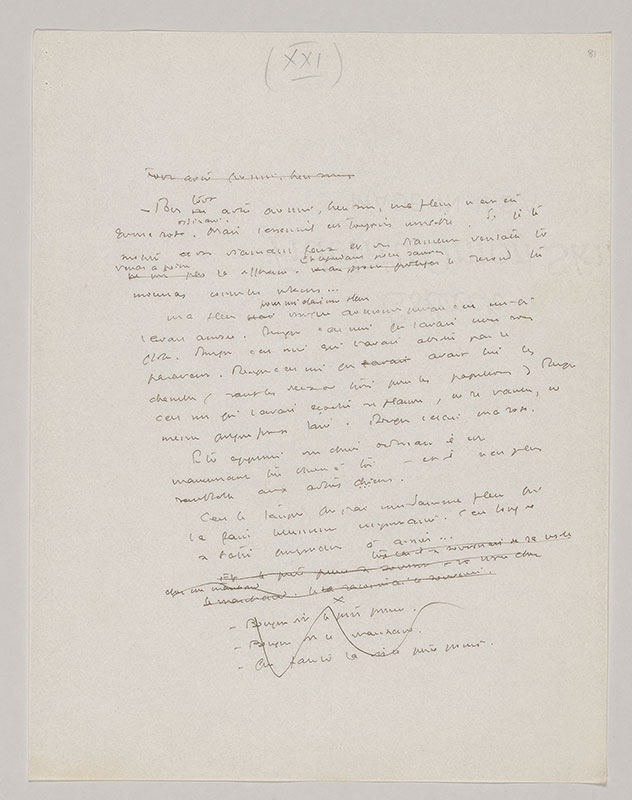
Le petit prince
Purchased on the Elisabeth Ball Fund, 1968
Everyone but me, of course
“To an everyone but me, of course, my flower is nothing but an ordinary rose. But what is essential is always invisible. If I show you and [sic] a fake diamond and a real diamond you won’t see will hardly see the difference. But in order to protect And yet to save the fox you will die like a thief.…”
“My flower was was for me a flower unique in the world because I’m the one who watered her. Because I’m the one who put the globe over her. Because I’m the one who shielded her with a screen. Because I’m the one who had killed caterpillars for her (all but two or three for butterflies). Because I’m the one who listened to her complain, or brag, and sometimes even be silent. Because she was my rose.”
“If you tame an ordinary dog it becomes your own dog—it is no longer like other dogs.”
“It’s the time I have spent on my flower that makes her so important. It takes a long time to build something to love …”
And the little prince remembered his visit to was sad when he remembered his visit the shopkeeper to the shopkeeper. I’ll tell you what happened.
“Hello,” said the little prince.“Hello,” said the shopkeeper.“What are you doing?” said the little prince.
Tout autre que moi, bien sûr,
–Pour tout un autre que me, bien sûr, ma fleur n’eut été qu’une rose ordinaire. Mais l’essentiel est toujours invisible. Si je te montre et un diamant faux et un diamant véritable tu ne voit pas verras à peine la différence. Mais pour protéger Et cependant pour sauver le renard tu mourras comme les voleurs …
Ma fleur était pour moi était une fleur unique au monde parce que c’est moi qui
l’avais arrosée. Puisque c’est moi qui l’avais mise sous globe. Puisque c’est moi que l’avais abritée par le paravent. Puisque c’est moi qui l’avais avais tué les chenilles (sauf les deux ou trois pour les papillons). Puisque c’est moi qui l’avais écoutée se plaindre, ou se vanter, ou même quelque fois se taire. Puisque c’était ma rose.
Si tu apprivoises un chien ordinaire il est maintenant ton chien à toi —et il n’est plus semblable aux autres chiens.
C’est le temps que j’ai mis dans ma fleur qui l’a fait tellement importante. C’est long de bâtir quelque chose à aimer …
Et le petit prince se souvint de sa visite chez triste car il se souvenait de sa visite le marchand chez un marchand. je te ranconterai ce souvenir.
–Bonjour dit le petit prince.–Bonjour dit le marchand.Que fais-tu là dit le petit prince?
MA 2592.7
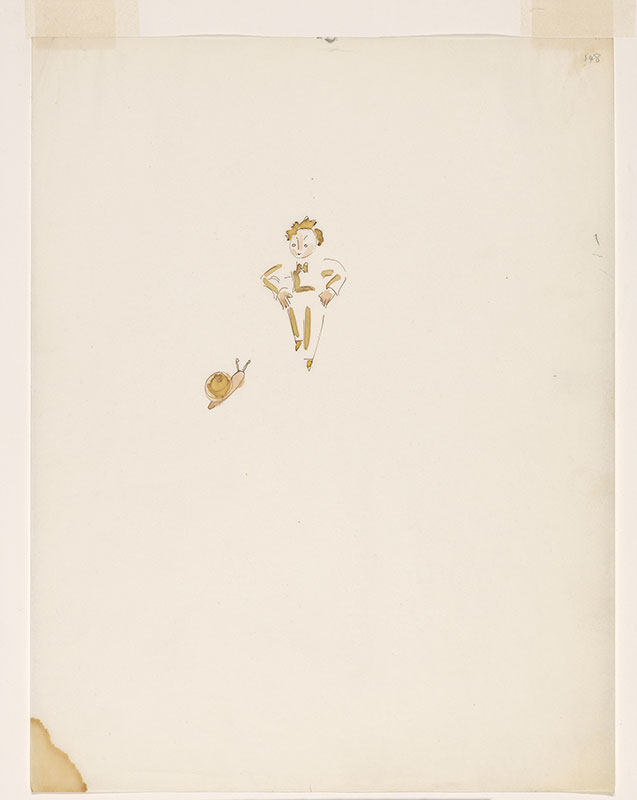
Le petit prince et un escargot
Purchased on the Elisabeth Ball Fund, 1968
MA 2592, fol. 82
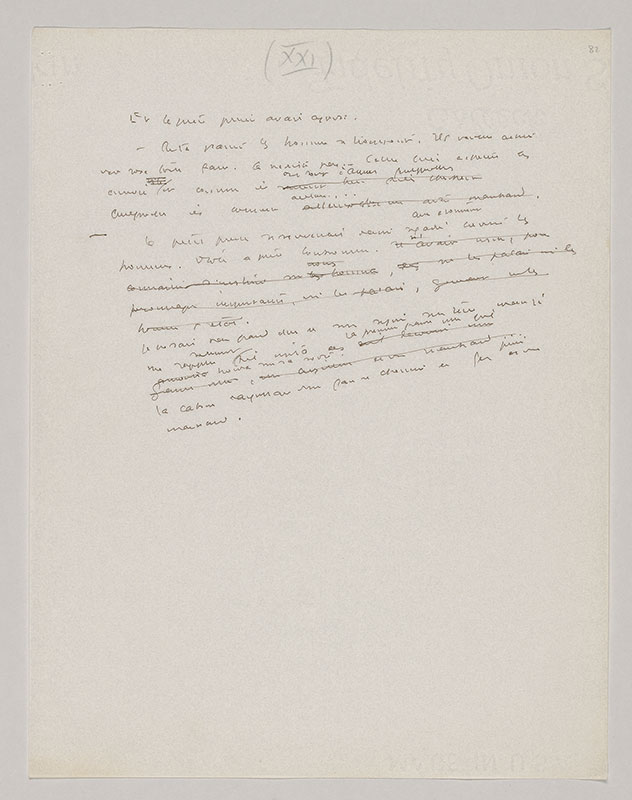
Le petit prince
Purchased on the Elisabeth Ball Fund, 1968
MA 2592, fol. 83
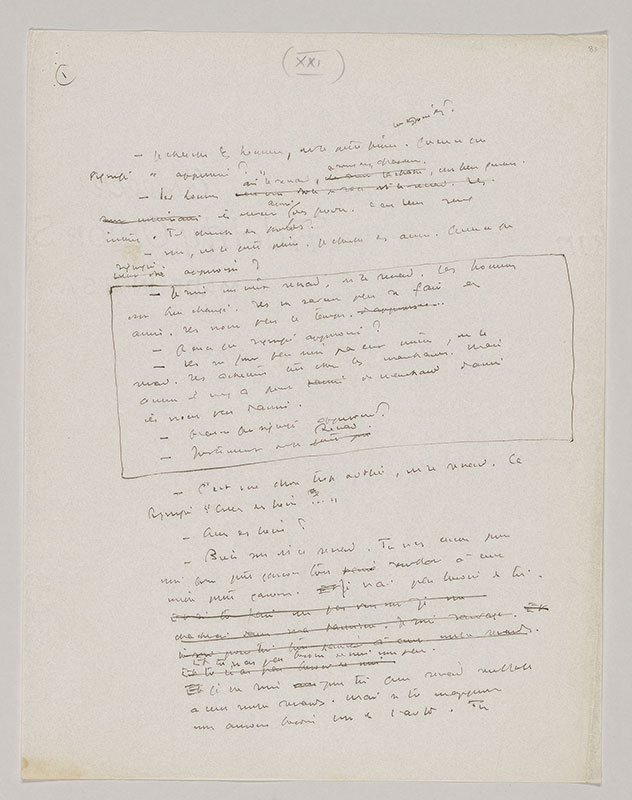
Le petit prince
Purchased on the Elisabeth Ball Fund, 1968
MA 2592.21
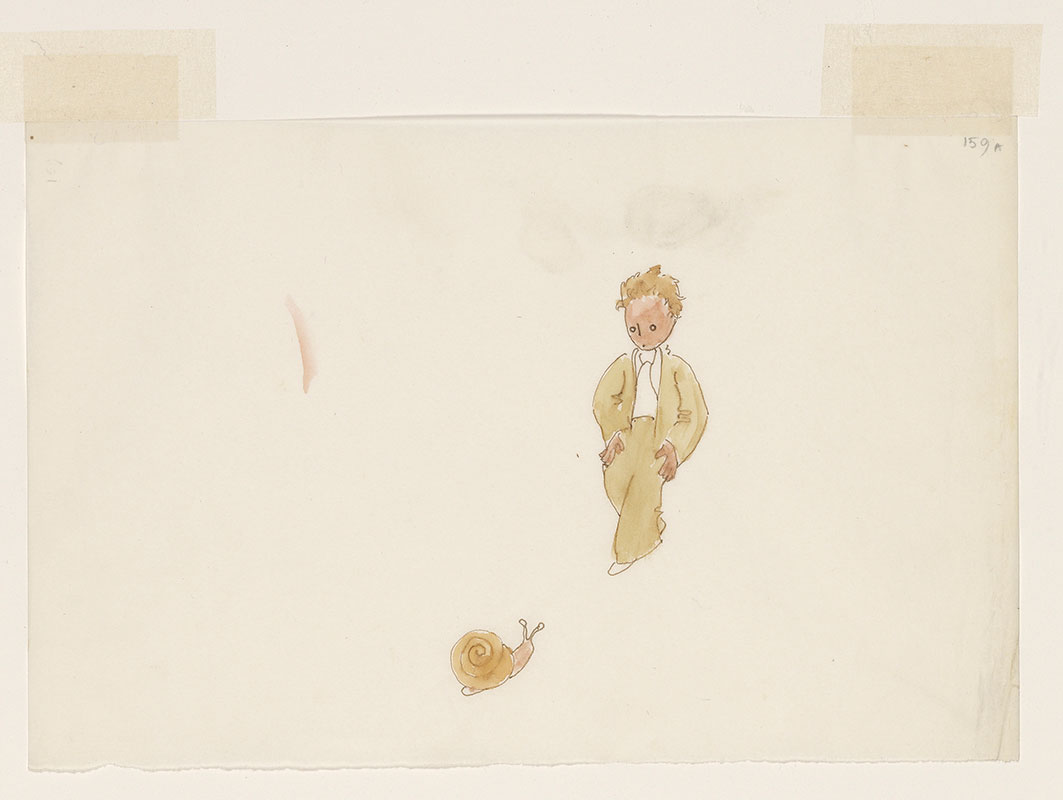
Le petit prince et un escargot
Purchased on the Elisabeth Ball Fund, 1968
MA 2592, fol. 84
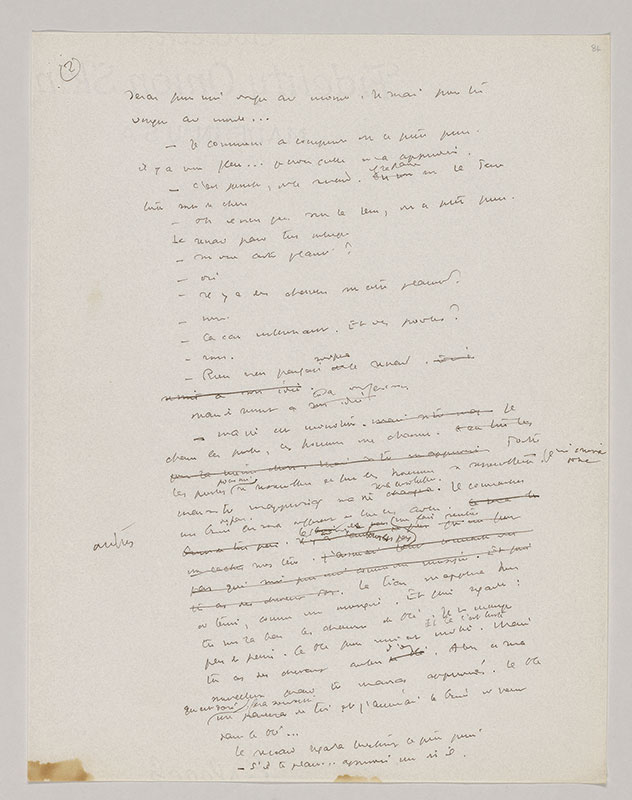
Le petit prince
Purchased on the Elisabeth Ball Fund, 1968
MA 2592, fol. 85
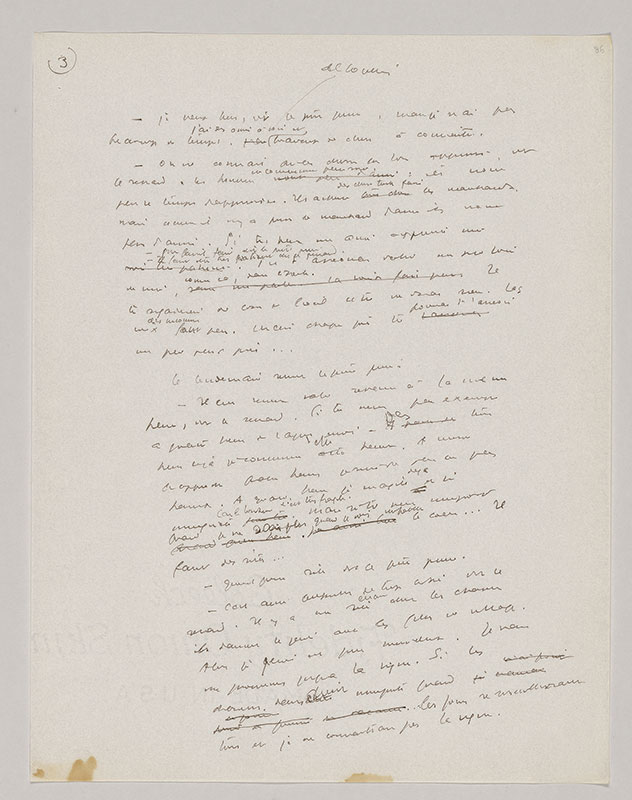
Le petit prince
Purchased on the Elisabeth Ball Fund, 1968
MA 2592, fol. 86
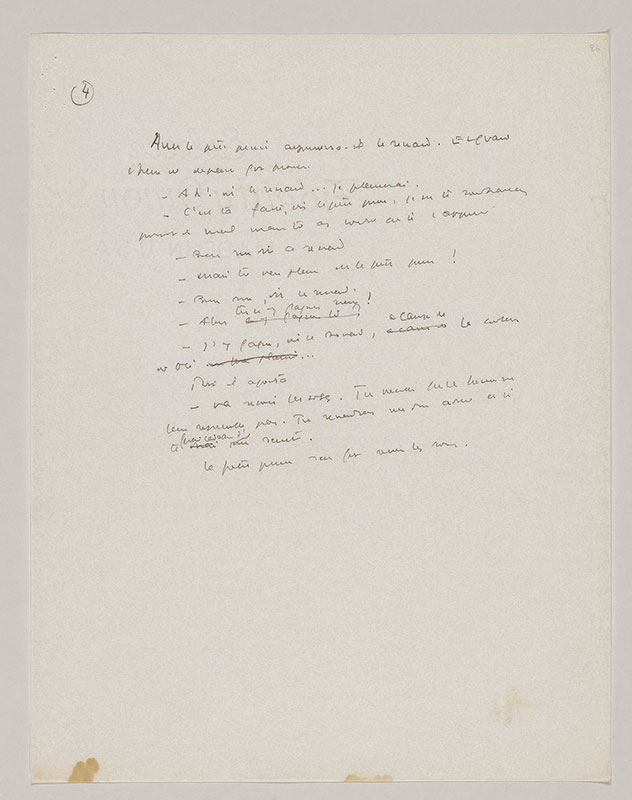
Le petit prince
Purchased on the Elisabeth Ball Fund, 1968
MA 2592, fol. 87
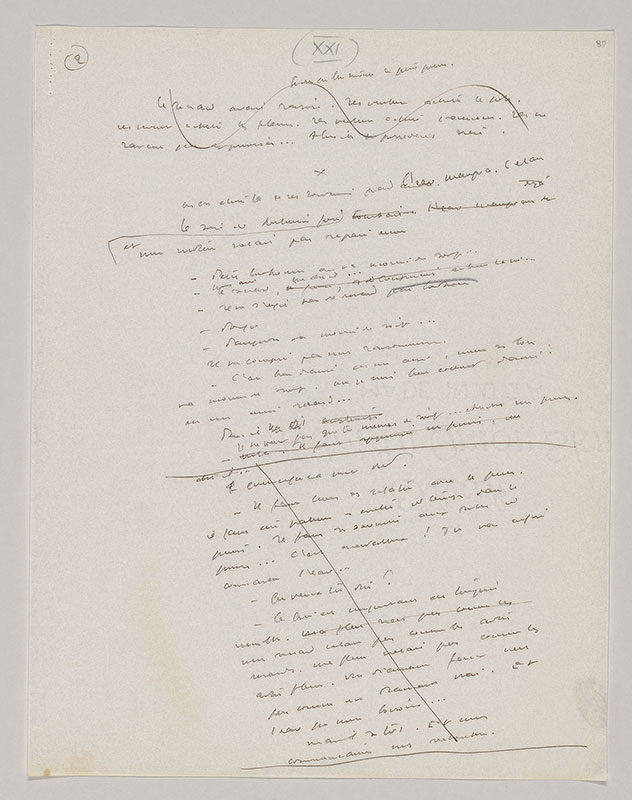
Le petit prince
Purchased on the Elisabeth Ball Fund, 1968
MA 2592, fol. 88
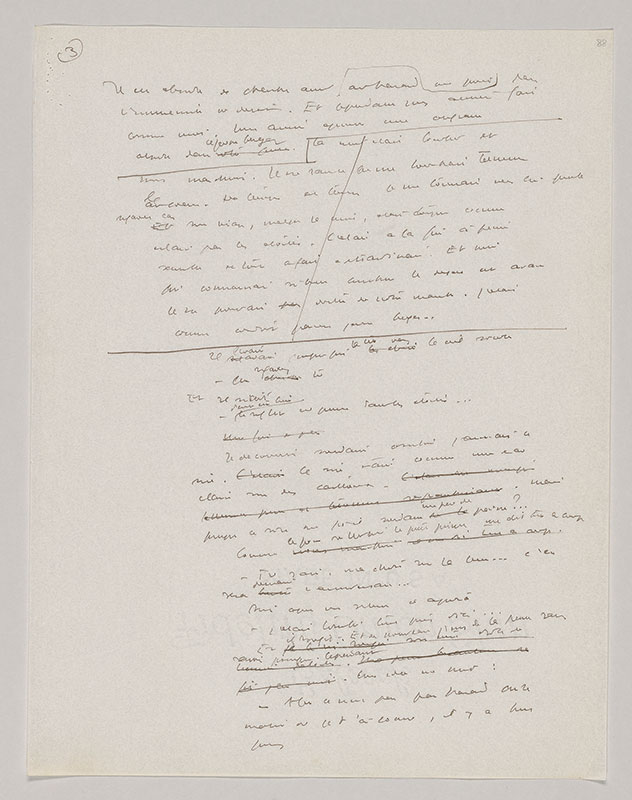
Le petit prince
Purchased on the Elisabeth Ball Fund, 1968
MA 2592, fol. 89
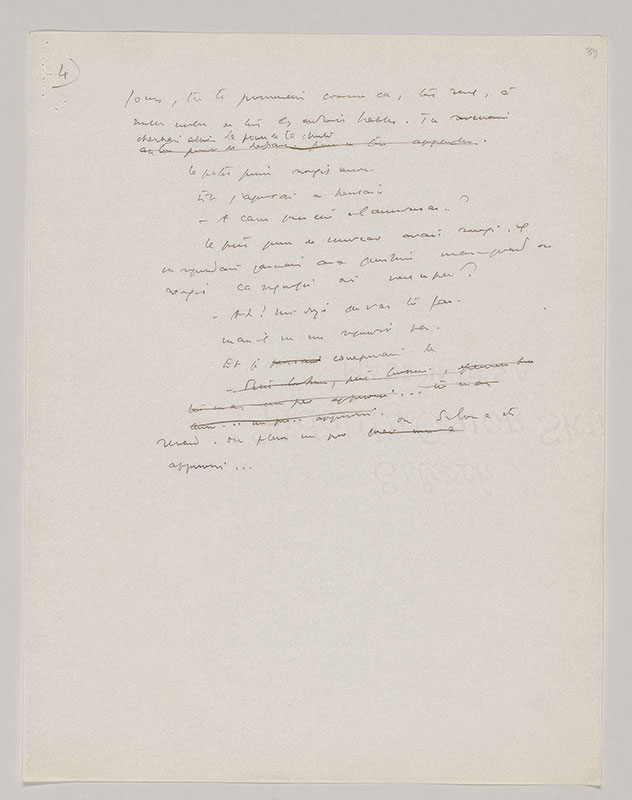
Le petit prince
Purchased on the Elisabeth Ball Fund, 1968
MA 2592, fol. 90
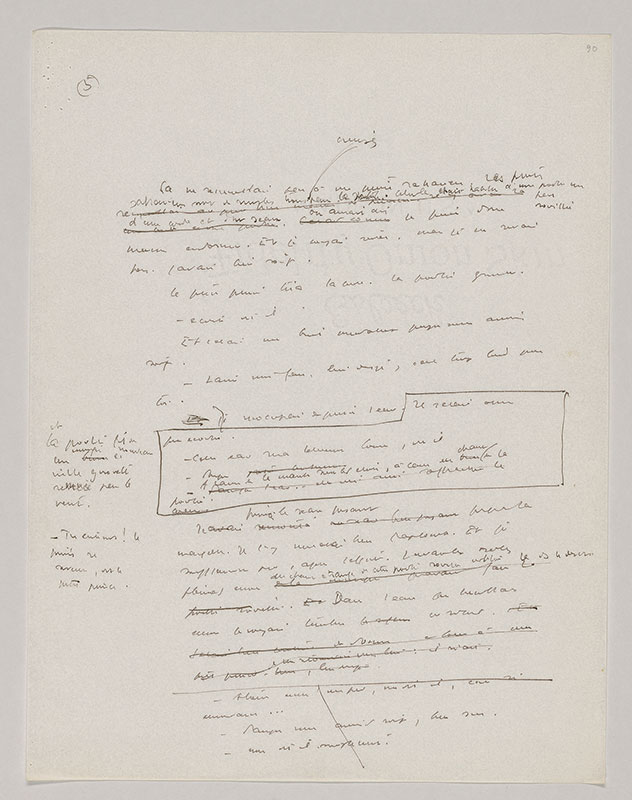
Le petit prince
Purchased on the Elisabeth Ball Fund, 1968
MA 2592, fol. 91
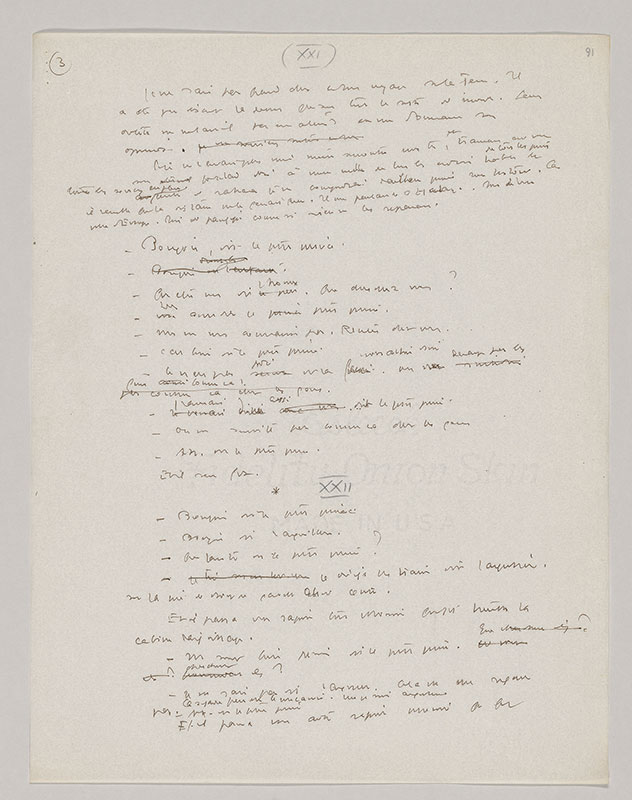
Le petit prince
Purchased on the Elisabeth Ball Fund, 1968
MA 2592, fol. 92
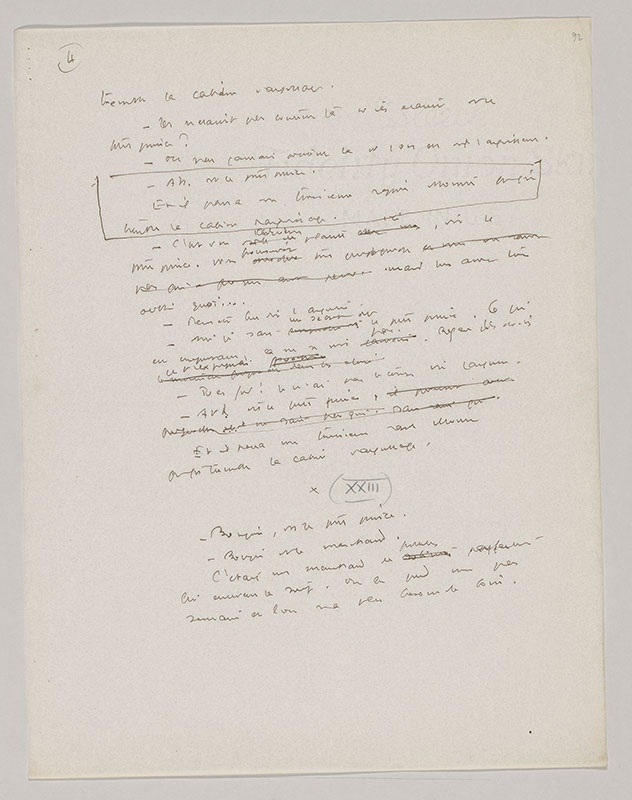
Le petit prince
Purchased on the Elisabeth Ball Fund, 1968
MA 2592.8
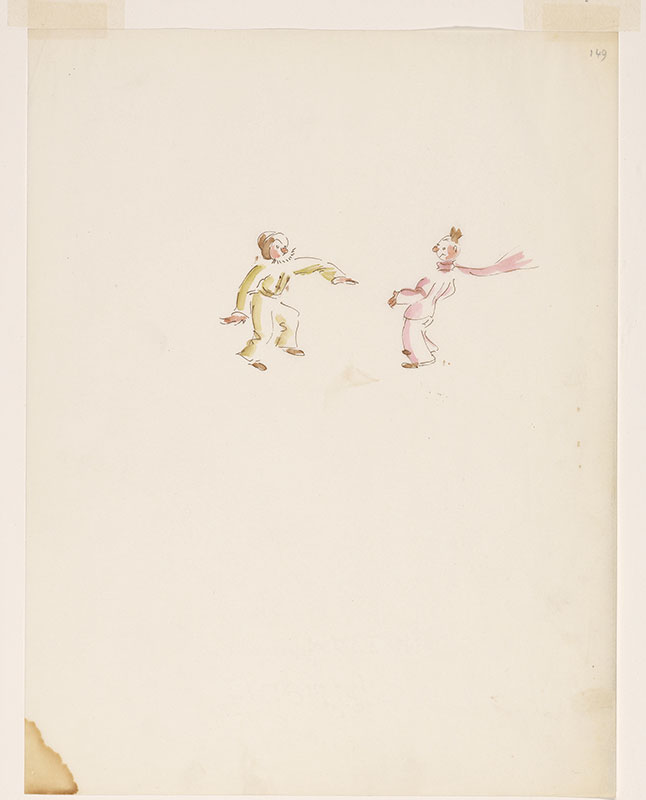
Le petit prince et un autre personnage
Purchased on the Elisabeth Ball Fund, 1968
MA 2592, fol. 93
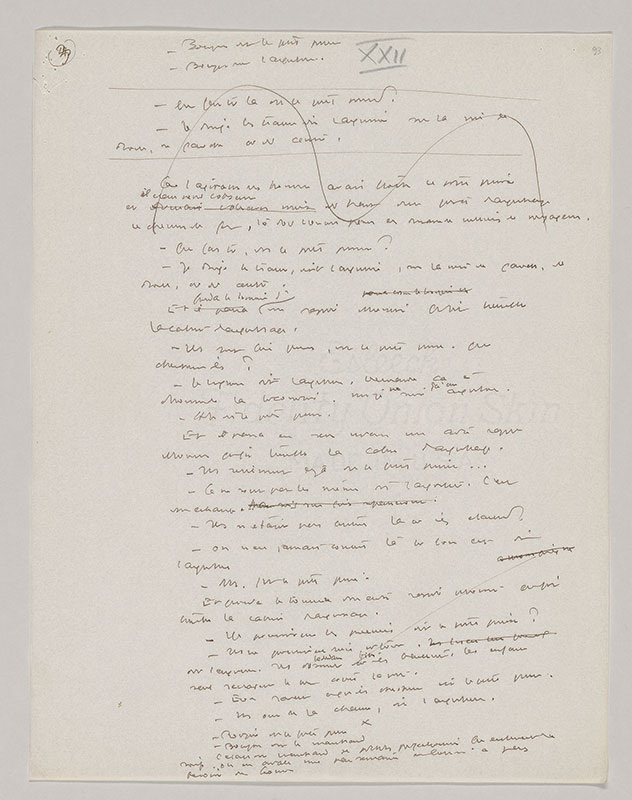
Le petit prince
Purchased on the Elisabeth Ball Fund, 1968
MA 2592, fol. 94
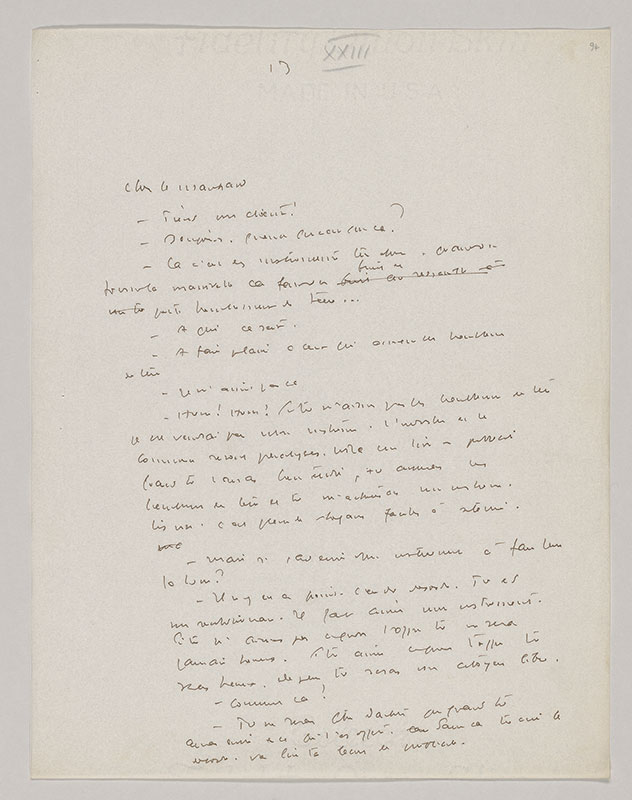
Le petit prince
Purchased on the Elisabeth Ball Fund, 1968
At the store
“Here’s a customer!”
“Hello. What do you have there?”
“It’s a very expensive instrument. When you turn the handle it makes a sound that resembles the sound of a ver small earthquake. …”
“What is that for?”
“To give pleasure to whoever enjoys earthquakes.”
“I don’t.”
“Well, well! If you don’t enjoy earthquakes I won’t be able to sell my instrument. Industry and commerce will be paralyzed. Here’s a book on marketing. After you’ve studied it carefully, you’ll like earthquakes and you’ll buy my instrument. Read it quickly. It’s full of slogans that are easy to remember.”
My
“But what if I want an instrument that will make the moon rise?”
“There’s no such thing. That’s disruptive. You’re a revolutionary. You must like my instrument. If you don’t like what’s available to you, you’ll never be happy. If you like what is available to you, you’ll be happy. And what’s more, you’ll be a free citizen.”
“How so?”
“You won’t be free to buy until you want what’s available. Because Otherwise you create chaos. Now go read your marketing lesson.”
Chez la marchand
–Tiens un client!
–Bonjour. Qu’est-ce que c’est que ça?
–Ça c’est des instruments très chers. Quand on tourne la manivelle ça fait [forme?] un bruit que ressemble à bruit de un tr petit tremblement de terre …
–À quoi ça sert?
–À faire plaisir à ceux qui aiment les tremblements de terre.
–Je n’aime pas ça.
–Hum! Hum! Si tu n’aimes pas les tremblements de terre je ne vendrai pas mon instrument. L’industrie et le commerce seront paralysés. Voilà un livre de publicité. Quand tu l’auras bien étudié, tu aimeras les tremblements de terre et tu m’achèteras un instrument. Lis vite. C’est plein de slogans faciles à retenir.
ma
–Mais si j’ai envie d’un instrument à faire lever la lune?
–Il n’y en a point. C’est du désordre. Tu es un révolutionnaire. Il faut aimer mon instrument. Si tu n’aimes pas ce qu’on t’offre tu ne seras jamais heureux. Si tu aimes ce qu’on t’offre tu seras heureux. De plus tu seras un citoyen libre.
–Comment ça?
–Tu ne seras libre d’acheter que quand tu auras envie de ce qui t’est offert. Car Sans ça tu crées le désordre. Va lire ta leçon de publicité.
MA 2592.23
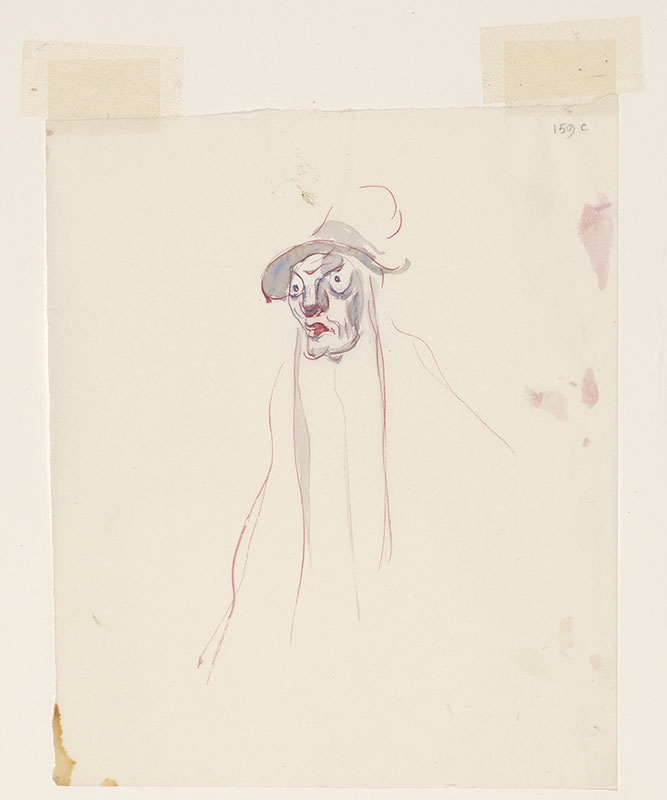
Tête de personnage aux grands yeux, portrait un chapeau haut-de-forme
Purchased on the Elisabeth Ball Fund, 1968
MA 2592, fol. 95
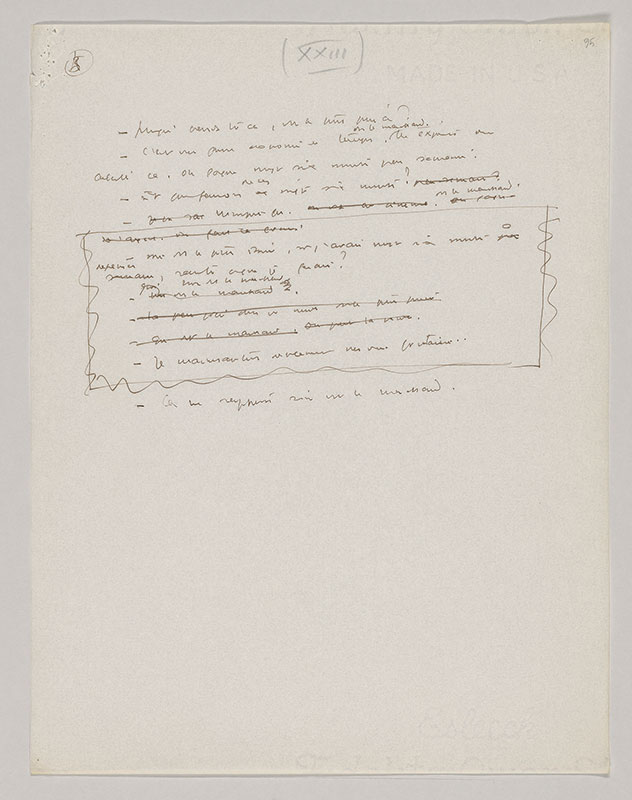
Le petit prince
Purchased on the Elisabeth Ball Fund, 1968
MA 2592, fol. 96
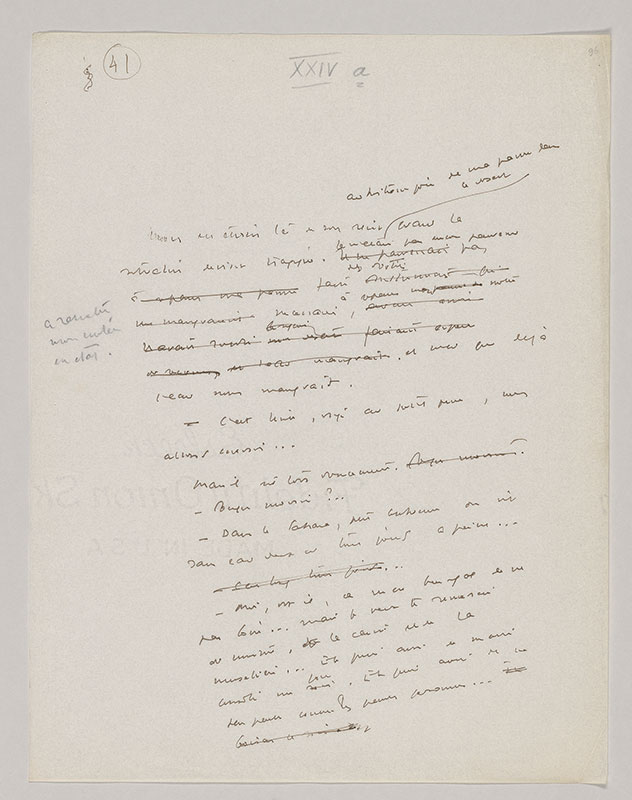
Le petit prince
Purchased on the Elisabeth Ball Fund, 1968
MA 2592.32
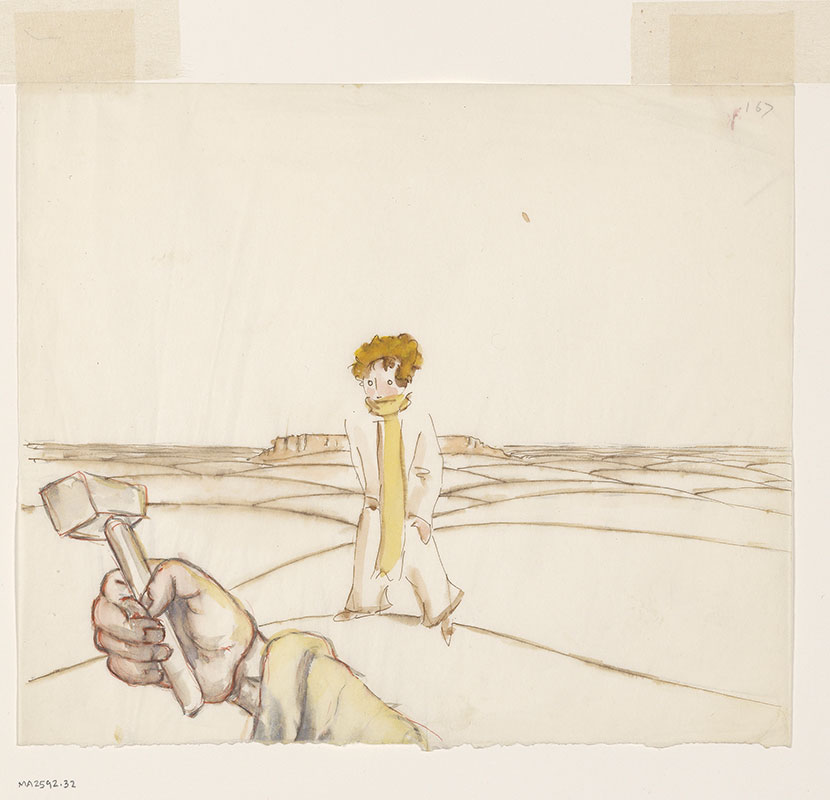
Le petit prince et la main du pilote tenant un marteau
Purchased on the Elisabeth Ball Fund, 1968
MA 2592, fol. 97
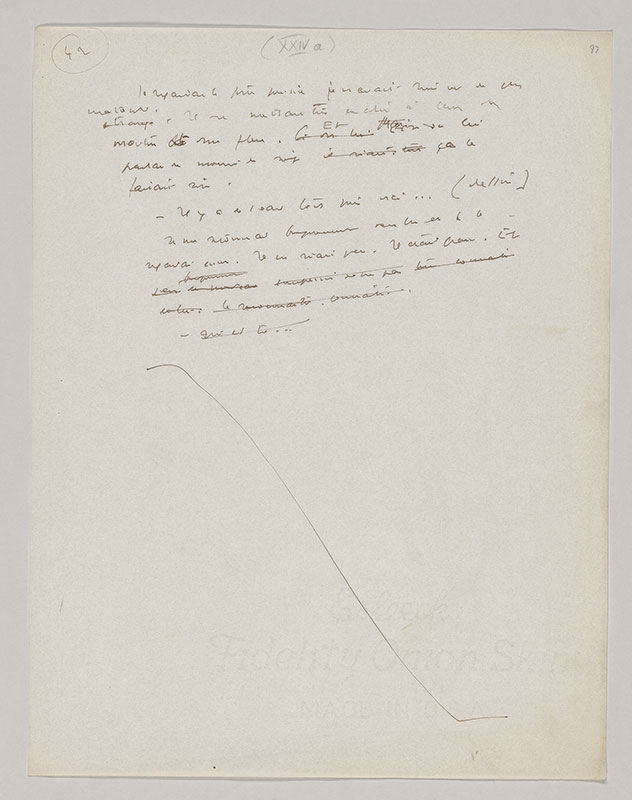
Le petit prince
Purchased on the Elisabeth Ball Fund, 1968
MA 2592, fol. 98
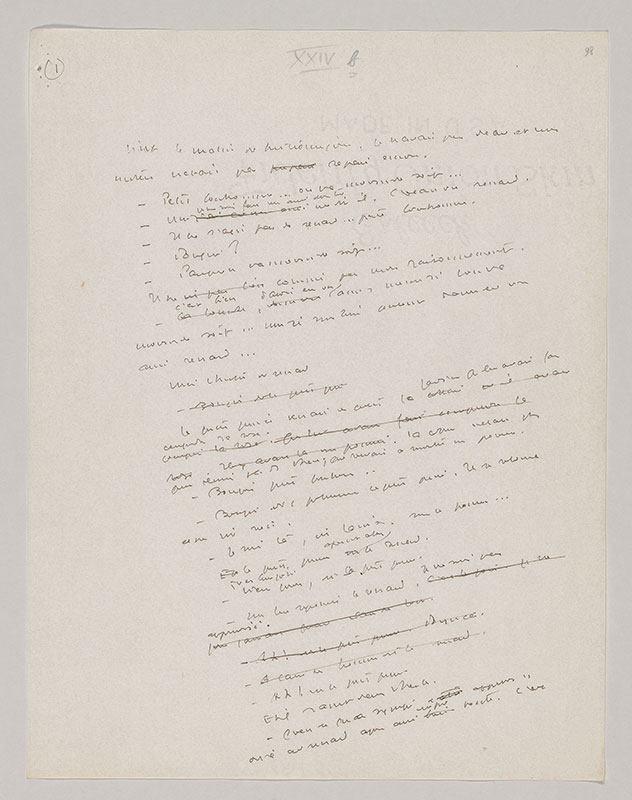
Le petit prince
Purchased on the Elisabeth Ball Fund, 1968
MA 2592, fol. 99
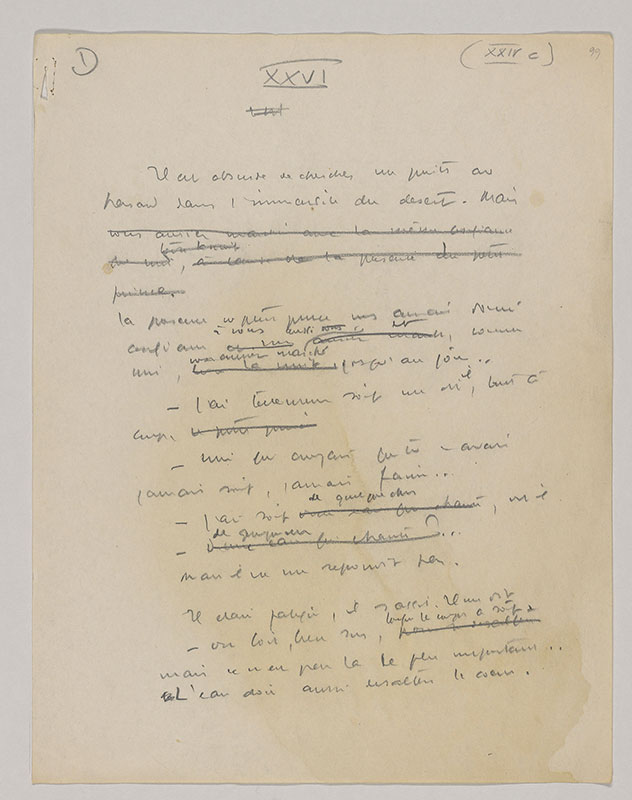
Le petit prince
Purchased on the Elisabeth Ball Fund, 1968
MA 2592, fol. 100
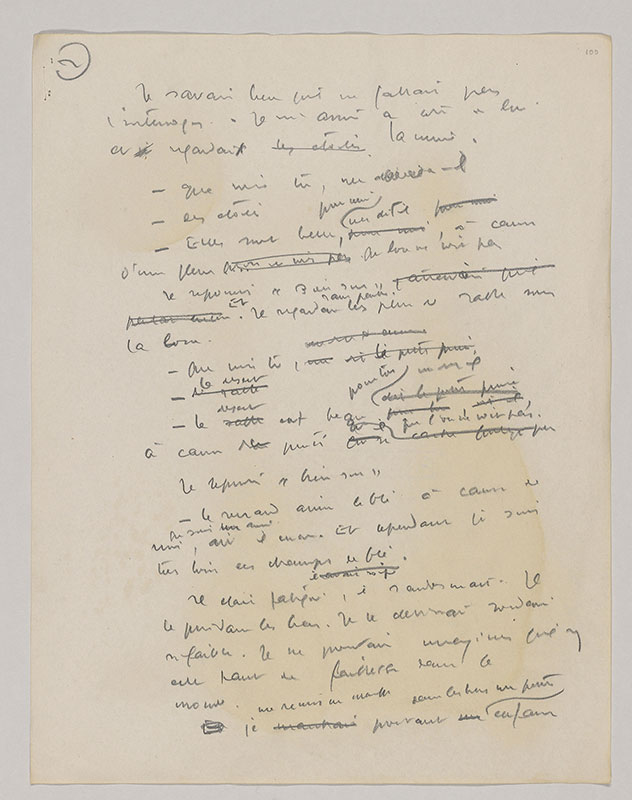
Le petit prince
Purchased on the Elisabeth Ball Fund, 1968
MA 2592, fol. 101
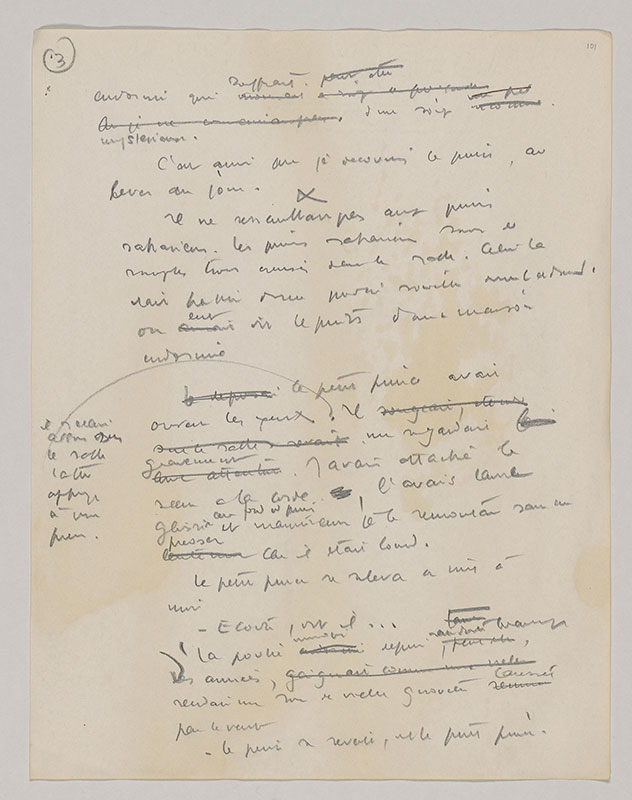
Le petit prince
Purchased on the Elisabeth Ball Fund, 1968
MA 2592, fol. 102
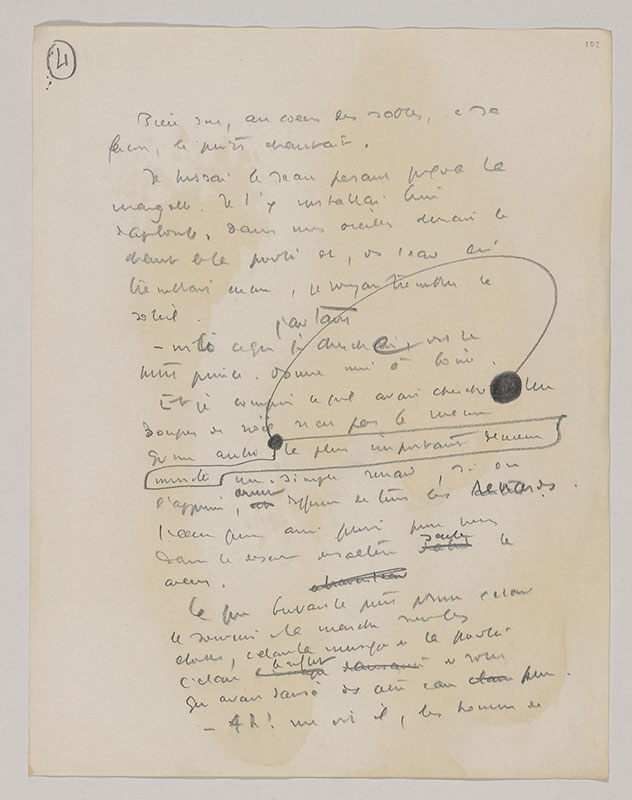
Le petit prince
Purchased on the Elisabeth Ball Fund, 1968
MA 2592, fol. 103
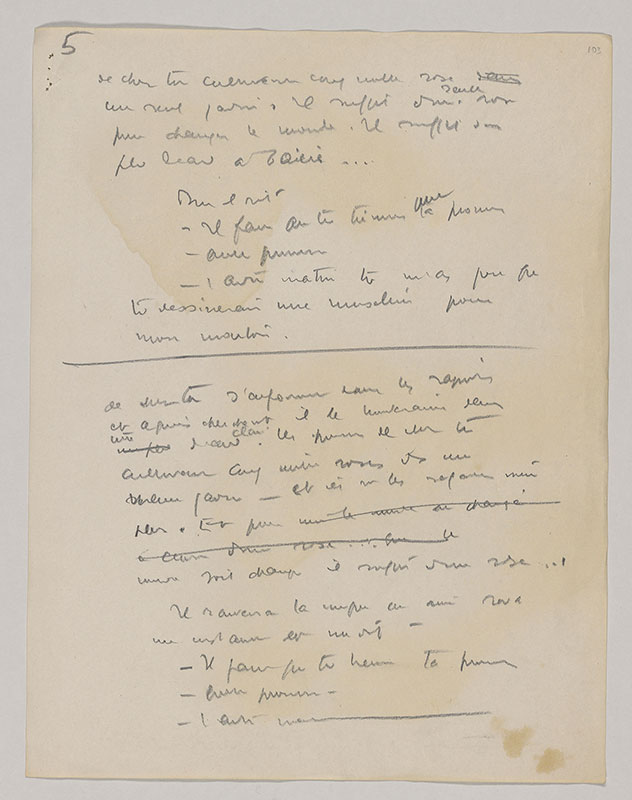
Le petit prince
Purchased on the Elisabeth Ball Fund, 1968
MA 2592, fol. 104
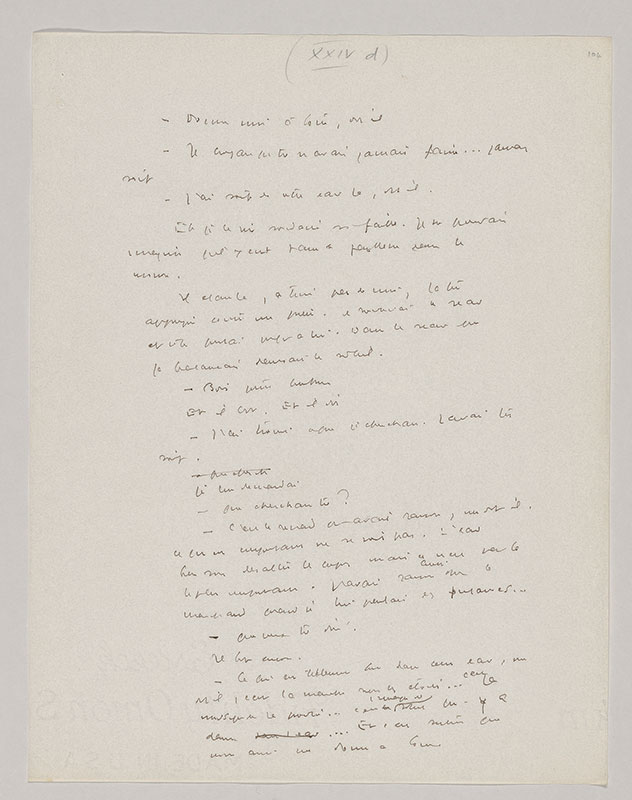
Le petit prince
Purchased on the Elisabeth Ball Fund, 1968
MA 2592, fol. 105
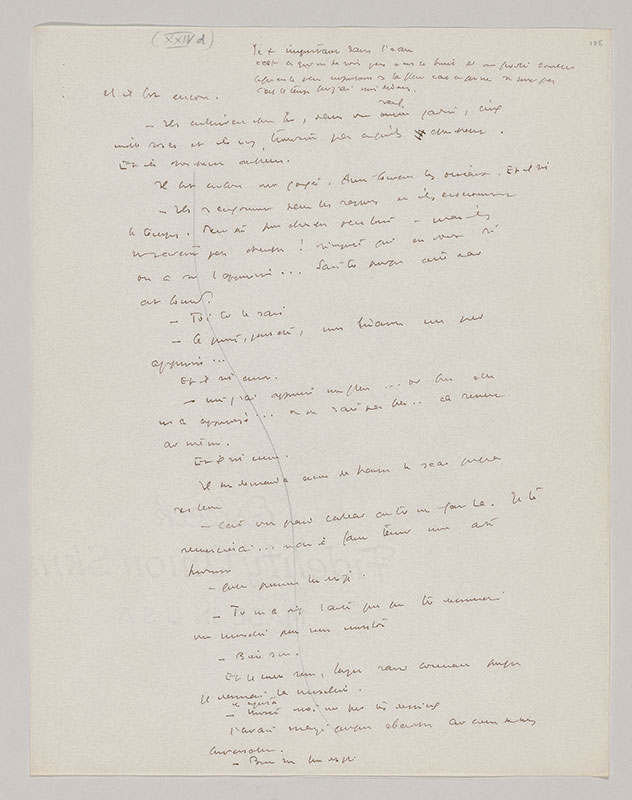
Le petit prince
Purchased on the Elisabeth Ball Fund, 1968
MA 2592, fol. 106
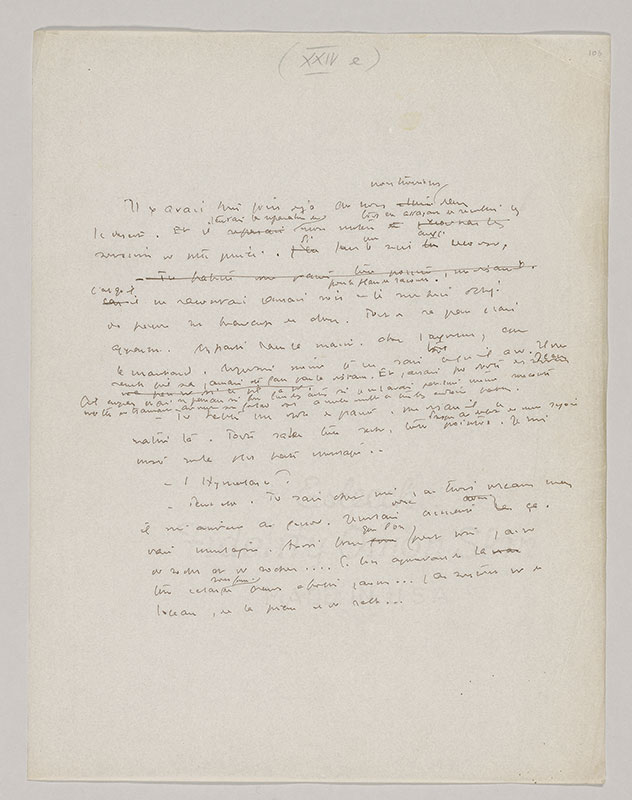
Le petit prince
Purchased on the Elisabeth Ball Fund, 1968
MA 2592.33
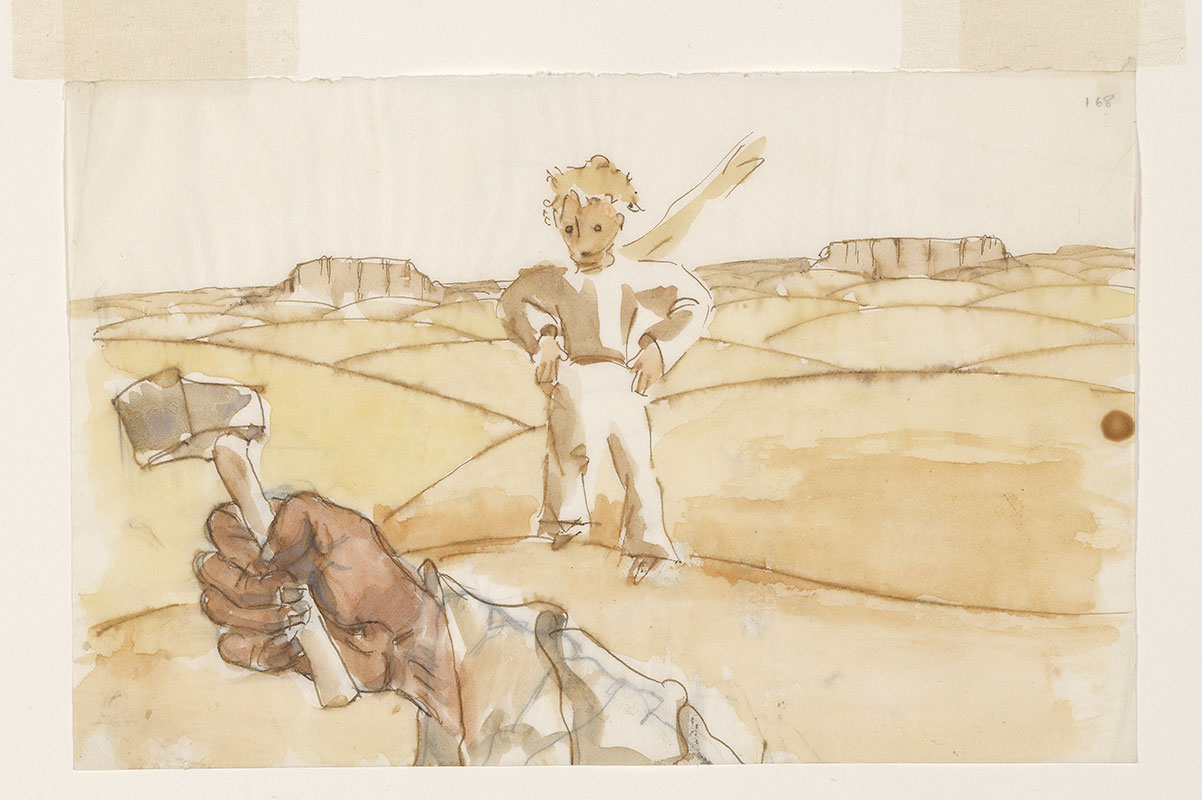
Le petit prince et la main du pilote tenant un marteau
Purchased on the Elisabeth Ball Fund, 1968
MA 2592, fol. 107
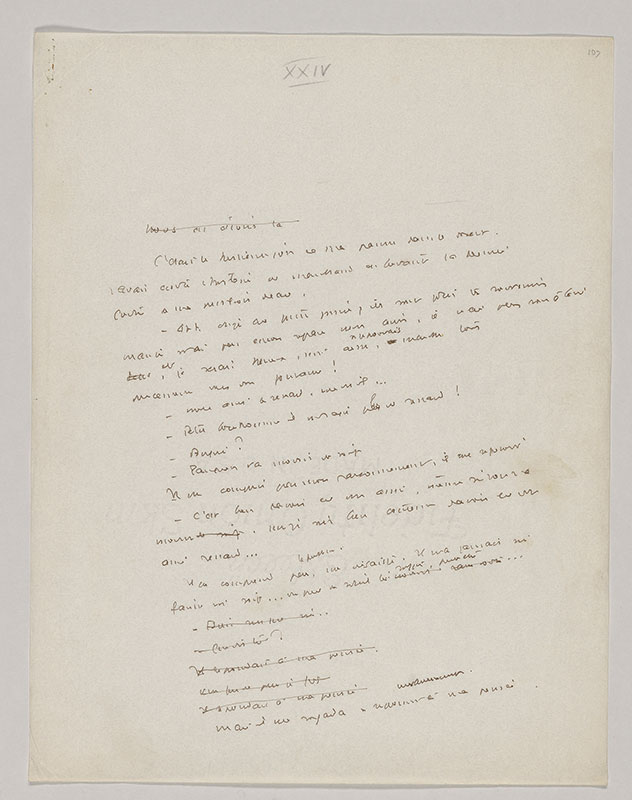
Le petit prince
Purchased on the Elisabeth Ball Fund, 1968
MA 2592, fol. 108
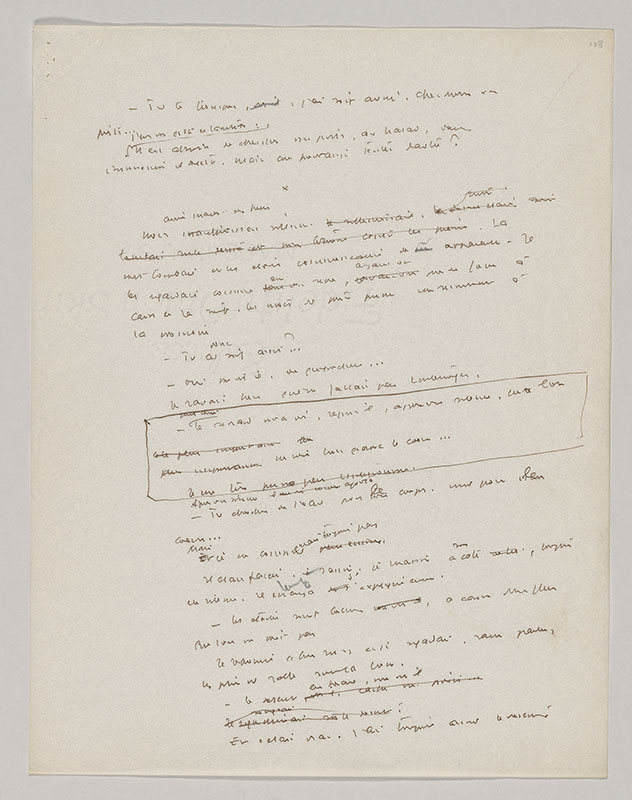
Le petit prince
Purchased on the Elisabeth Ball Fund, 1968
MA 2592.24
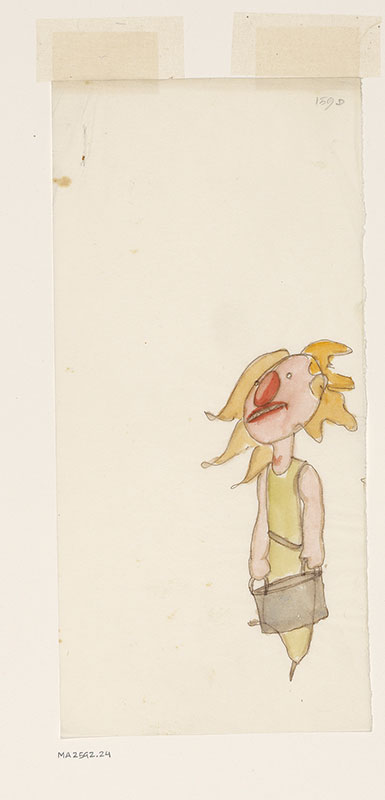
Personnage portant un seau
Purchased on the Elisabeth Ball Fund, 1968
MA 2592, fol. 109
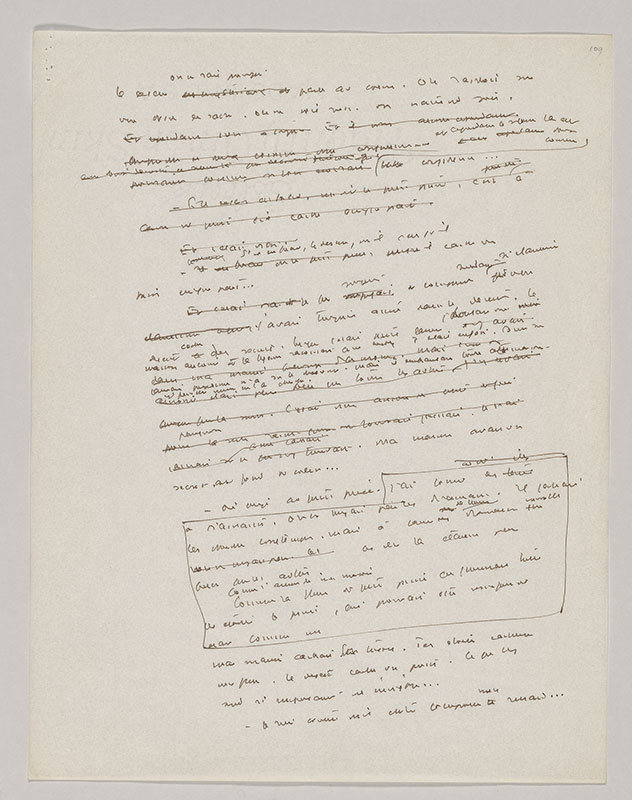
Le petit prince
Purchased on the Elisabeth Ball Fund, 1968
MA 2592, fol. 110
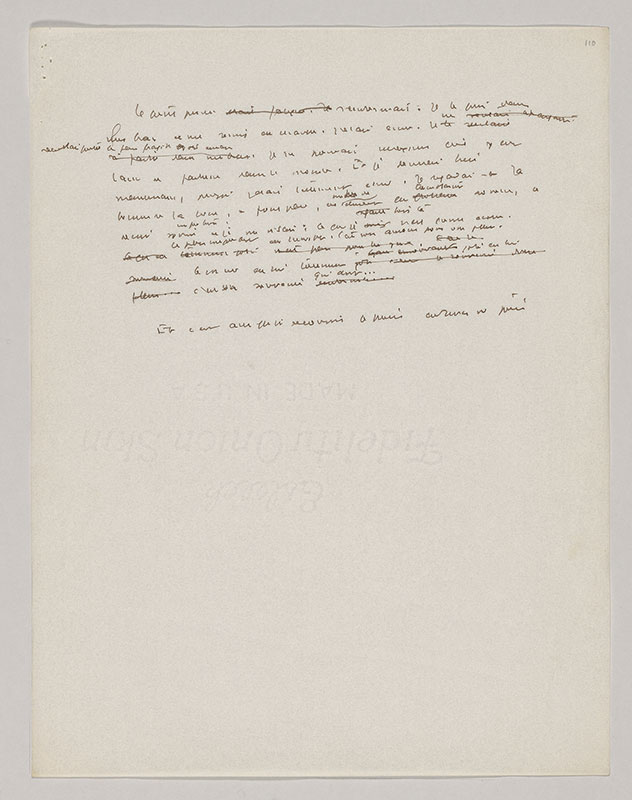
Le petit prince
Purchased on the Elisabeth Ball Fund, 1968
MA 2592, fol. 111
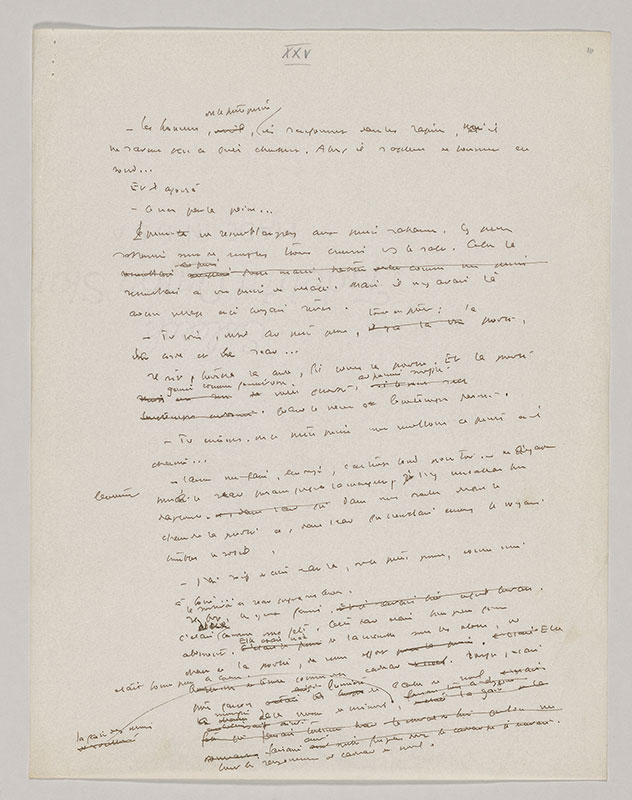
Le petit prince
Purchased on the Elisabeth Ball Fund, 1968
MA 2592, fol. 112
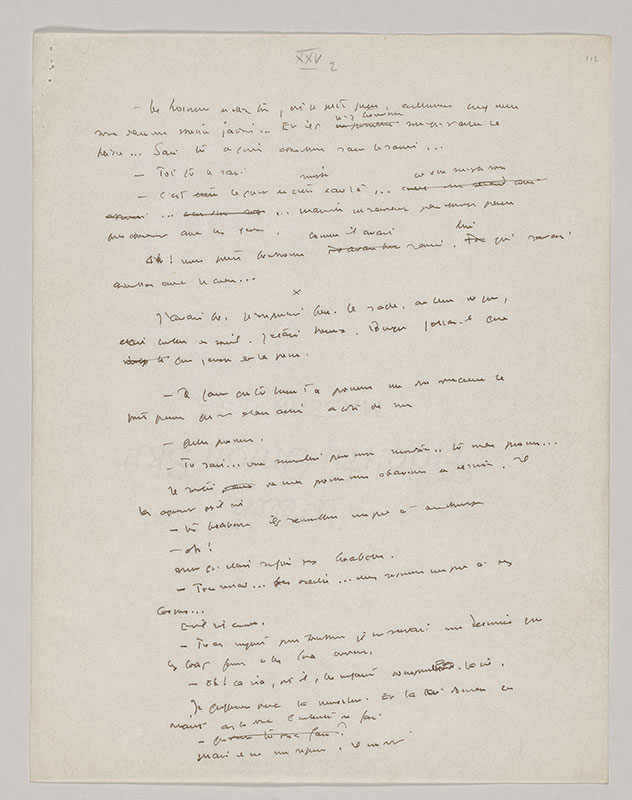
Le petit prince
Purchased on the Elisabeth Ball Fund, 1968
MA 2592.3
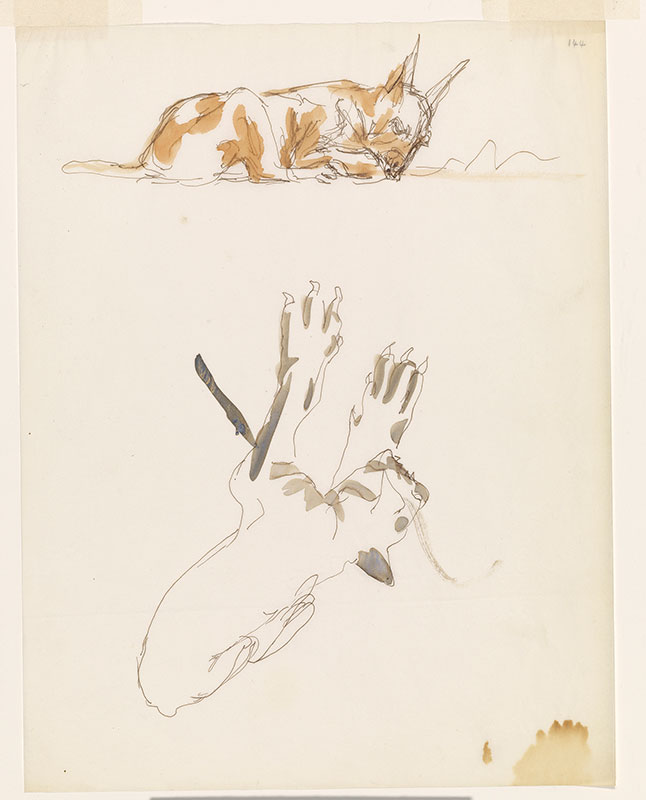
Un chien et une esquisse de tigre, couchés
Purchased on the Elisabeth Ball Fund, 1968
MA 2592, fol. 113
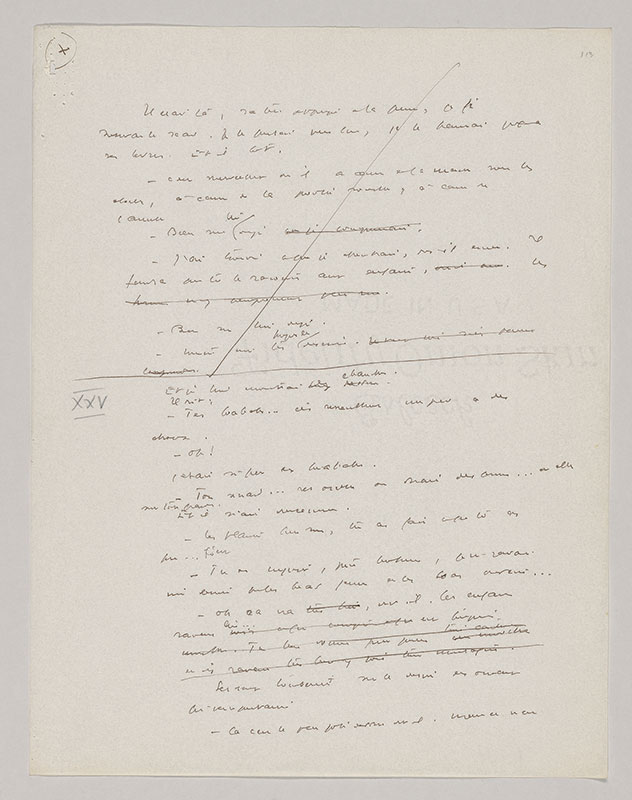
Le petit prince
Purchased on the Elisabeth Ball Fund, 1968
MA 2592.34
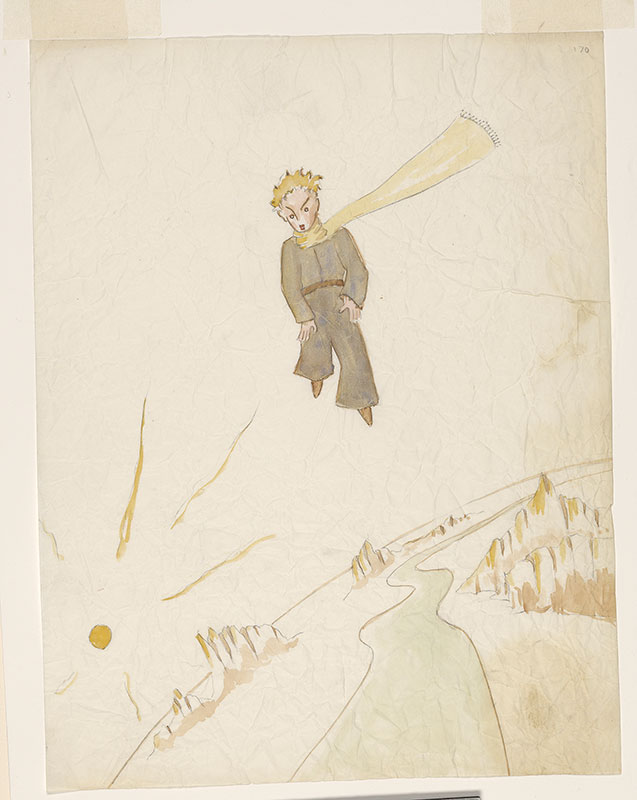
Le petit prince survolant une planète avec montagnes et fleuve
Purchased on the Elisabeth Ball Fund, 1968
MA 2592, fol. 114
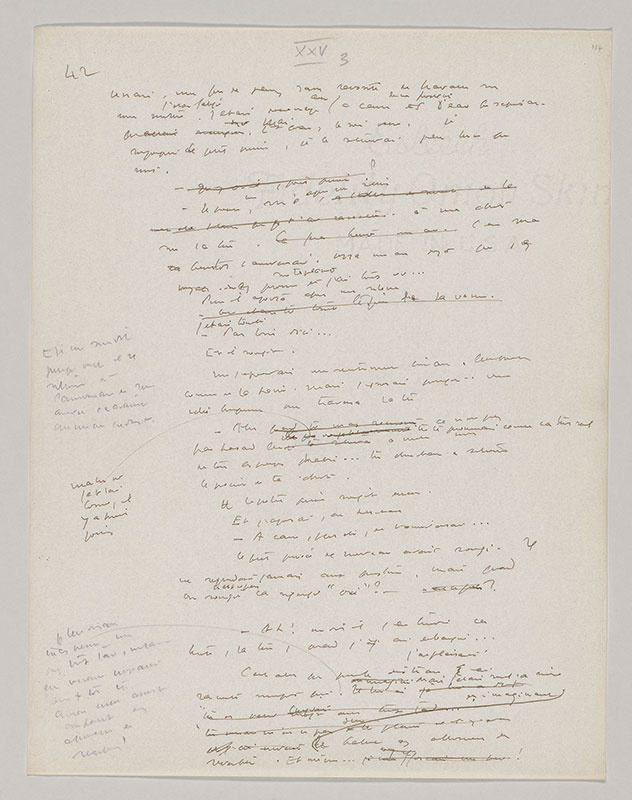
Le petit prince
Purchased on the Elisabeth Ball Fund, 1968
MA 2592, fol. 115

Le petit prince
Purchased on the Elisabeth Ball Fund, 1968
MA 2592, fol. 116
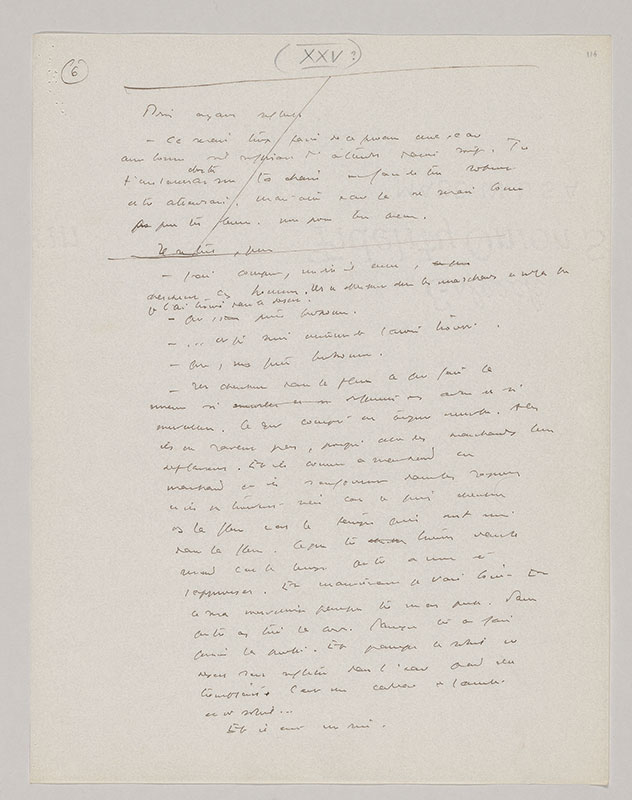
Le petit prince
Purchased on the Elisabeth Ball Fund, 1968
MA 2592, fol. 117
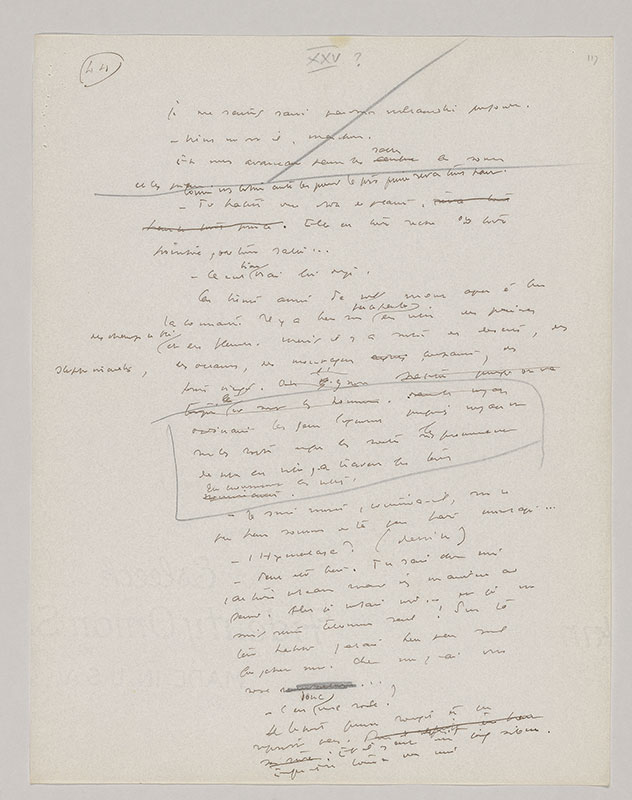
Le petit prince
Purchased on the Elisabeth Ball Fund, 1968
MA 2592, fol. 118
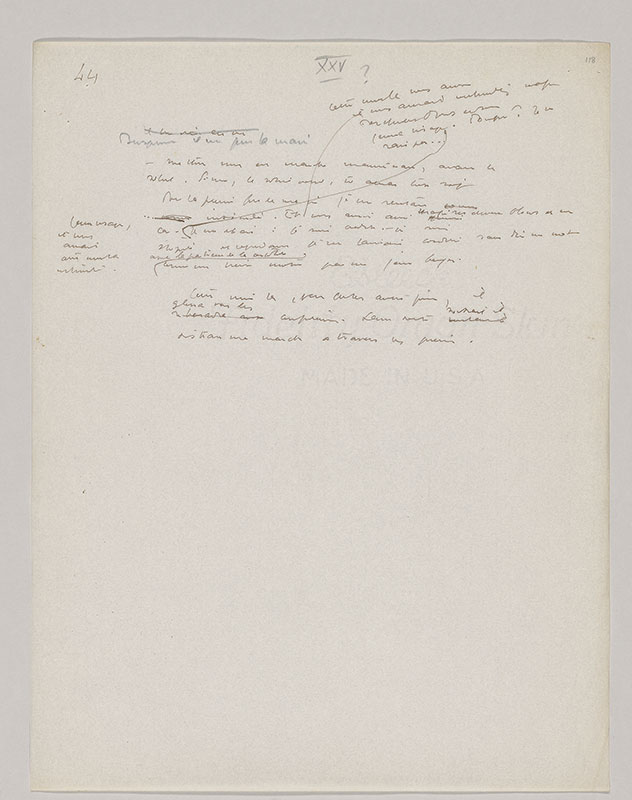
Le petit prince
Purchased on the Elisabeth Ball Fund, 1968
MA 2592, fol. 119
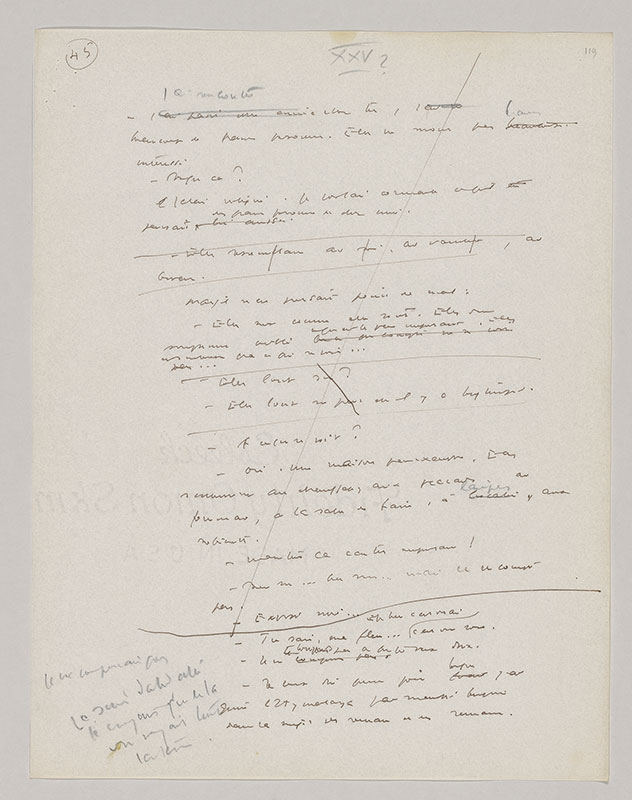
Le petit prince
Purchased on the Elisabeth Ball Fund, 1968
MA 2592, fol. 120
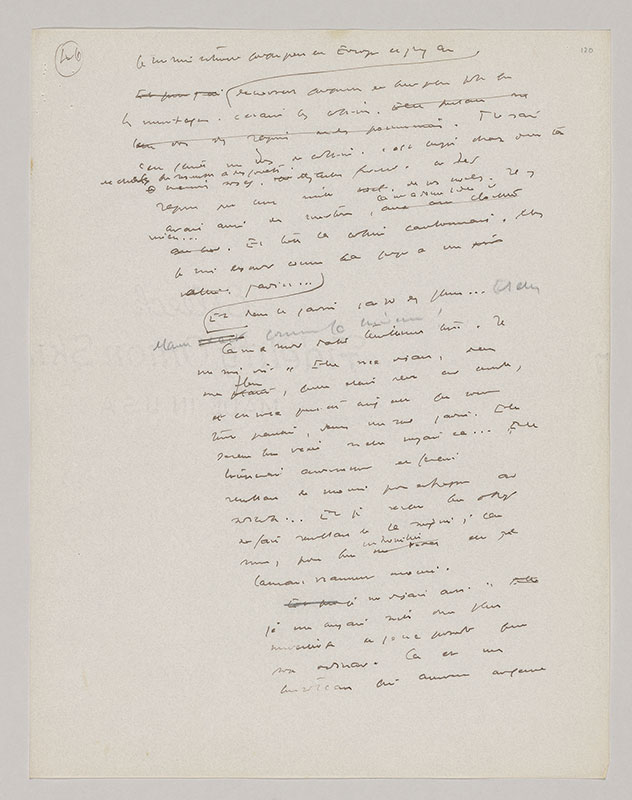
Le petit prince
Purchased on the Elisabeth Ball Fund, 1968
MA 2592, fol. 121
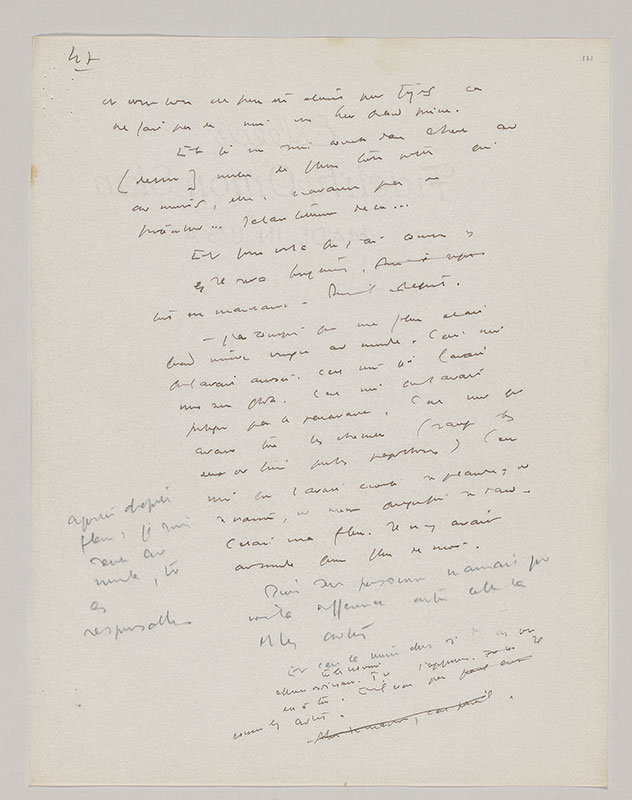
Le petit prince
Purchased on the Elisabeth Ball Fund, 1968
MA 2592, fol. 122
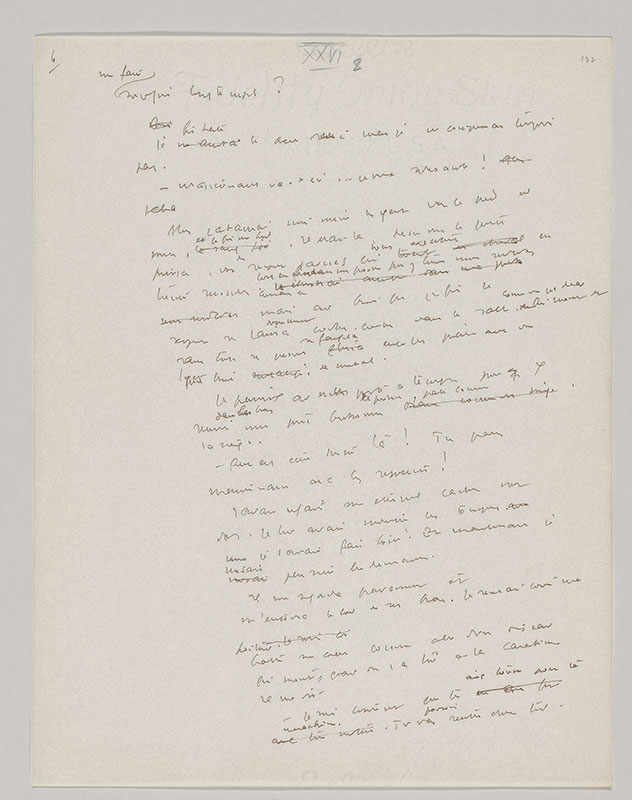
Le petit prince
Purchased on the Elisabeth Ball Fund, 1968
MA 2592.14
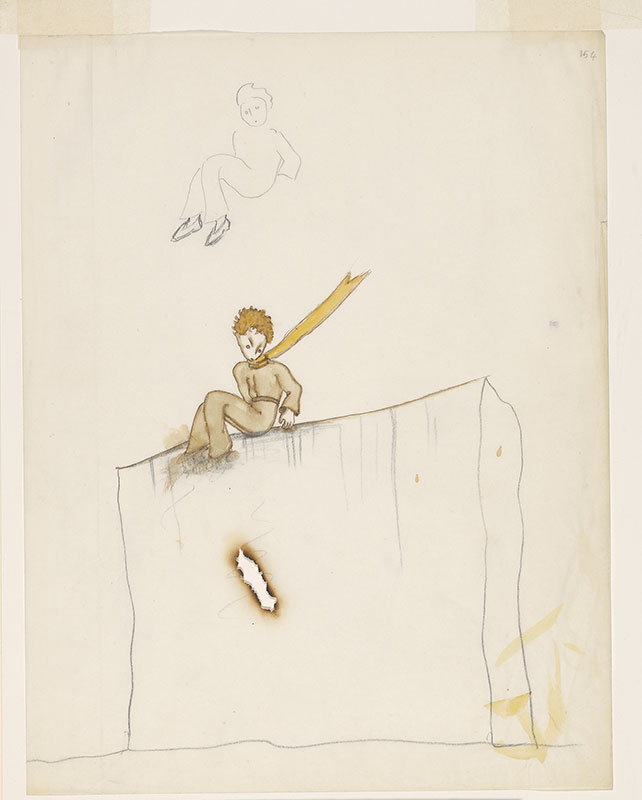
Le petit prince, écharpe au vent, assis sur un mur (dialogue avec le serpent)
Purchased on the Elisabeth Ball Fund, 1968
MA 2592, fol. 123
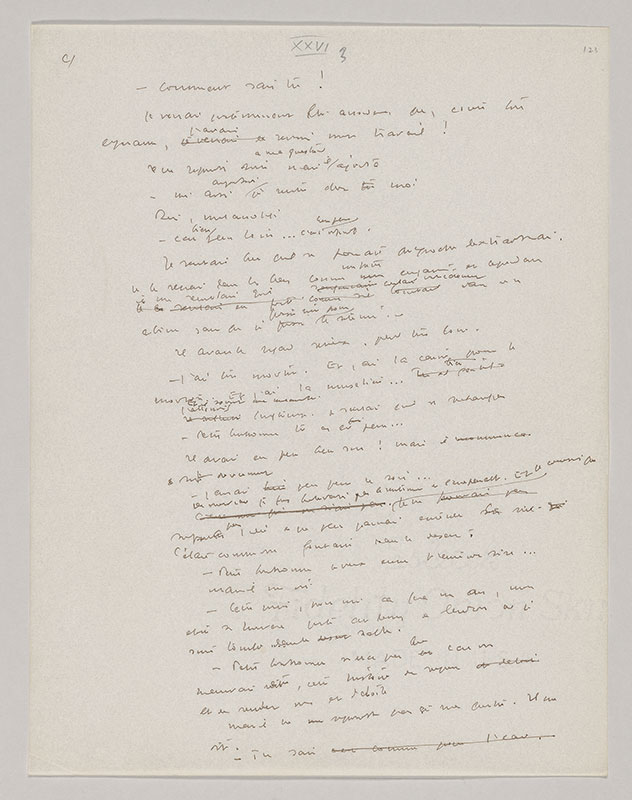
Le petit prince
Purchased on the Elisabeth Ball Fund, 1968
MA 2592, fol. 124
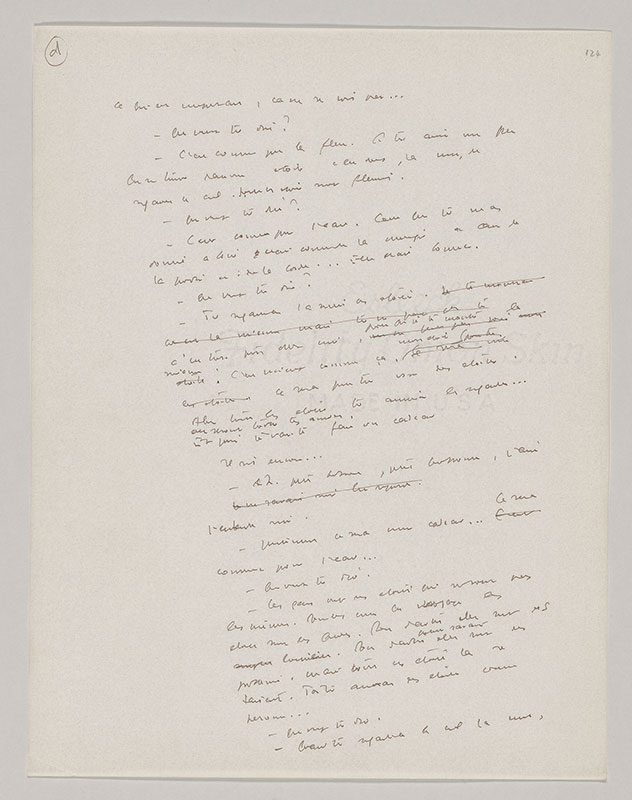
Le petit prince
Purchased on the Elisabeth Ball Fund, 1968
MA 2592, fol. 125
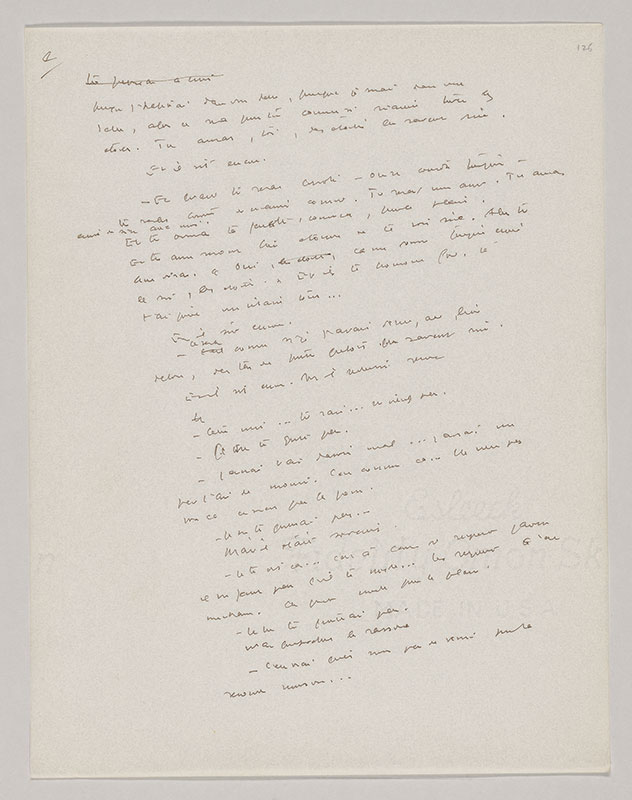
Le petit prince
Purchased on the Elisabeth Ball Fund, 1968
MA 2592, fol. 126
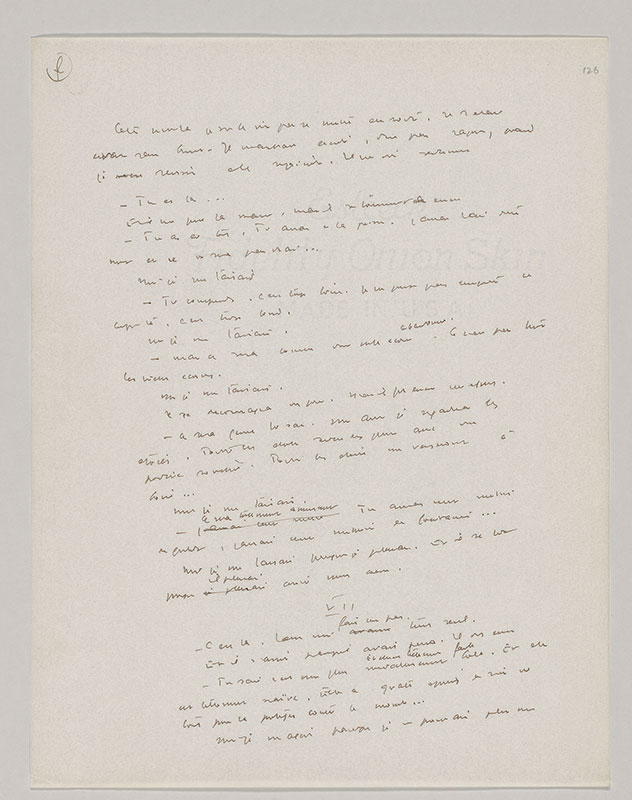
Le petit prince
Purchased on the Elisabeth Ball Fund, 1968
MA 2592.35
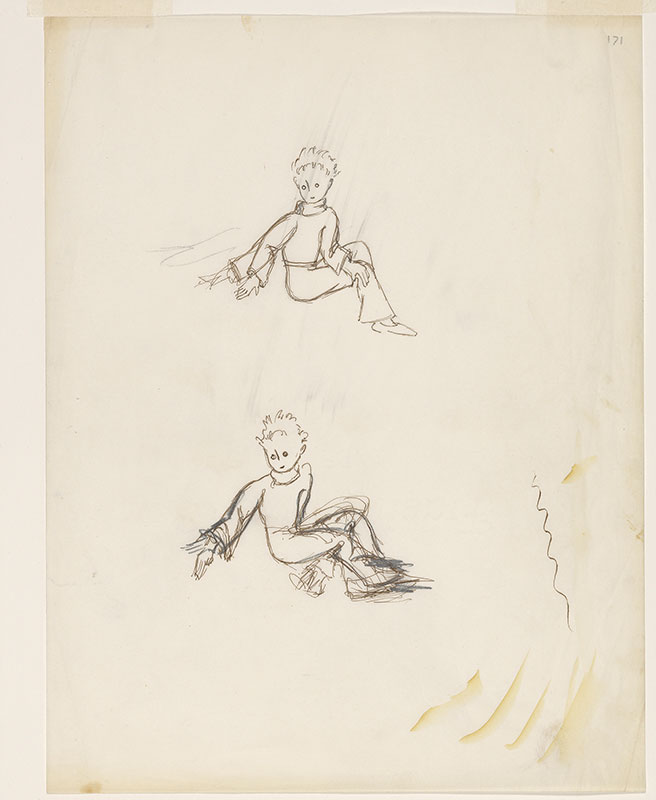
Esquisse de deux petits princes assis
Purchased on the Elisabeth Ball Fund, 1968
MA 2592, fol. 127
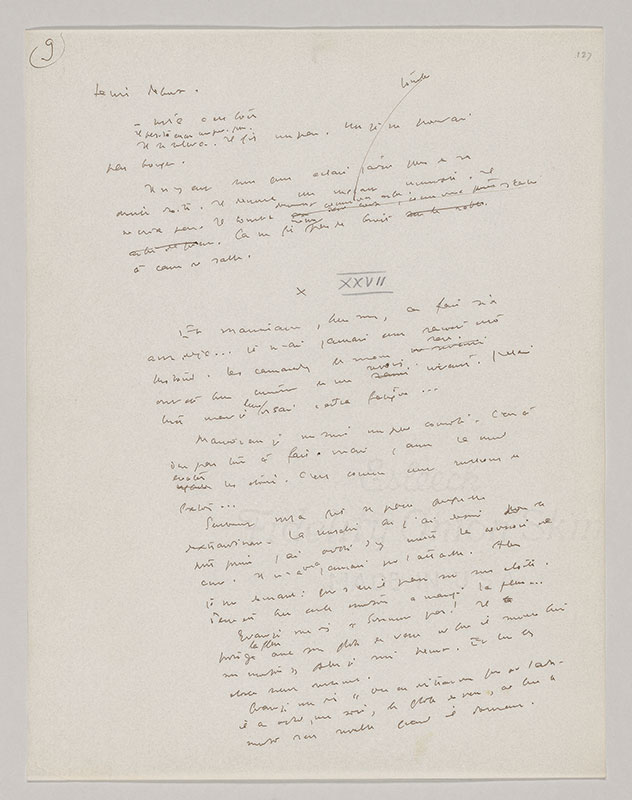
Le petit prince
Purchased on the Elisabeth Ball Fund, 1968
MA 2592, fol. 128
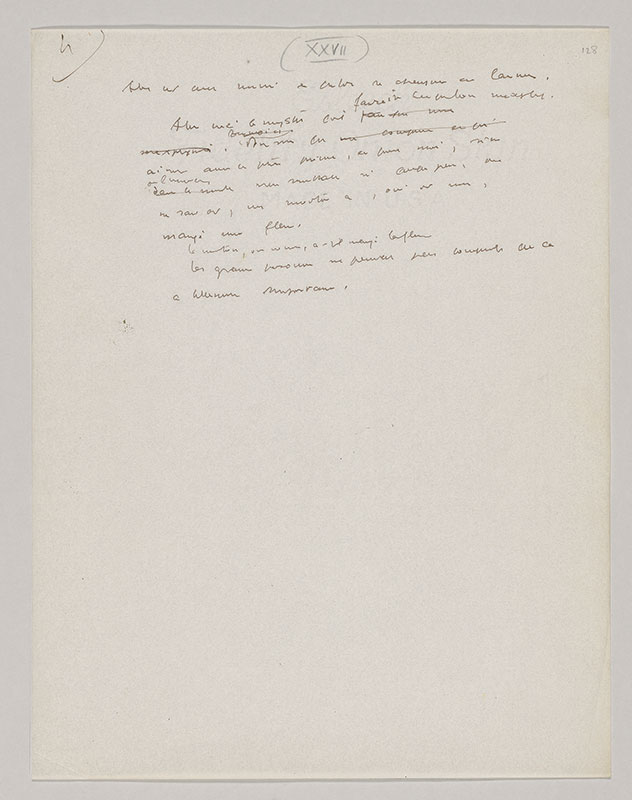
Le petit prince
Purchased on the Elisabeth Ball Fund, 1968
MA 2592, fol. 129
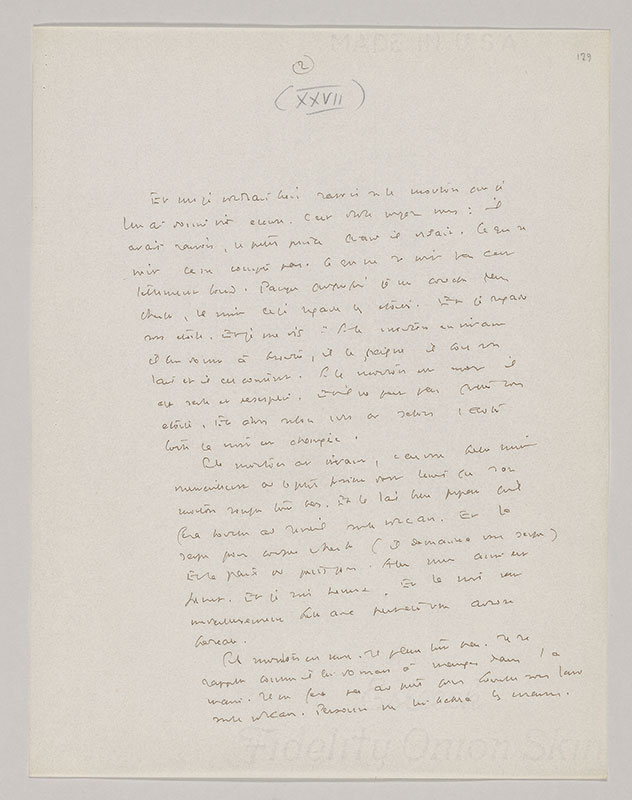
Le petit prince
Purchased on the Elisabeth Ball Fund, 1968
MA 2592, fol. 130
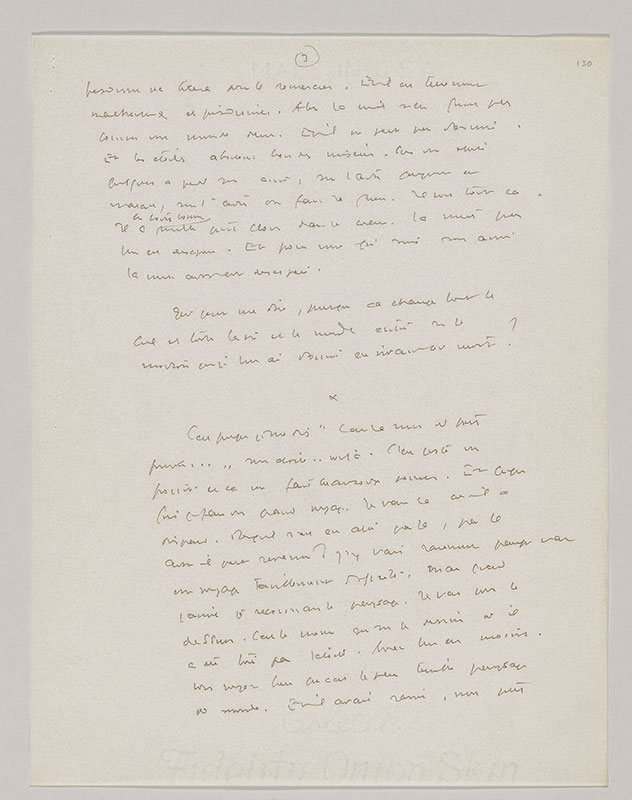
Le petit prince
Purchased on the Elisabeth Ball Fund, 1968
MA 2592, fol. 131
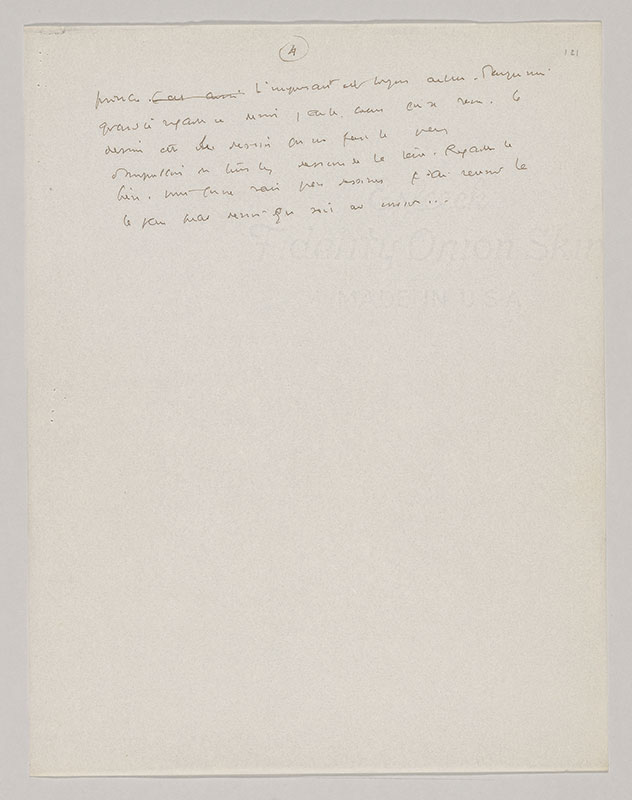
Le petit prince
Purchased on the Elisabeth Ball Fund, 1968
MA 2592, fol. 132
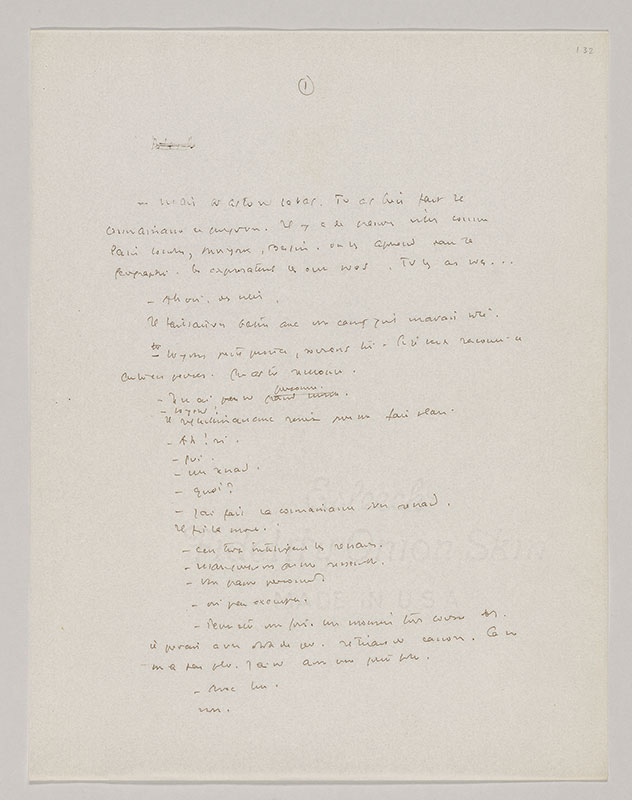
Le petit prince
Purchased on the Elisabeth Ball Fund, 1968
MA 2592, fol. 133
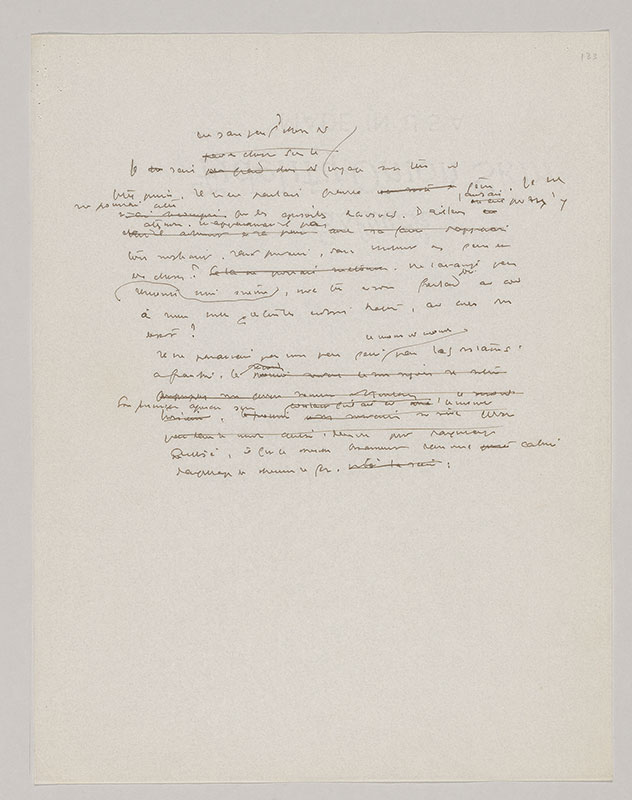
Le petit prince
Purchased on the Elisabeth Ball Fund, 1968
MA 2592, fol. 134
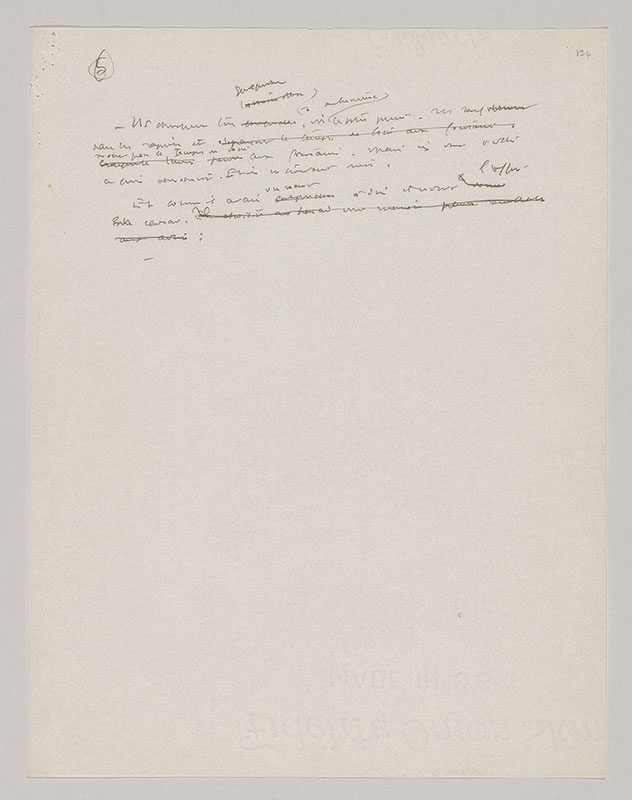
Le petit prince
Purchased on the Elisabeth Ball Fund, 1968
MA 2592, fol. 135
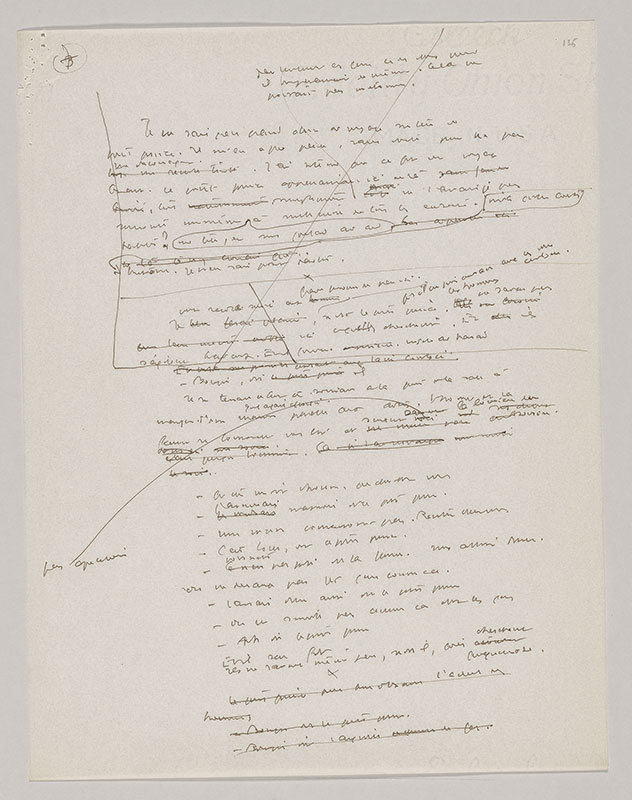
Le petit prince
Purchased on the Elisabeth Ball Fund, 1968
MA 2592, fol. 136
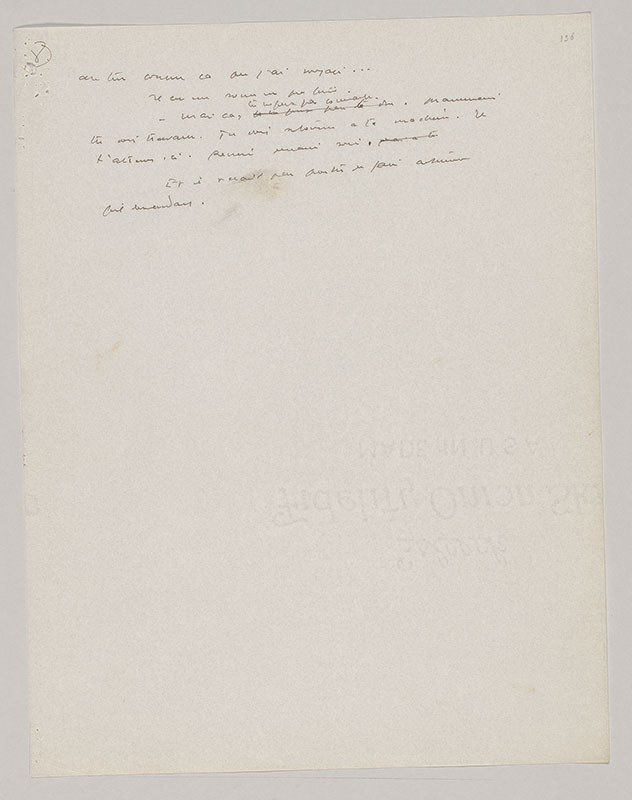
Le petit prince
Purchased on the Elisabeth Ball Fund, 1968
MA 2592, fol. 137
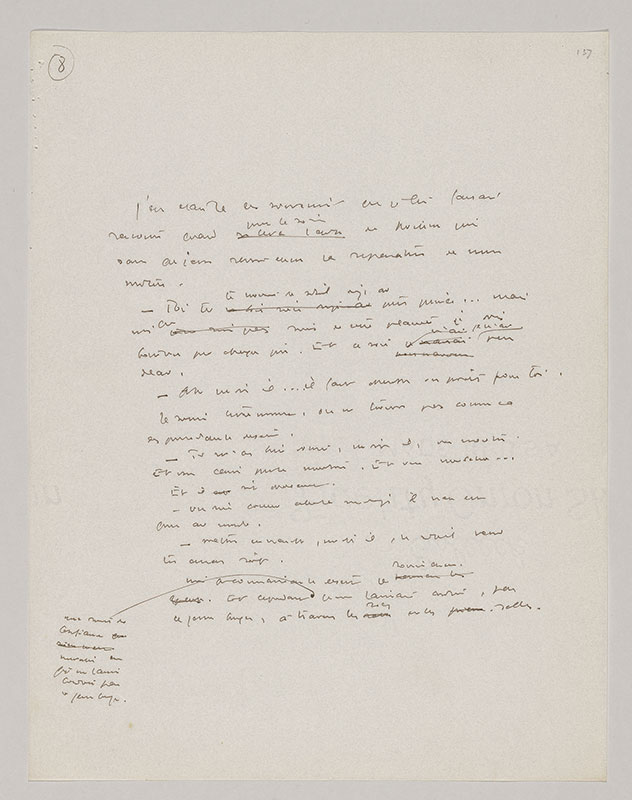
Le petit prince
Purchased on the Elisabeth Ball Fund, 1968
MA 2592, fol. 138
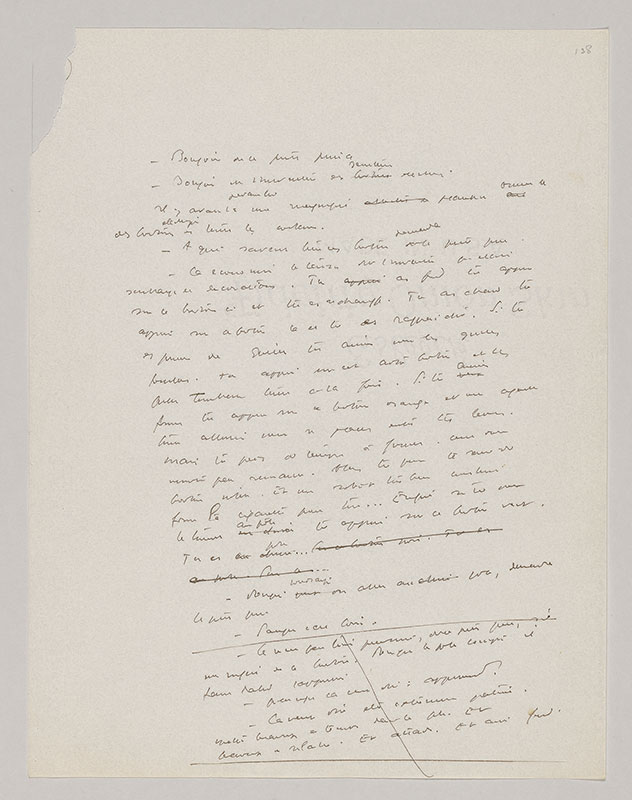
Le petit prince
Purchased on the Elisabeth Ball Fund, 1968
MA 2592, fol. 139
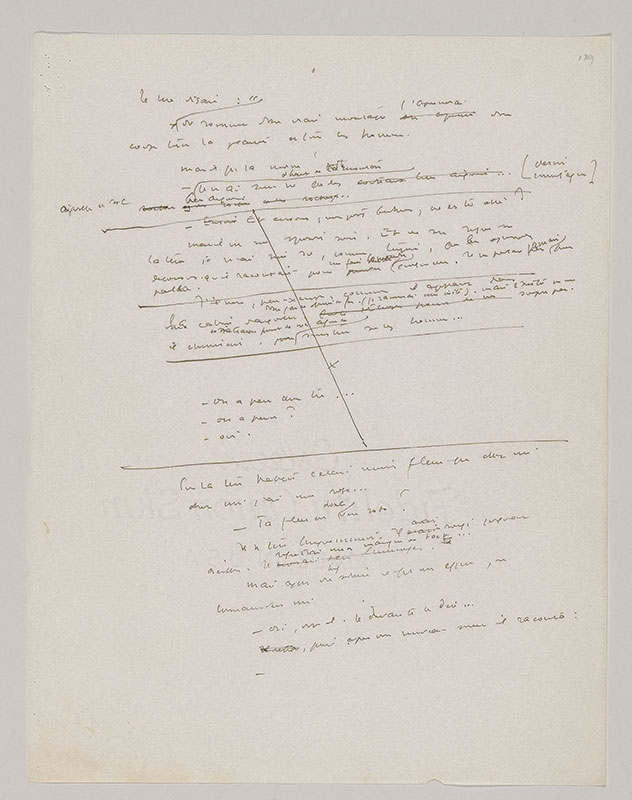
Le petit prince
Purchased on the Elisabeth Ball Fund, 1968
MA 2592, fol. 140
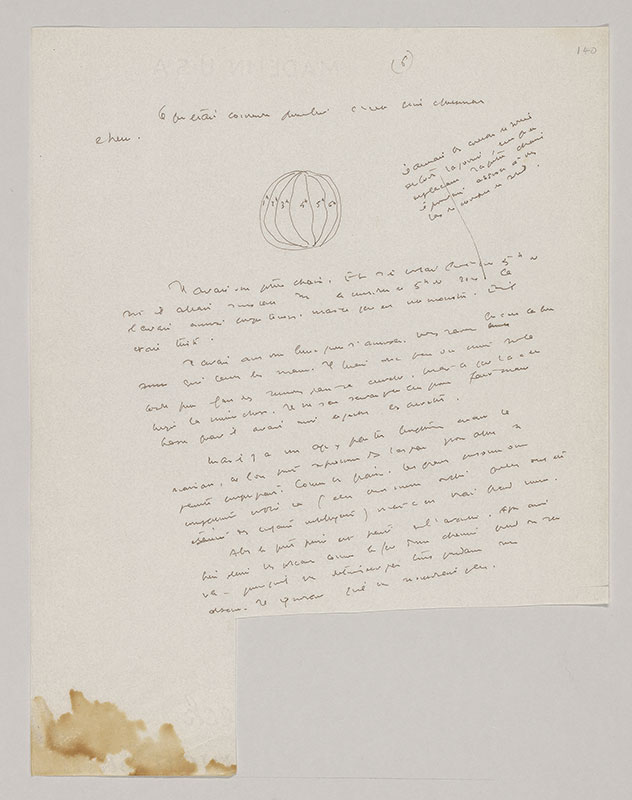
Le petit prince
Purchased on the Elisabeth Ball Fund, 1968
MA 2592, fol. 141
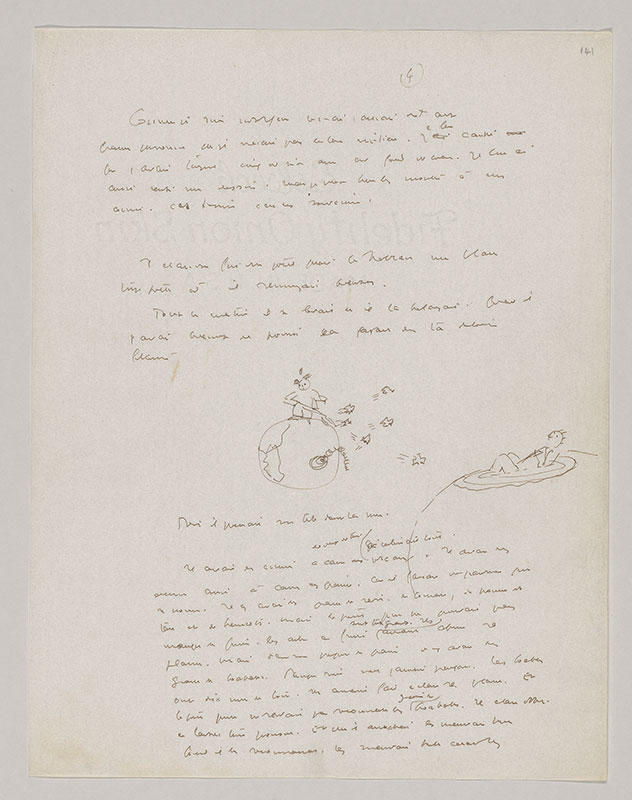
Le petit prince
Purchased on the Elisabeth Ball Fund, 1968
Because I’m kind-hearted I’ve never told the grown-ups that I’m not from their world. I’ve hidden from them my the fact that I’ve always been five or six years old at heart. And therefore I have hidden my drawings from them. But I love to show them to my friends. These drawings are my memories.
Once upon a time there was little prince who lived on too small a planet and became extremely bored.
Every morning he got up and swept it out …. When there was a great deal of dust, it would turn into a spray of shooting stars.
[drawing]
Then he would take a bath in the sea.
He had problems because of the two or three volcanoes that made a mess. He also had problems because of the seeds. Because he kept a garden in order to feed himself. He had radish, tomato, potato, and bean seeds. But the little prince could not eat fruit. Fruit trees are too big. They would have destroyed his planet. But within his seed packet there were some baobab seeds. Because nothing’s perfect. Baobabs are ten meters in circumference. They would have burst his planet. And the little prince didn’t know how to recognize baobab seeds. He had to just let them all grow. And then he would pull out the bad plants when he recognized them. The bad plants were the [baobabs].
Comme je suis indulgent je n’ai jamais dit aux grandes personnes que je n’étais pas de leur milieu. J’ai caché e leur [ai] ma que j’avais toujours cinq ou six ans au fond du cœur. Je leur ai ainsi caché mes dessins. Mais je veux bien les montrer à mes amis. Ces dessins c’est des souvenirs.
Il était une fois un petit prince qui habitait une planète trop petite et il s’ennuyait beaucoup.
Tous les matins il se levait et il la balayait … Quand il y avait beaucoup de poussière, ça faisait des tas d’étoiles filantes.
[dessin]
Puis il prenait son tub dans la mer.
Il avait des ennuis à cause des de deux ou trois volcans qui salissaient tout. Il avait des ennuis aussi à cause des graines. Car il faisait un jardin pour se nourrir. Il y avait des graines de radis, de tomates, de pommes de terre et de haricots. Mais le petit prince ne pouvait pas manger des fruits. Les arbres à fruits sont trop grands. Ils auraient abîmé sa planète. Mais dans son paquet de graines il y avait des graines de baobabs. Parce que rien n’est jamais parfait. Les baobabs ont dix mètres de tour. Ils auraient fait éclater sa planète. Et le petit prince ne savait pas reconnaître les graines de baobabs. Il était obligé de laisser tout pousser. Et puis il arrachait les mauvaises herbes quand il les reconnaissait. Les mauvaises herbes c’était les [baobabs].
MA 2592.12
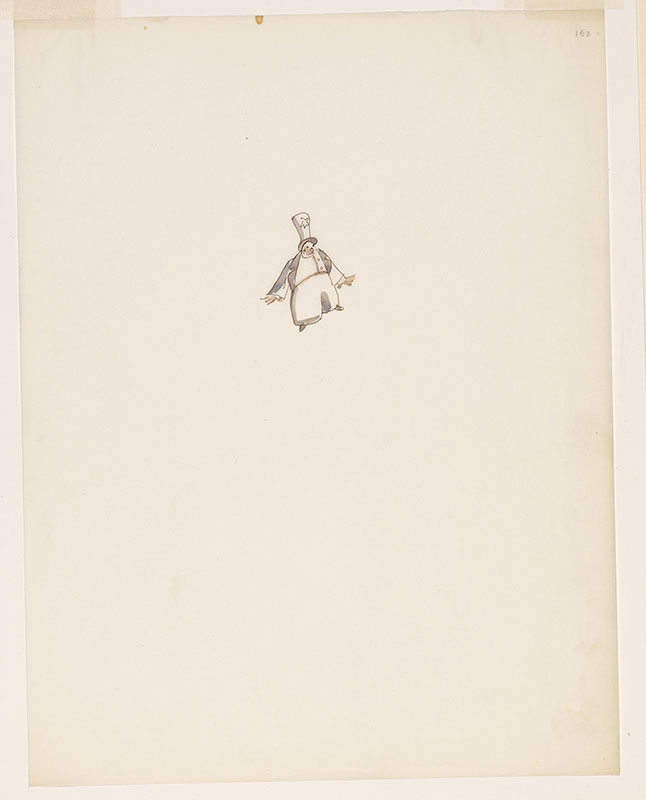
Personnage en costume portant un chapeau haut-de-forme
Purchased on the Elisabeth Ball Fund, 1968
MA 2592.15
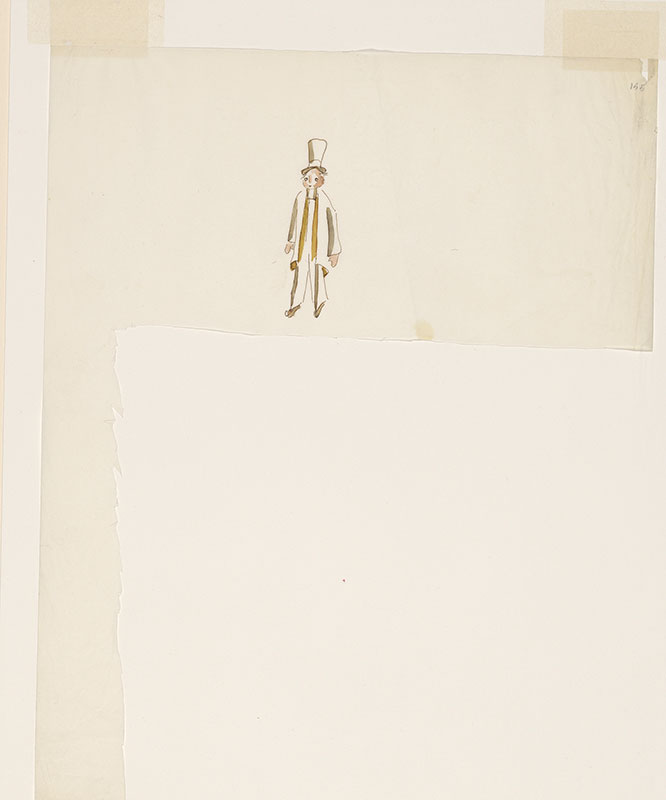
Personnage en costume, portant un chapeau haut-de-forme
Purchased on the Elisabeth Ball Fund, 1968
MA 4717.2
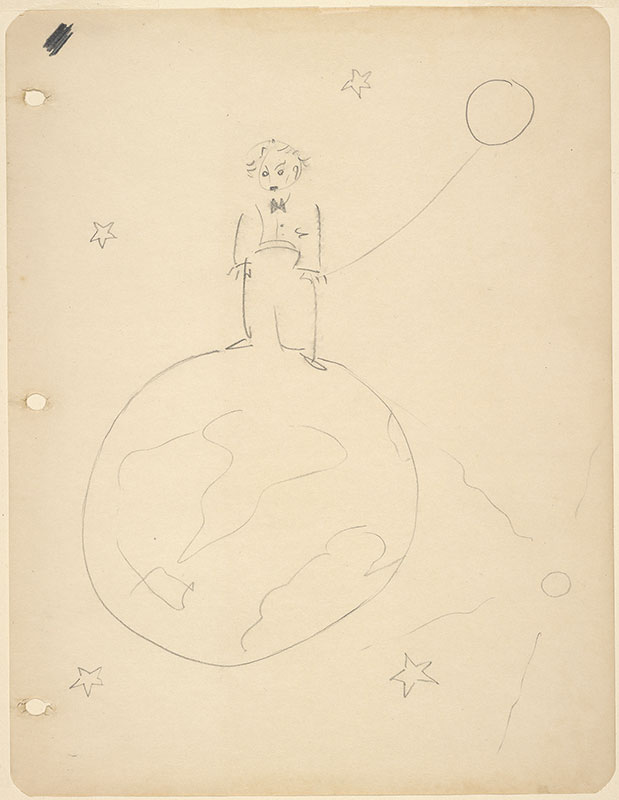
Pencil sketch of "the little Prince"
Gift; Mrs. Henry Darbee; 1991
MA 4717.3
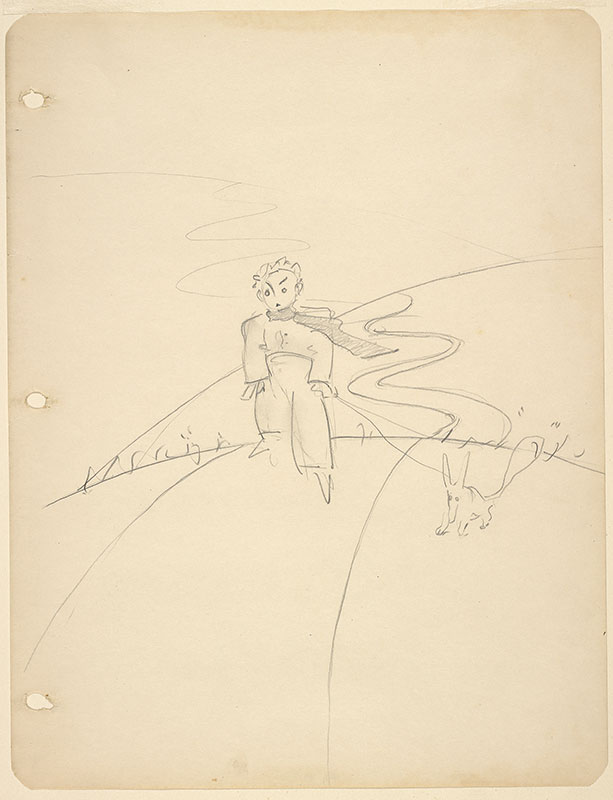
Pencil sketch of "the little Prince"
Gift; Mrs. Henry Darbee; 1991